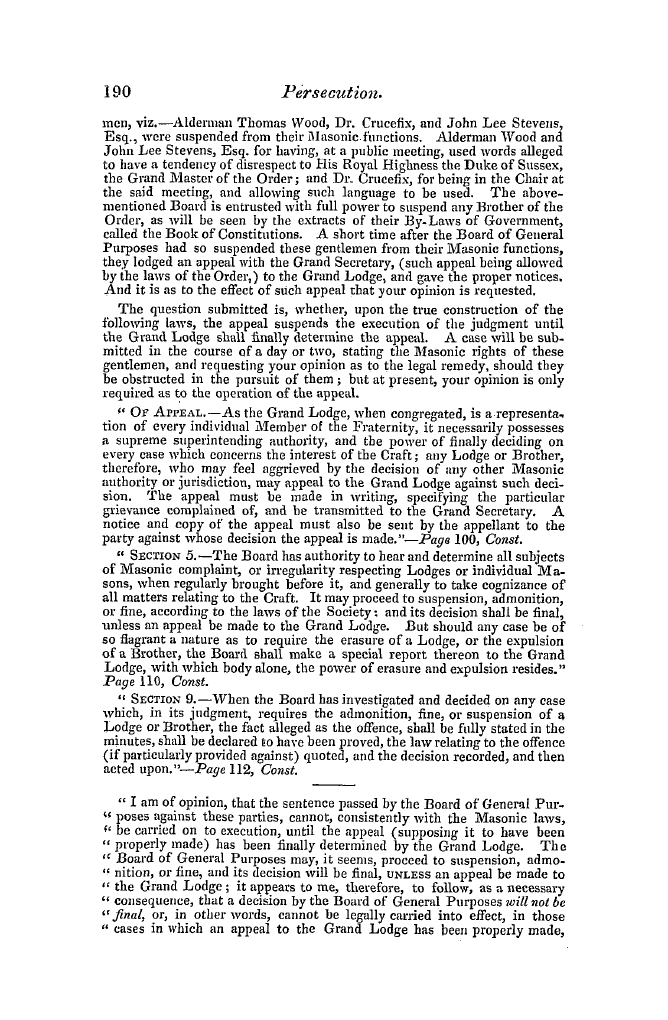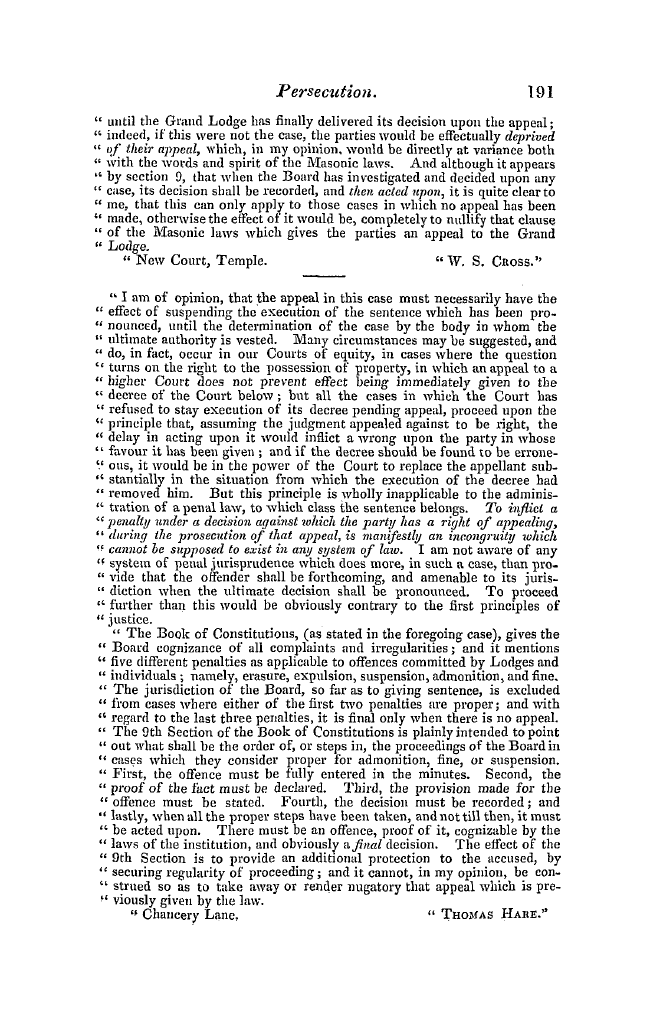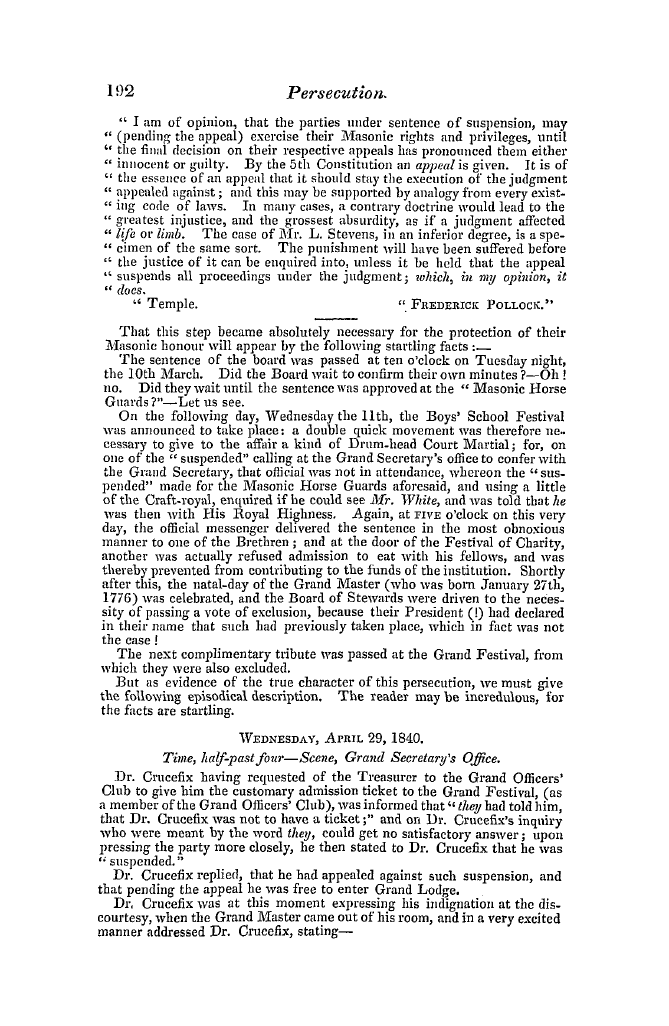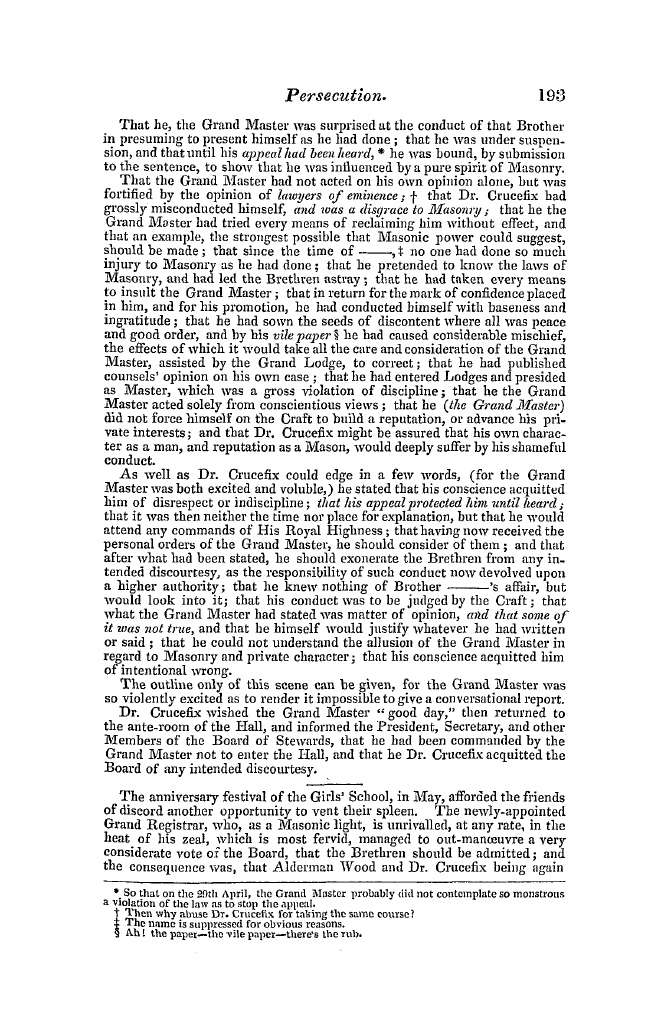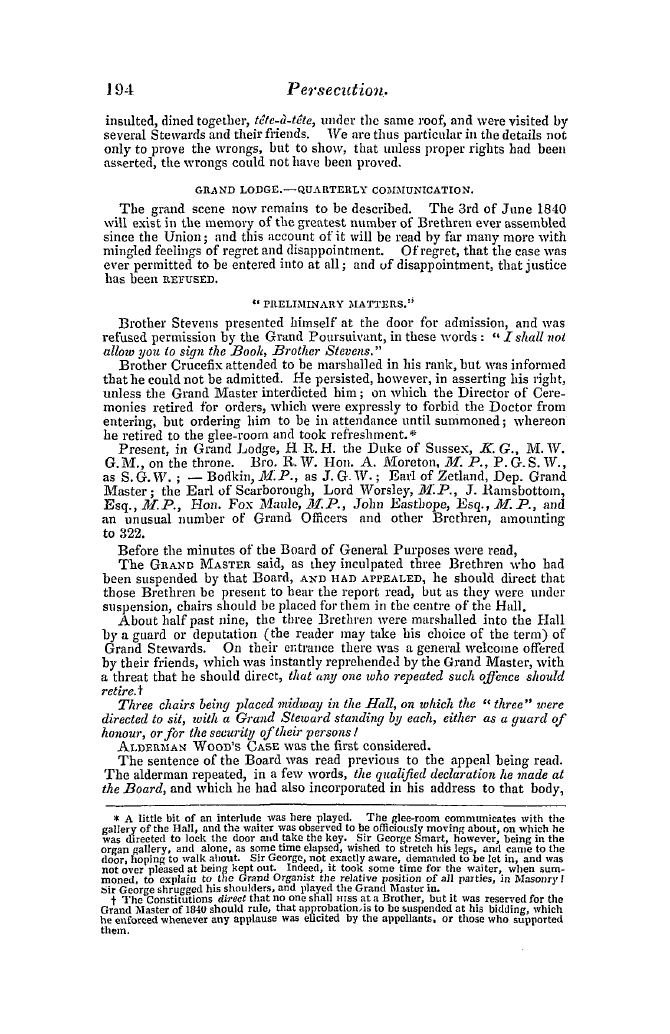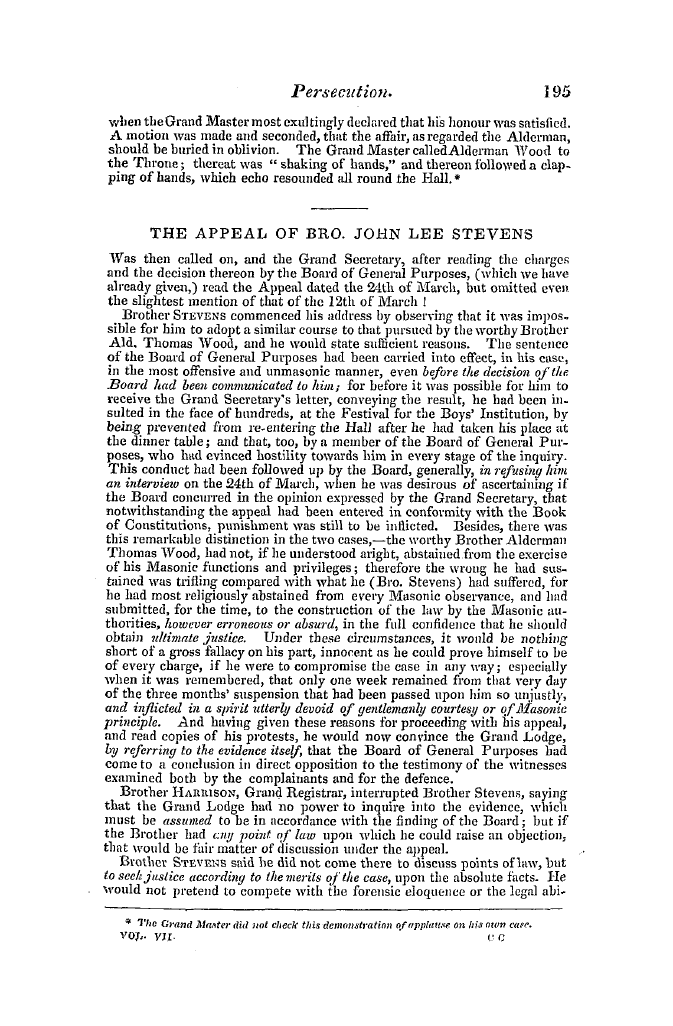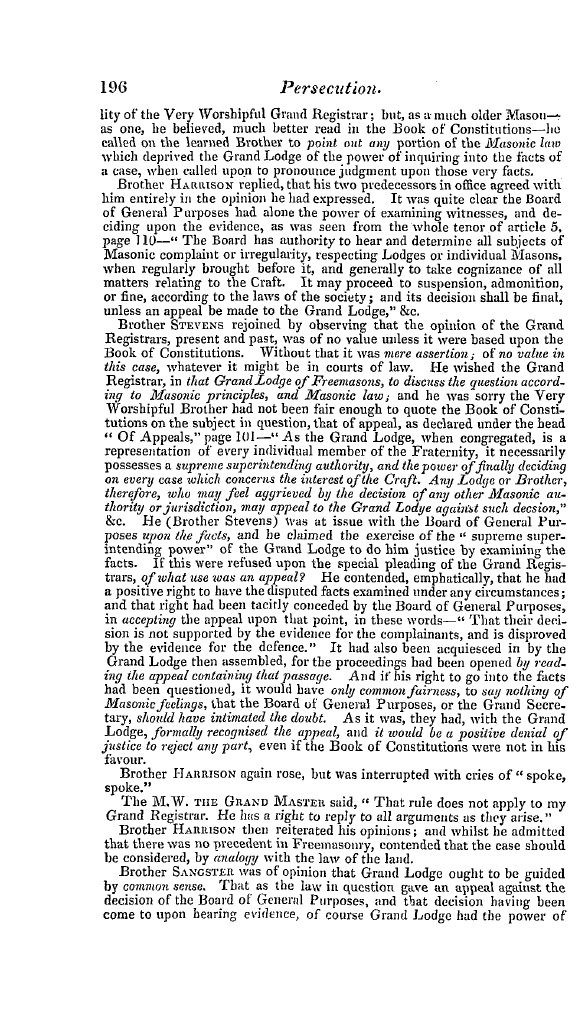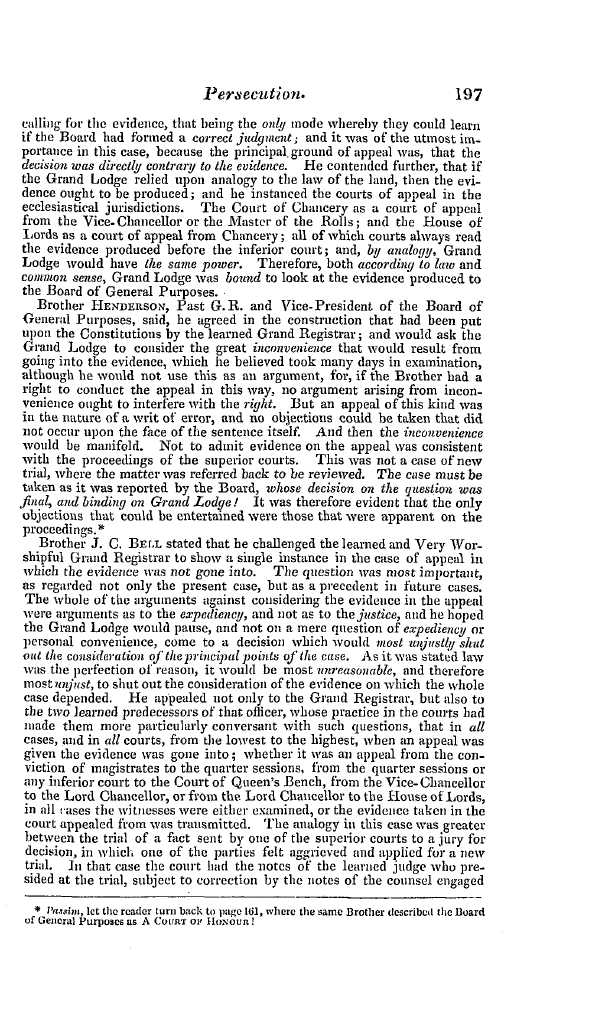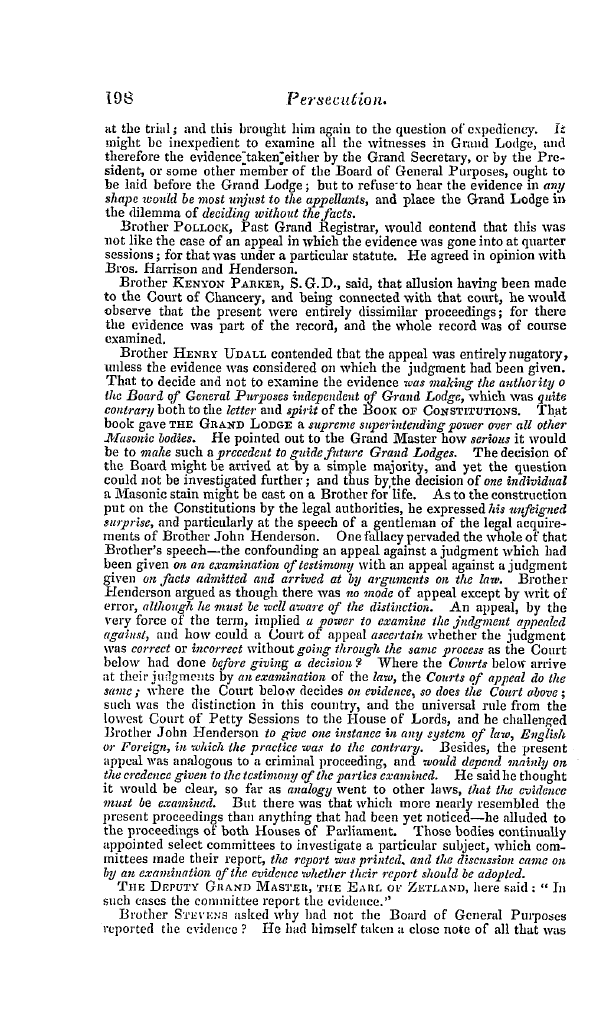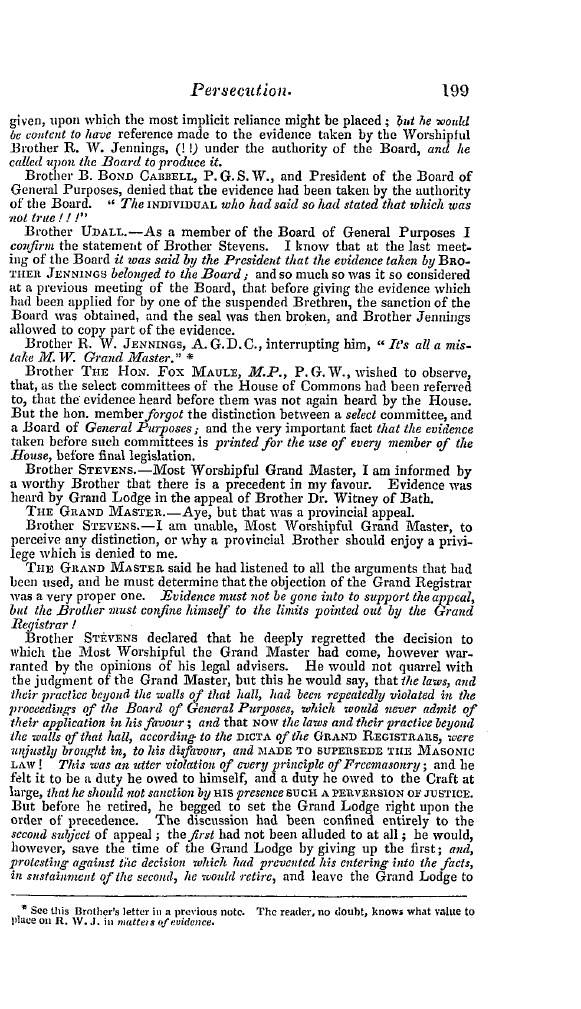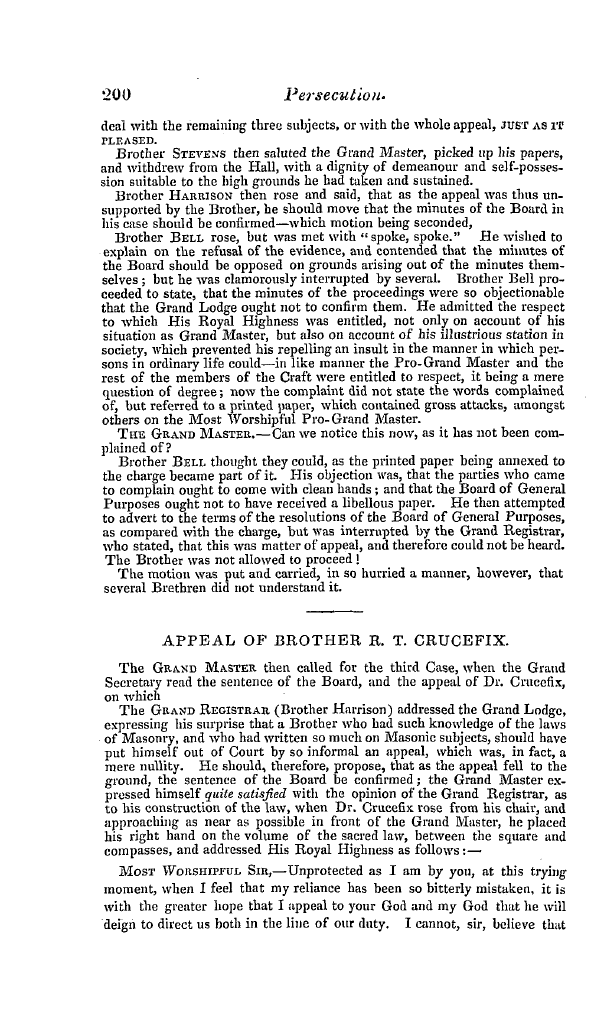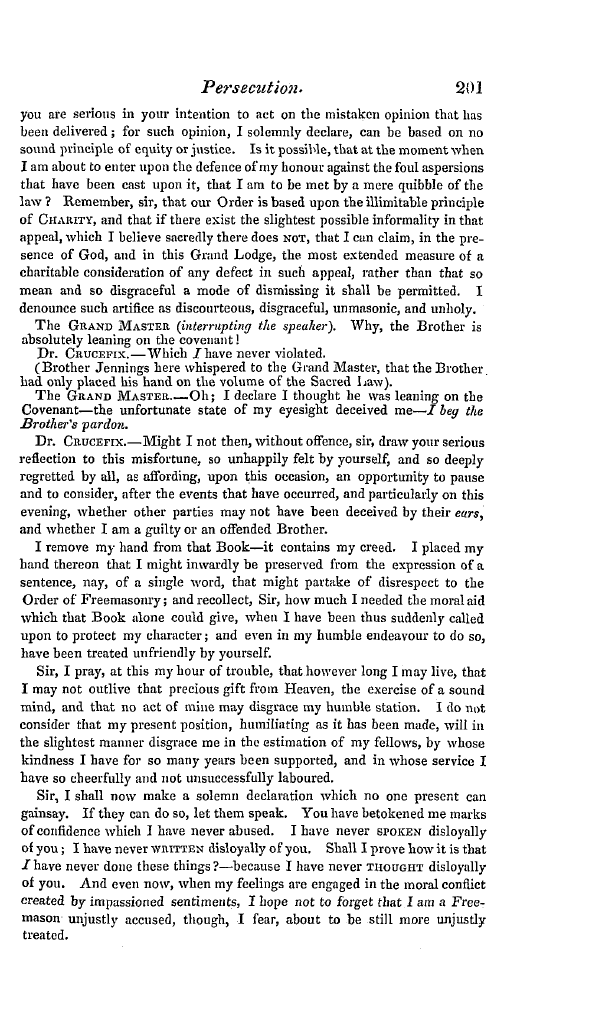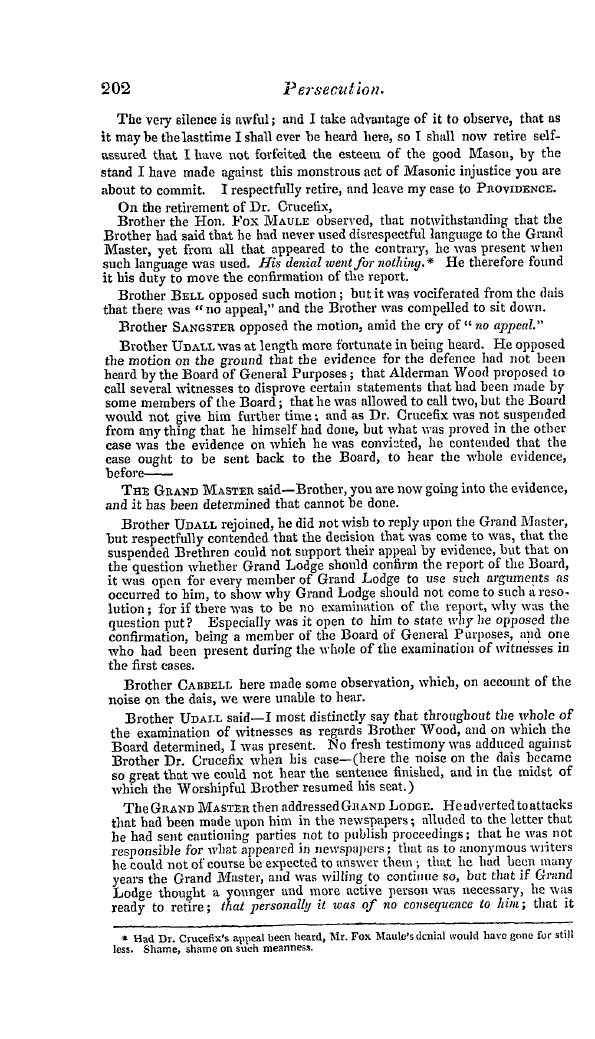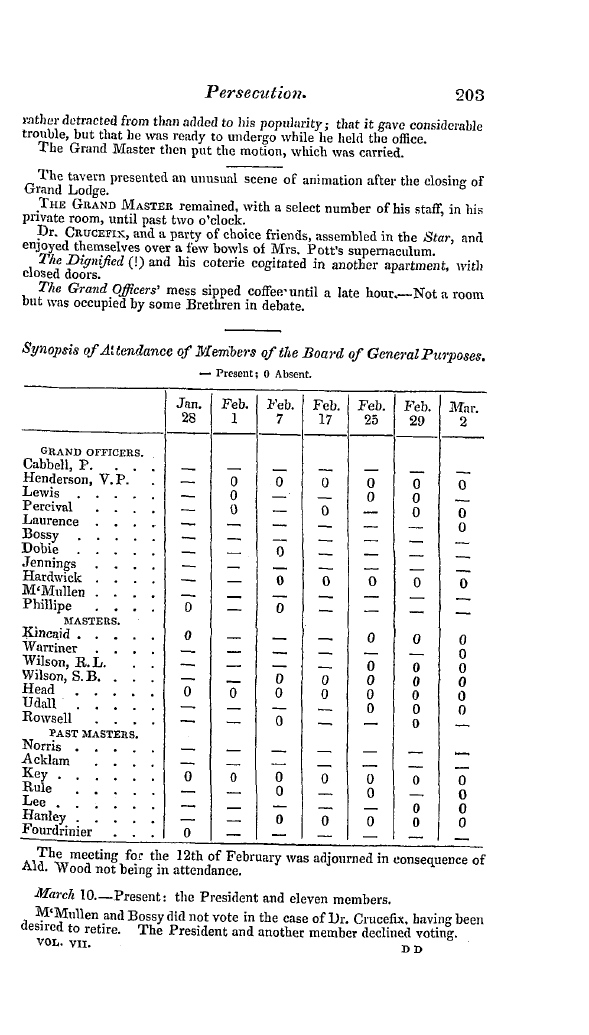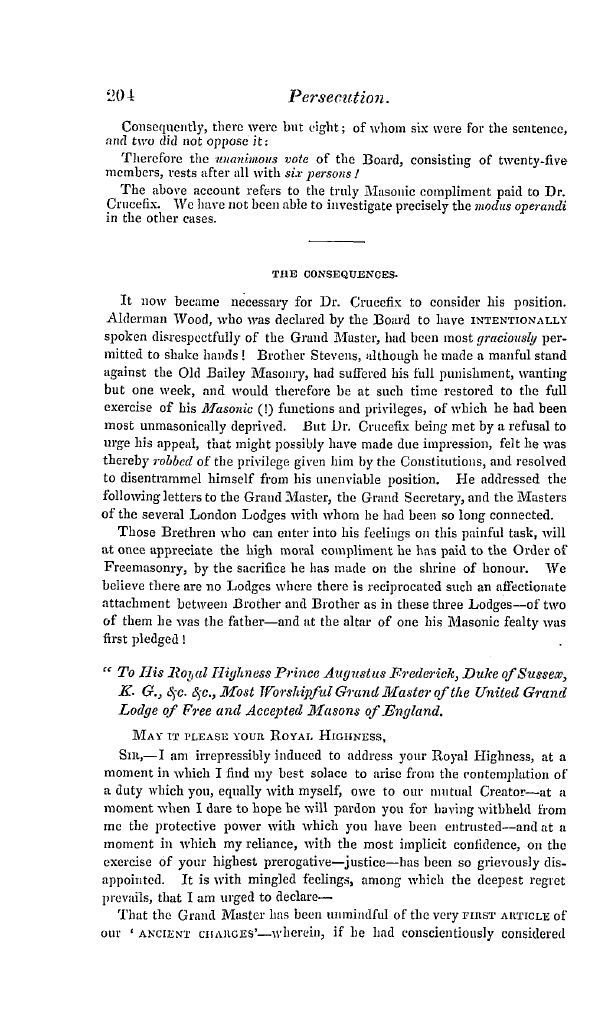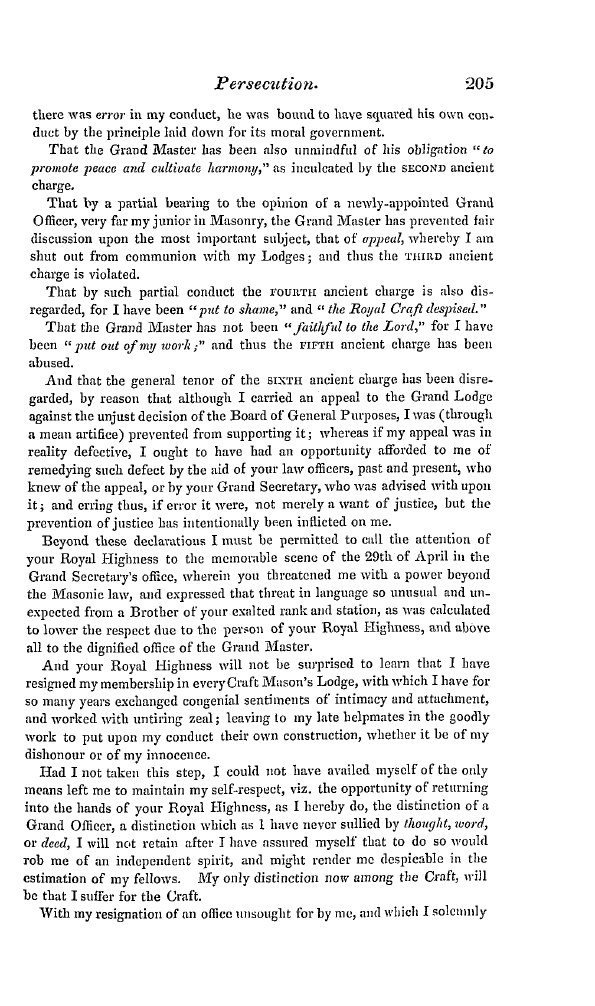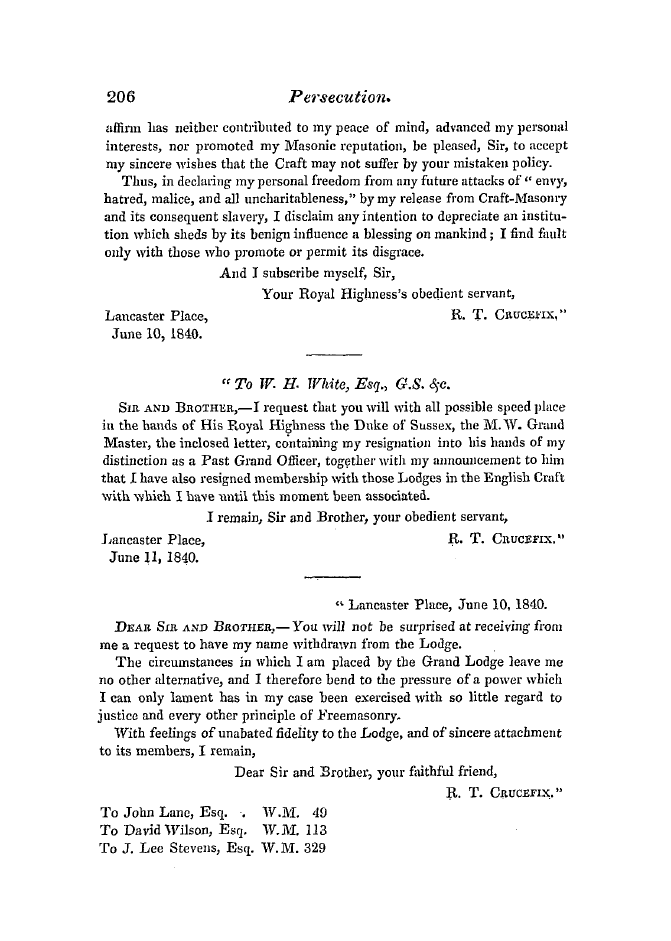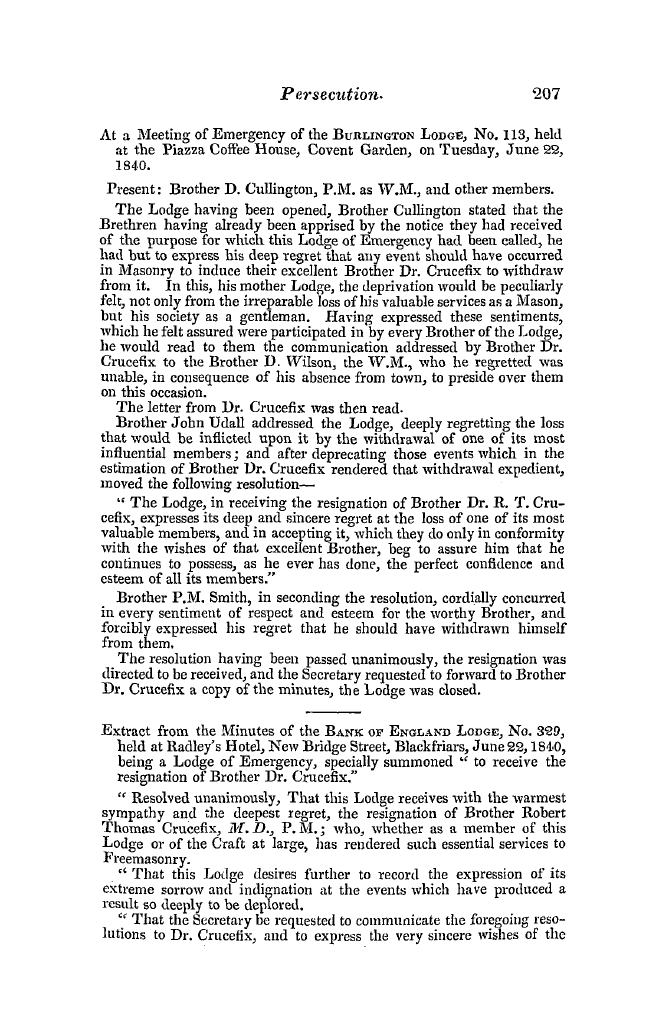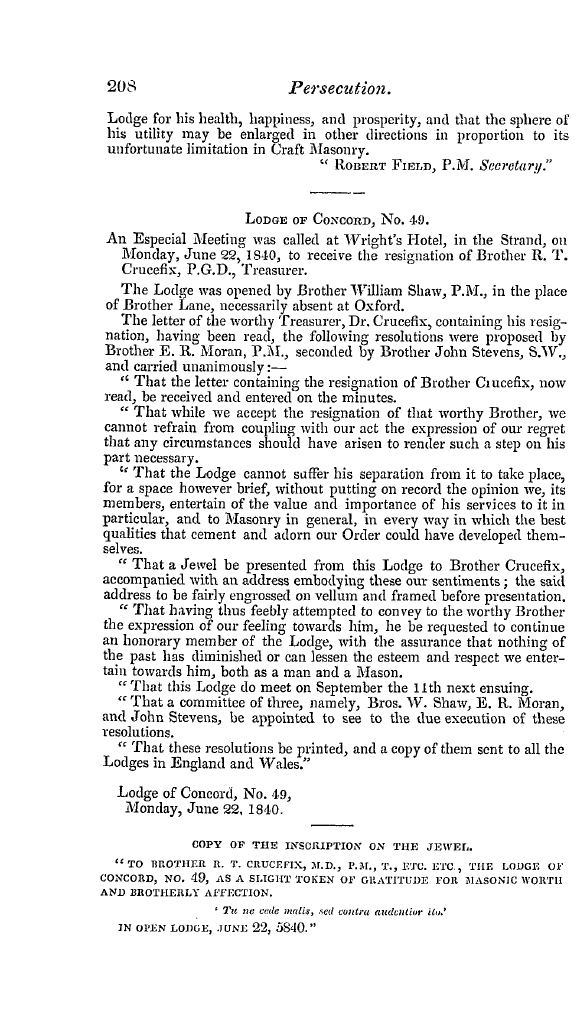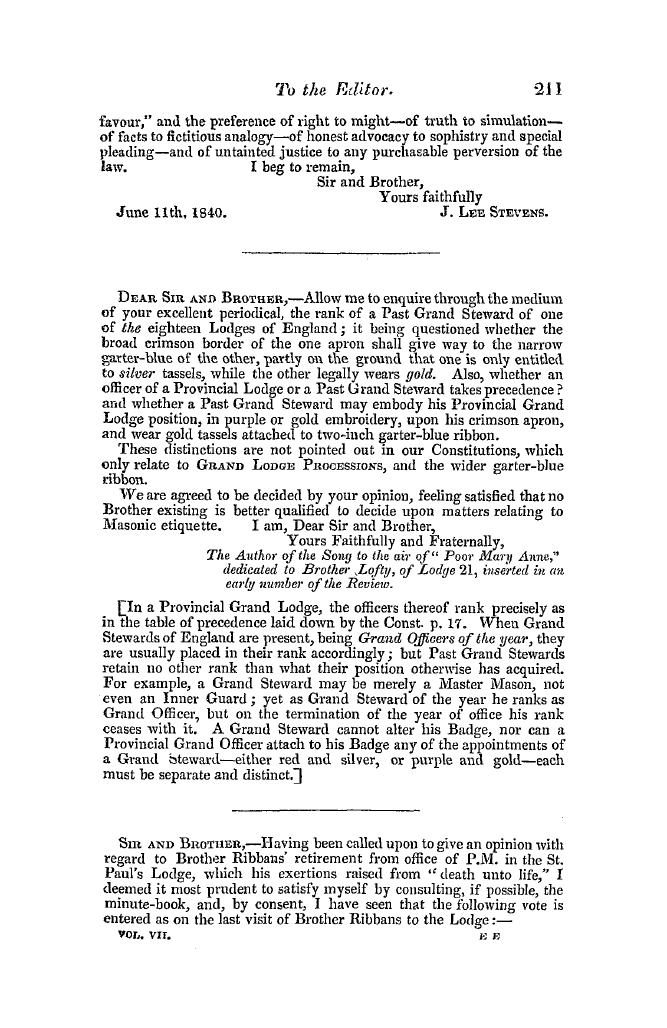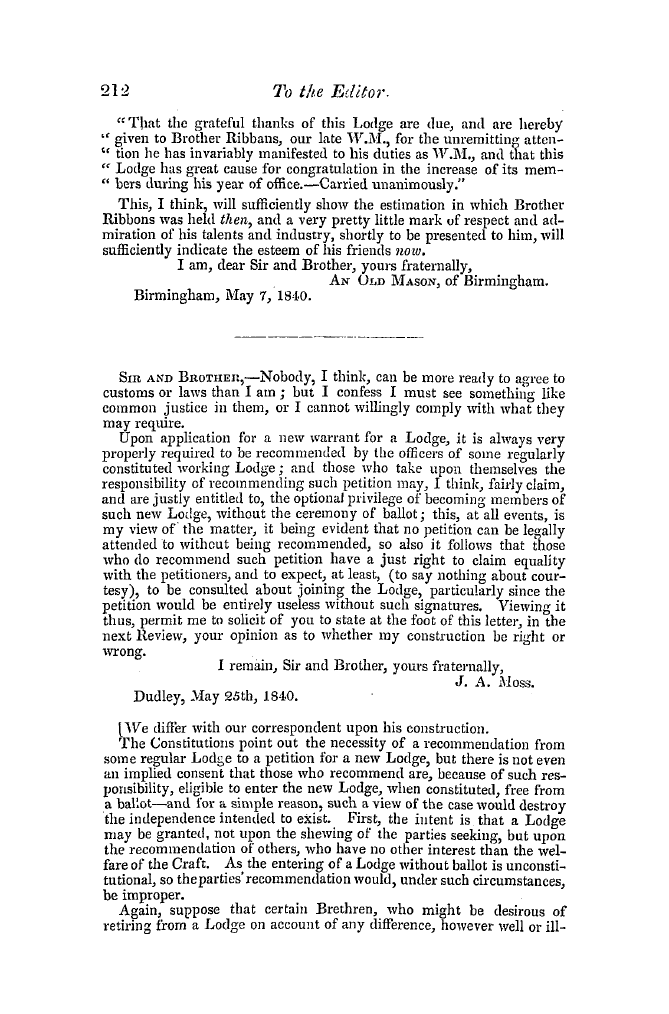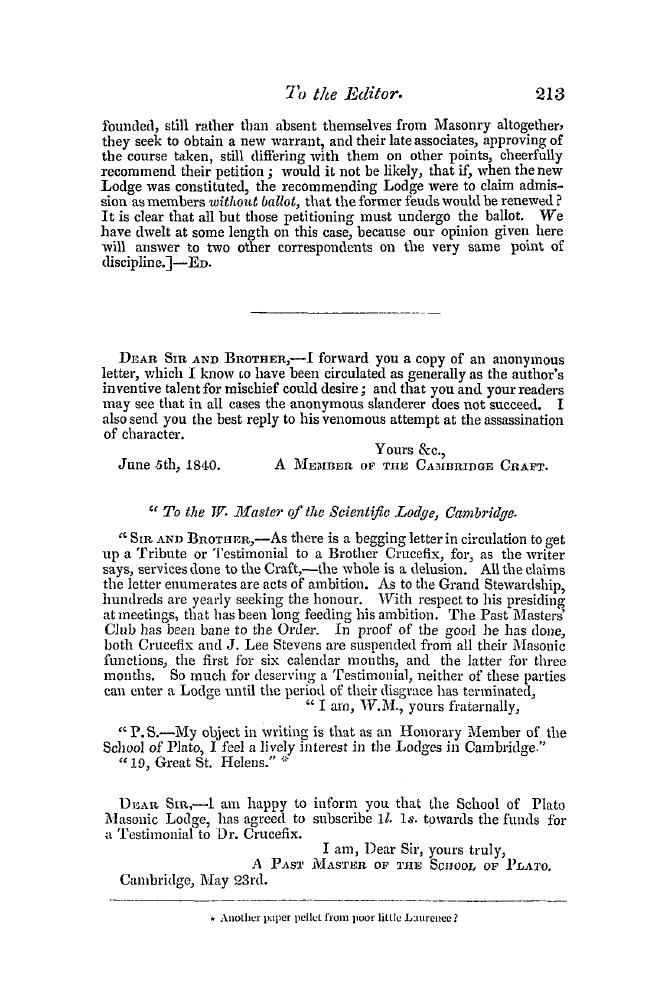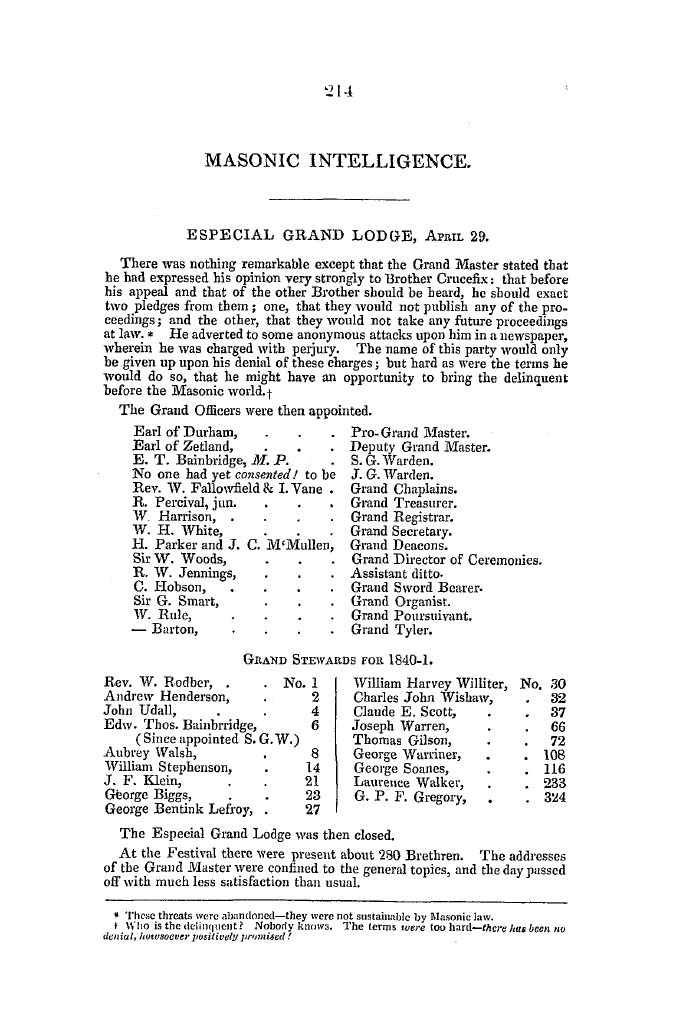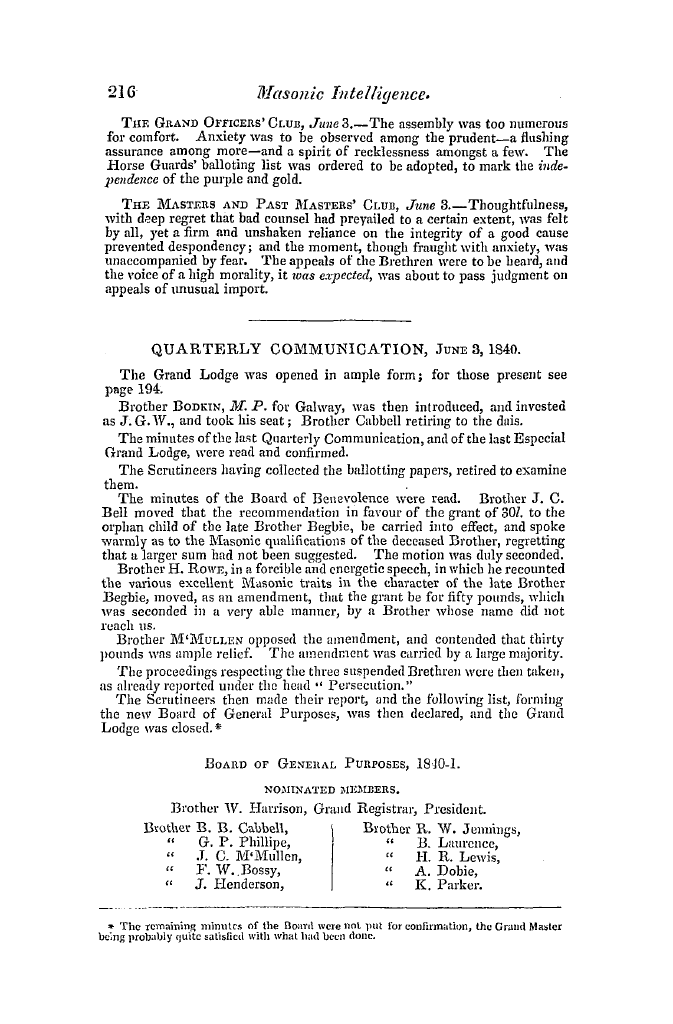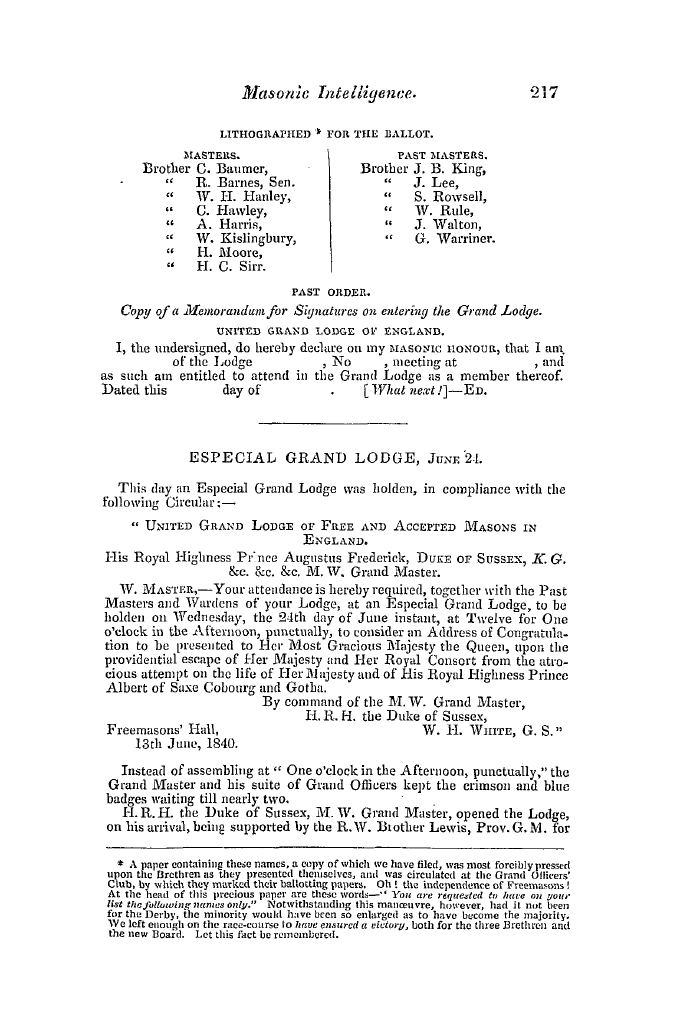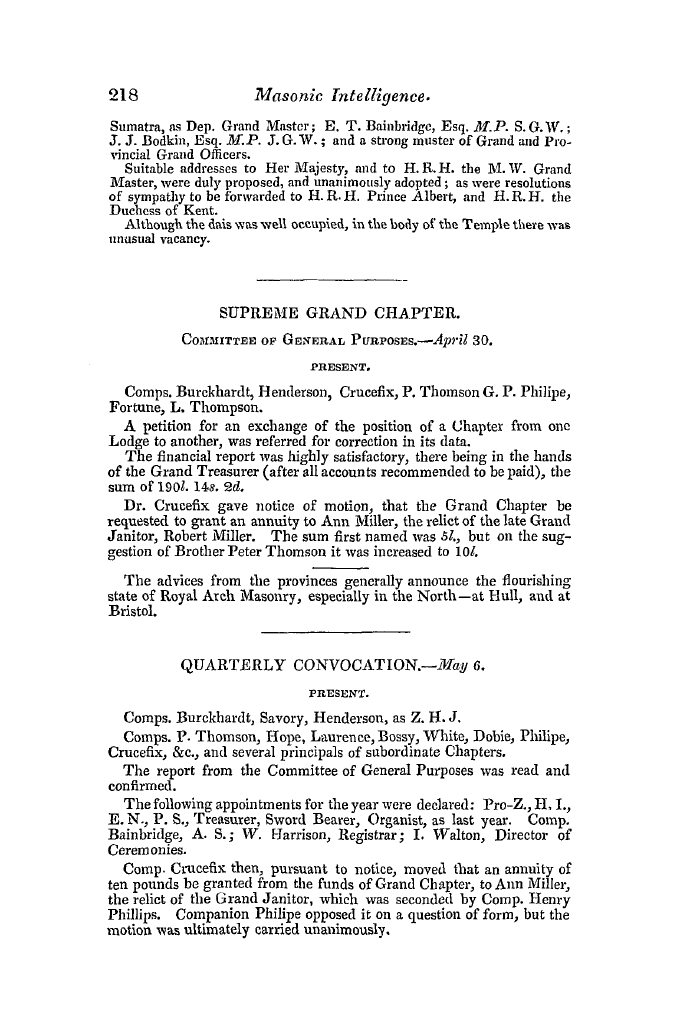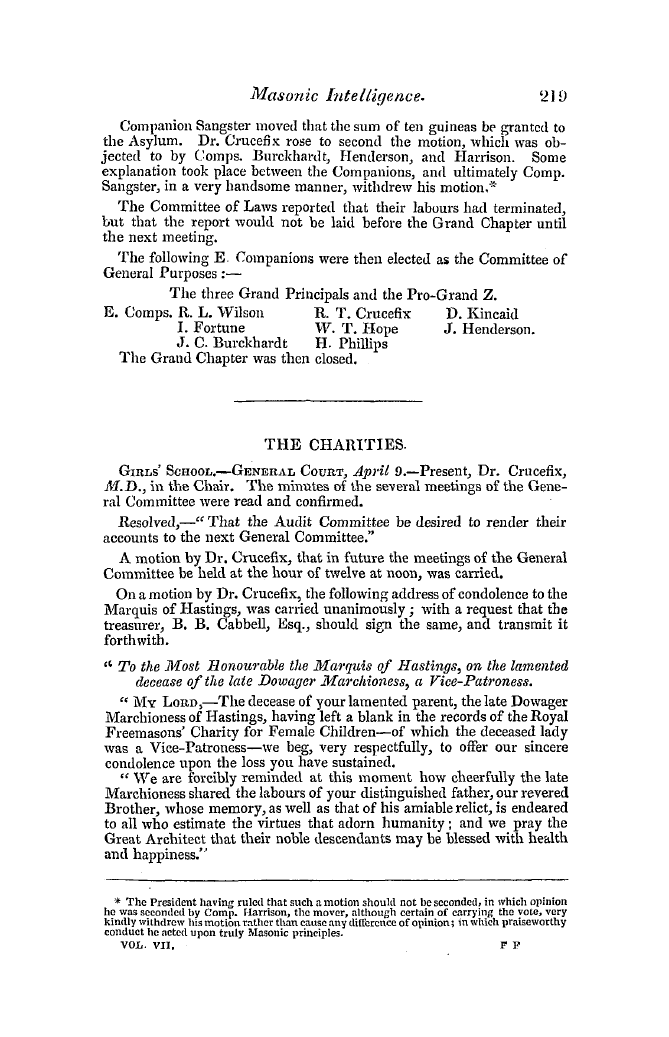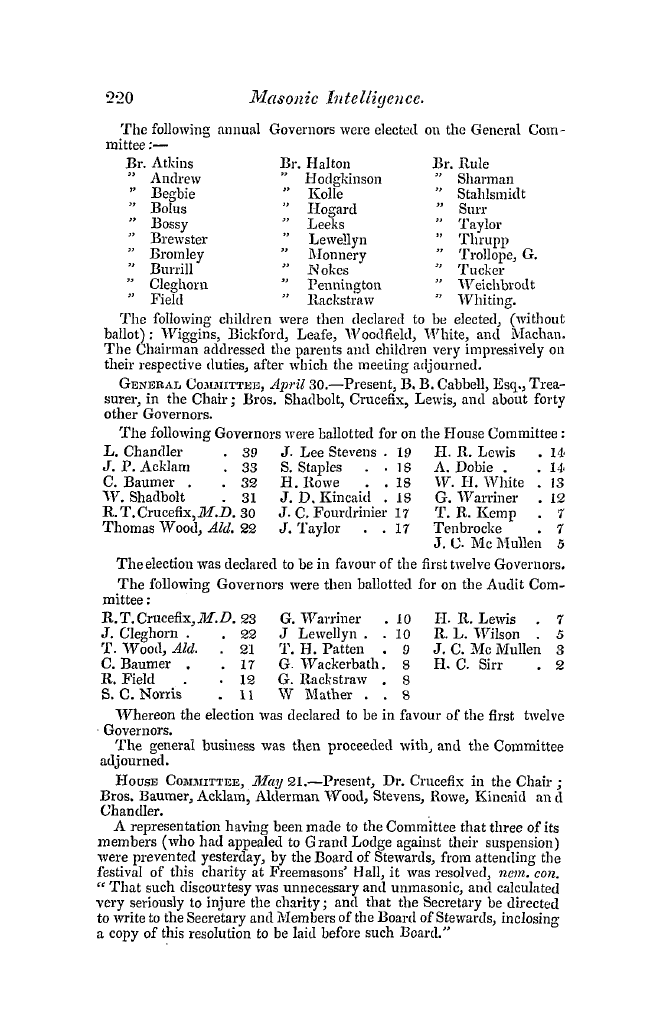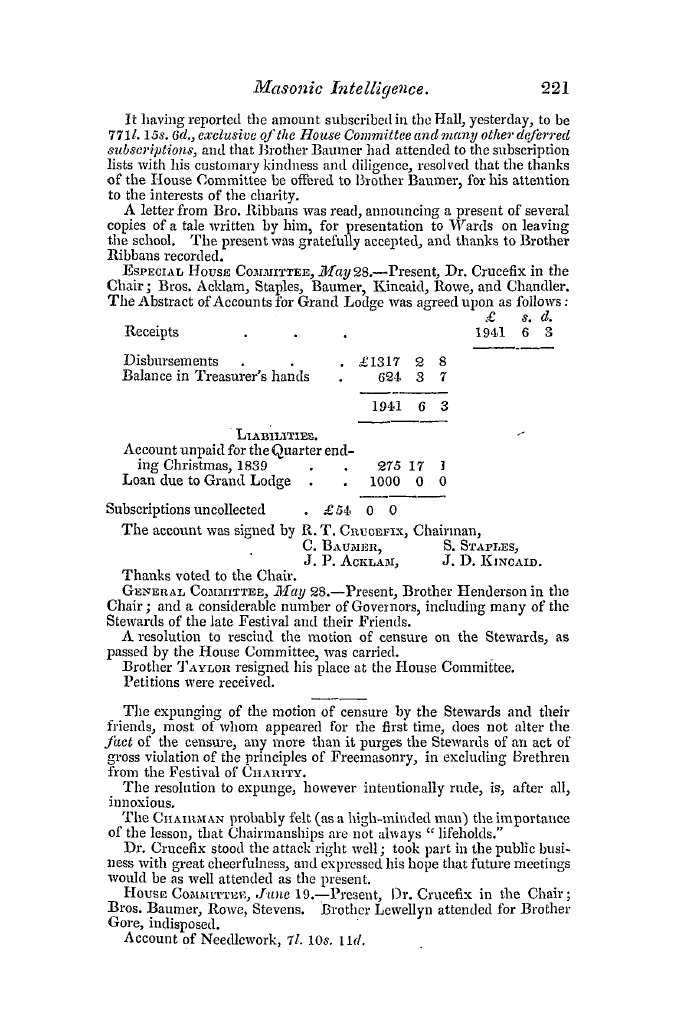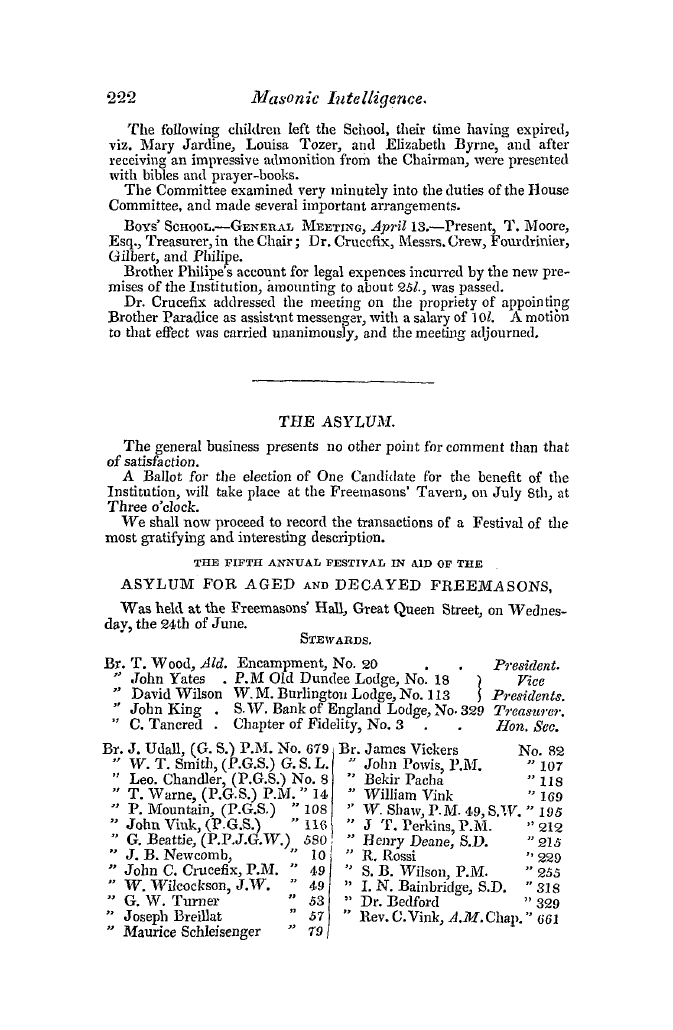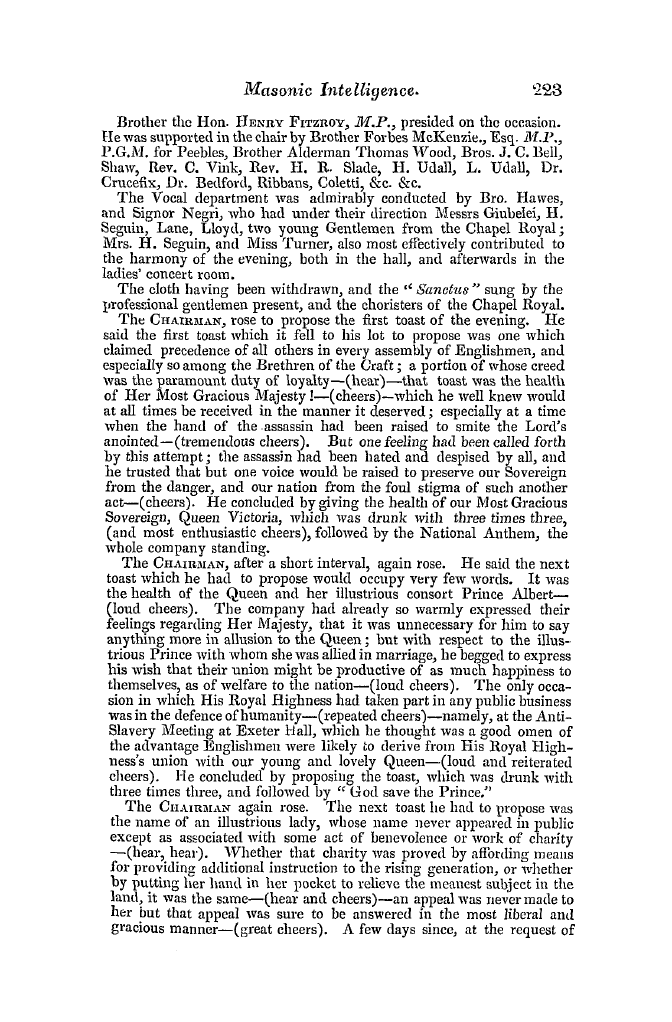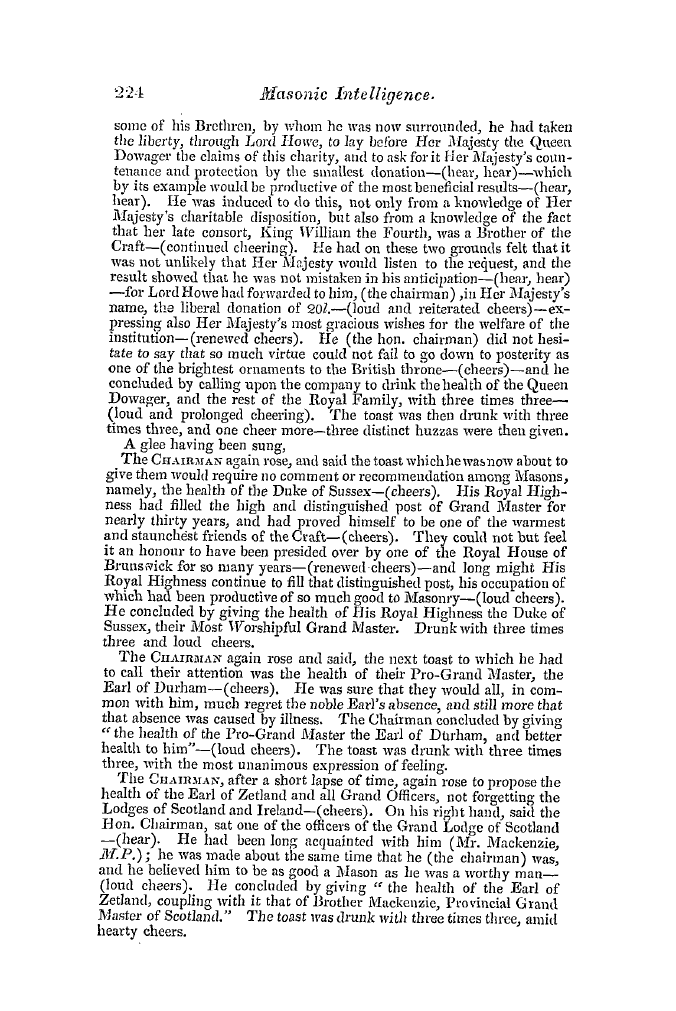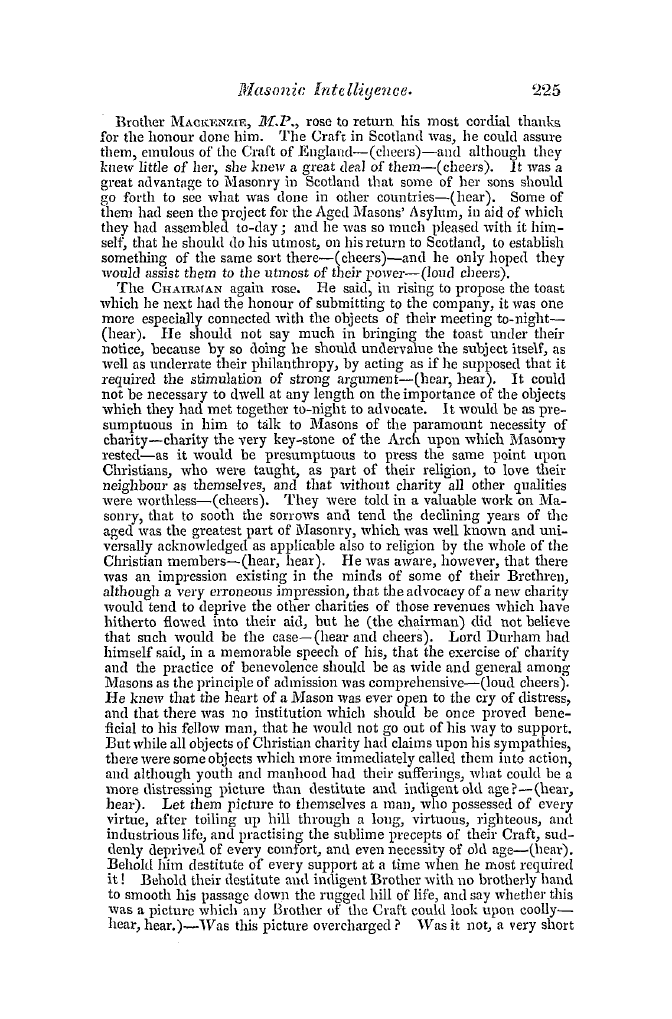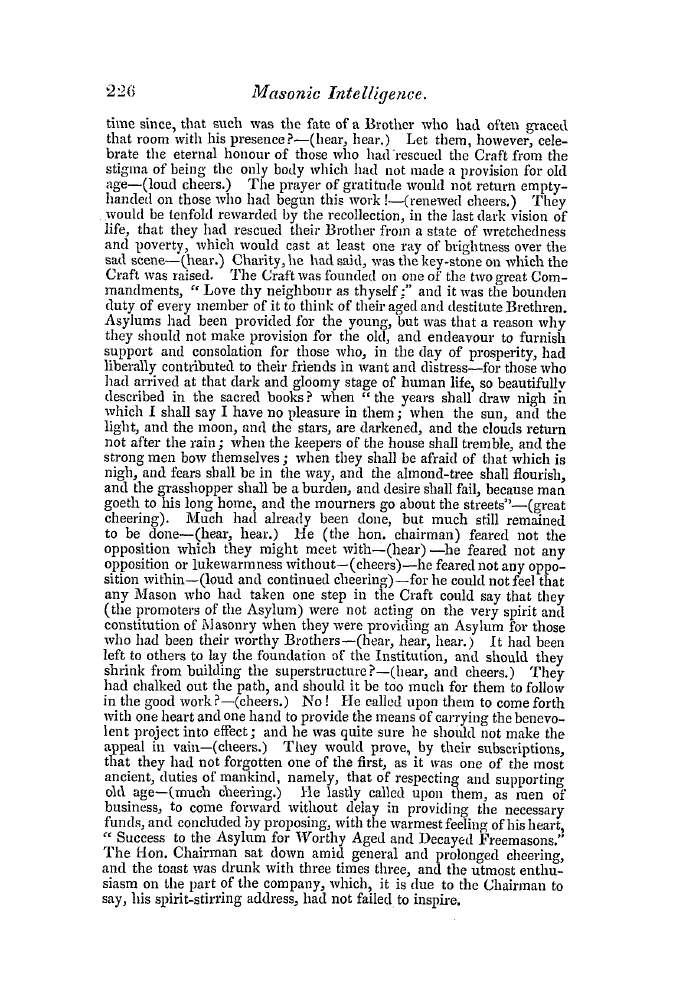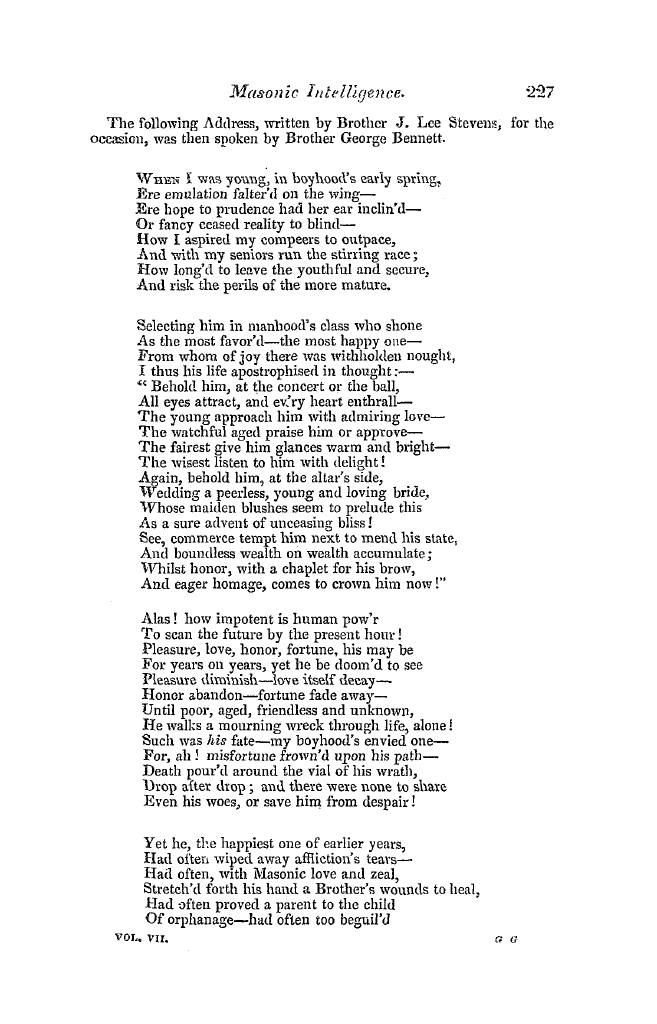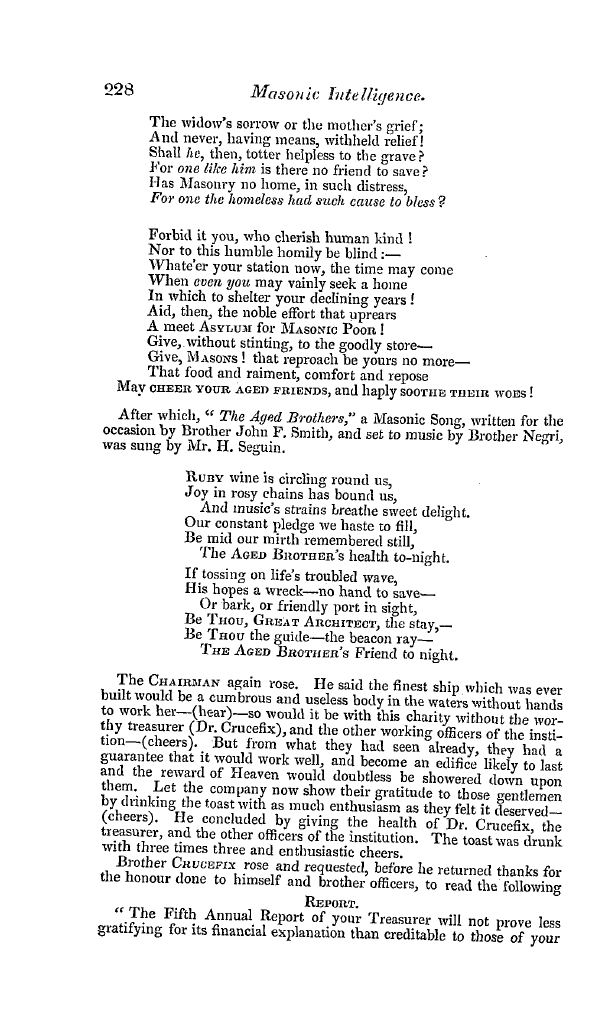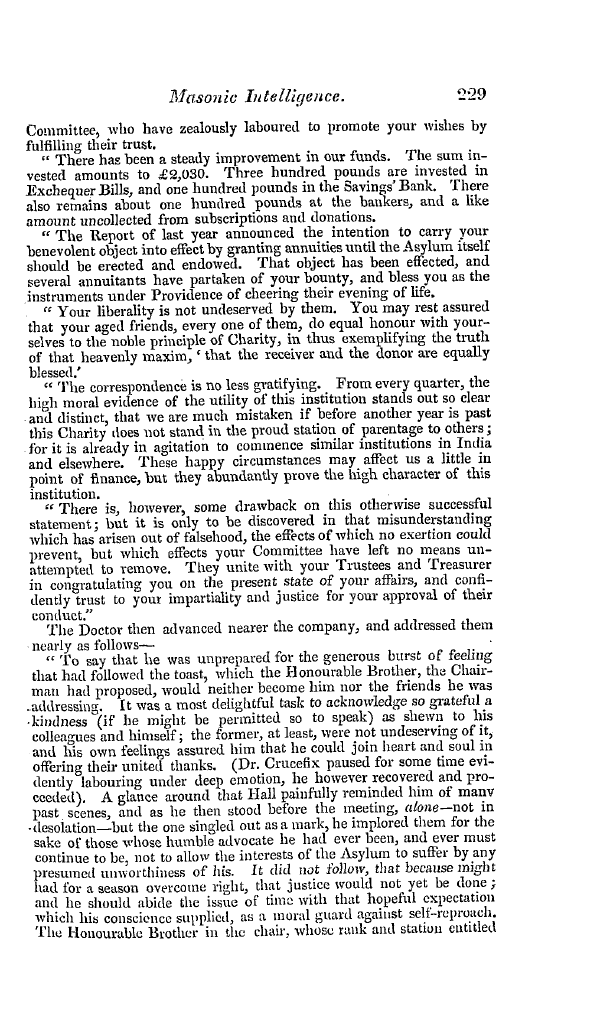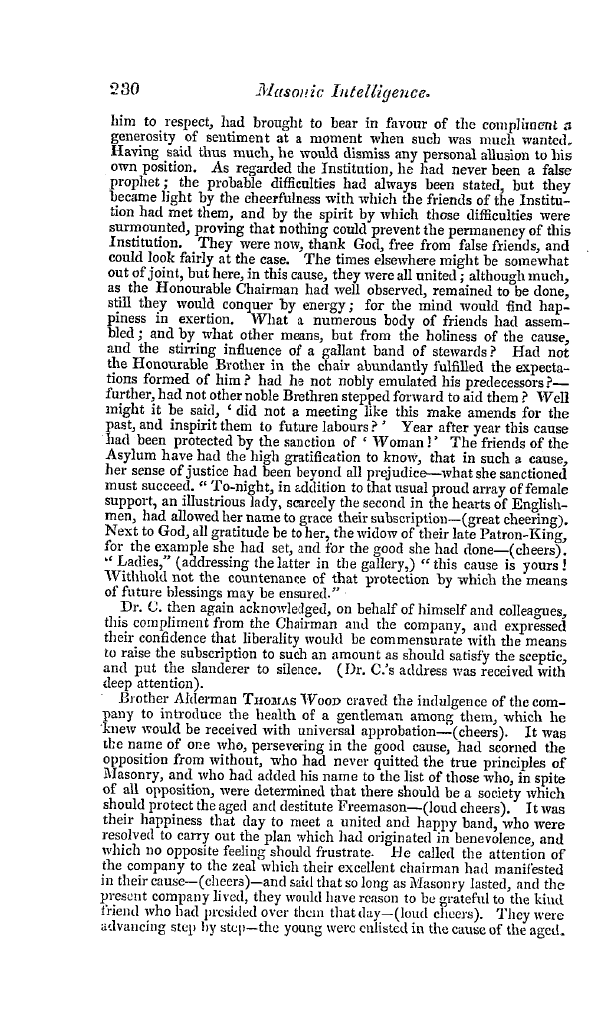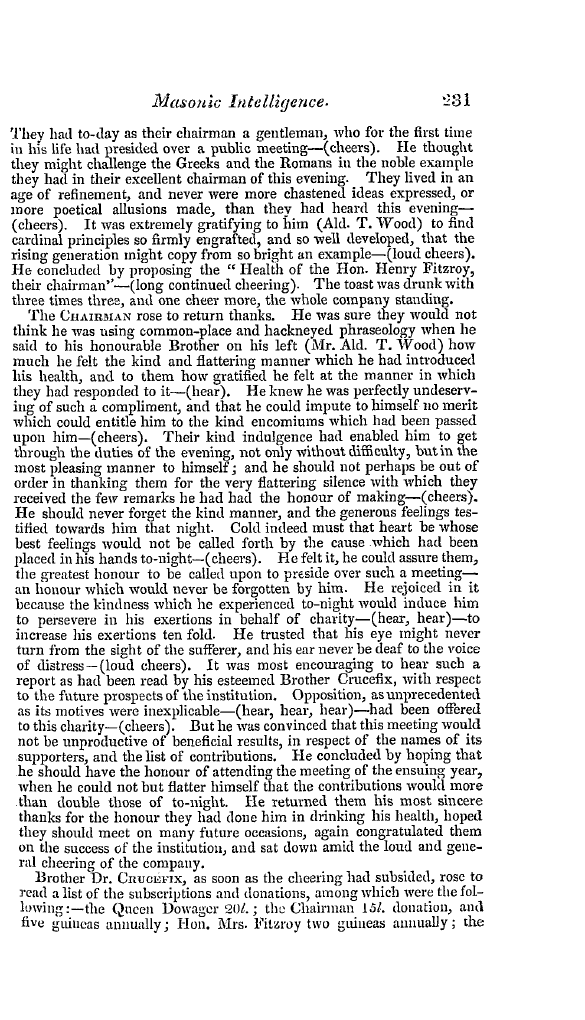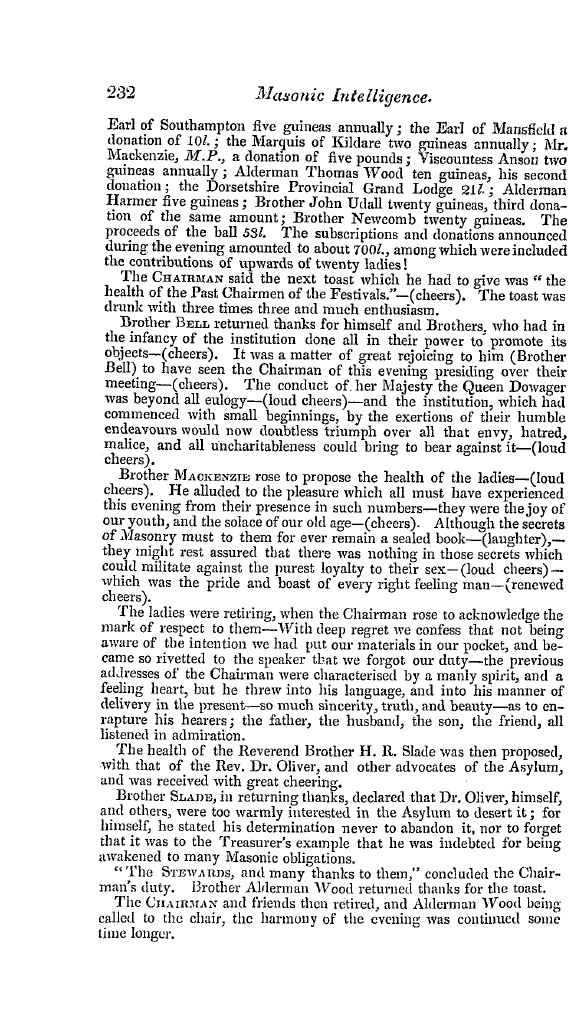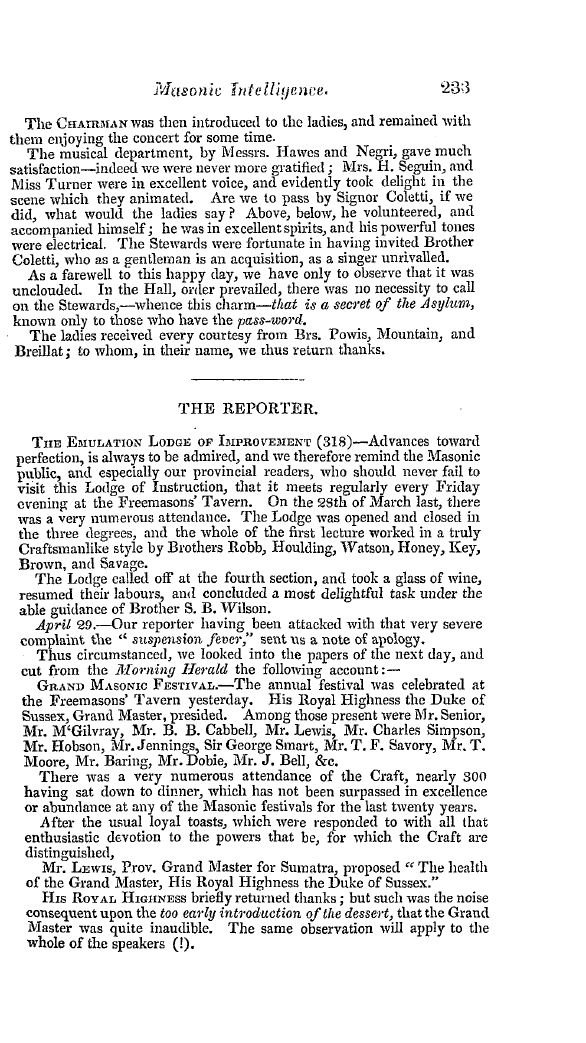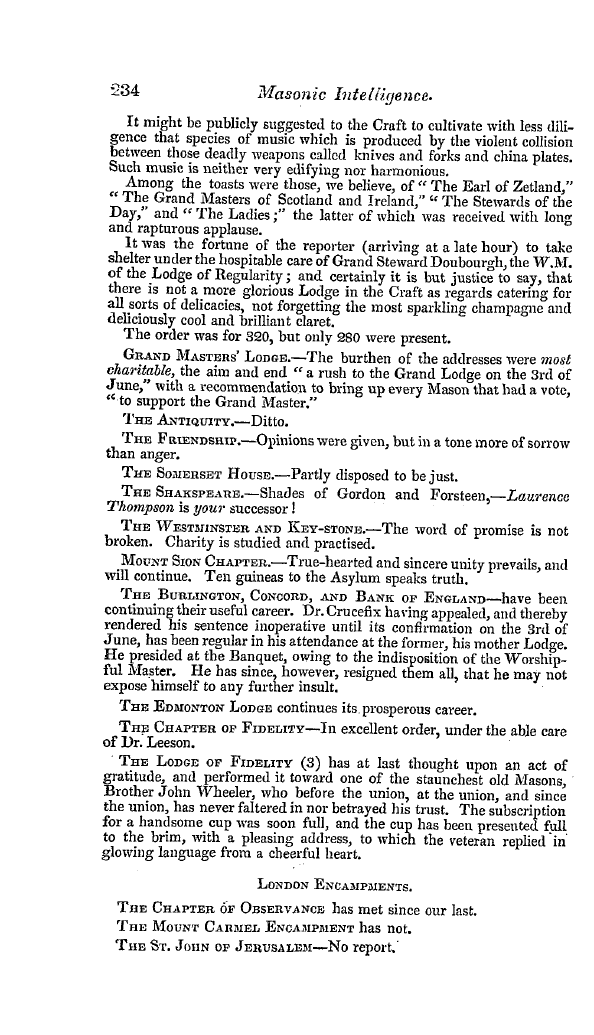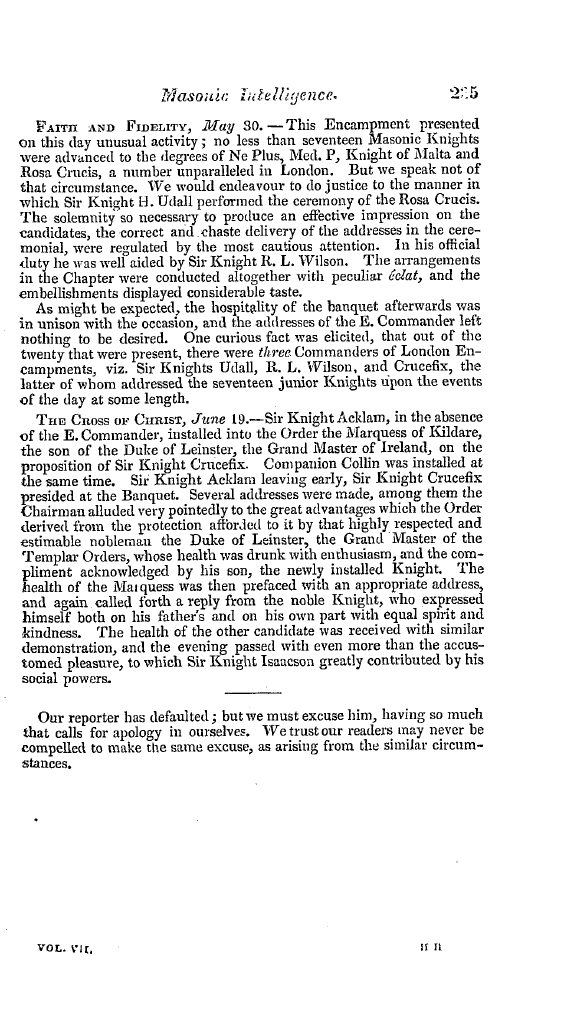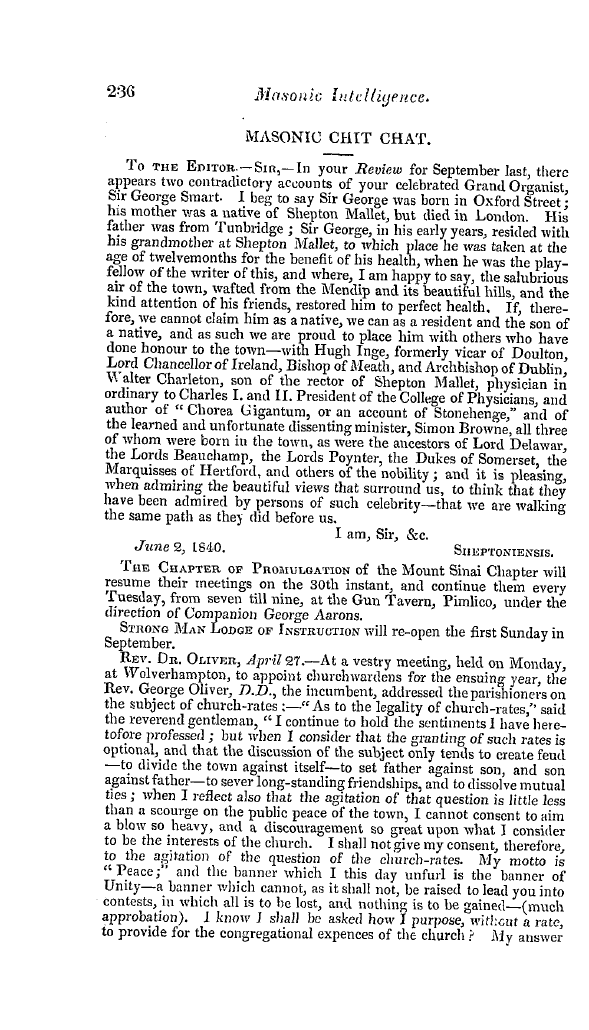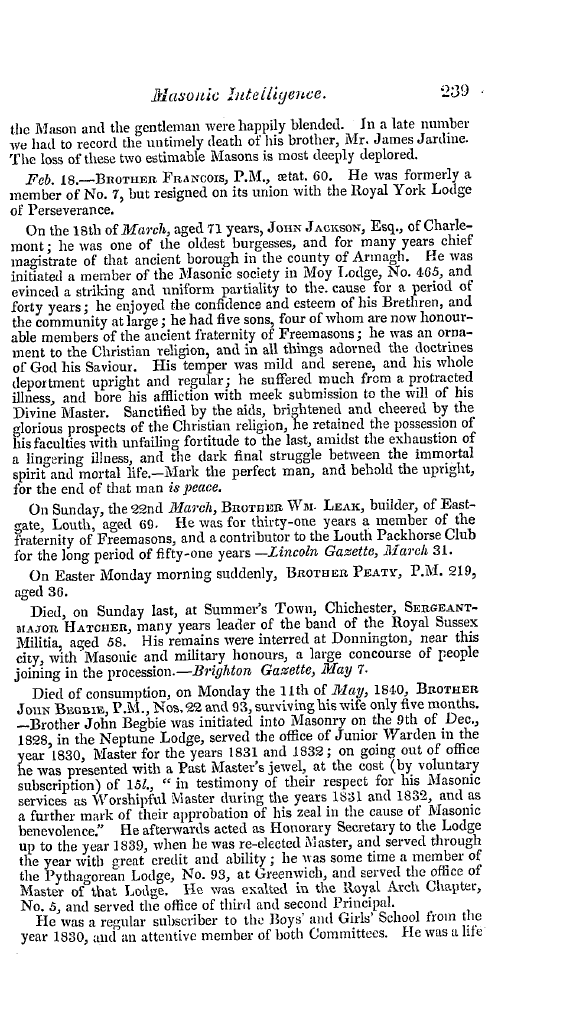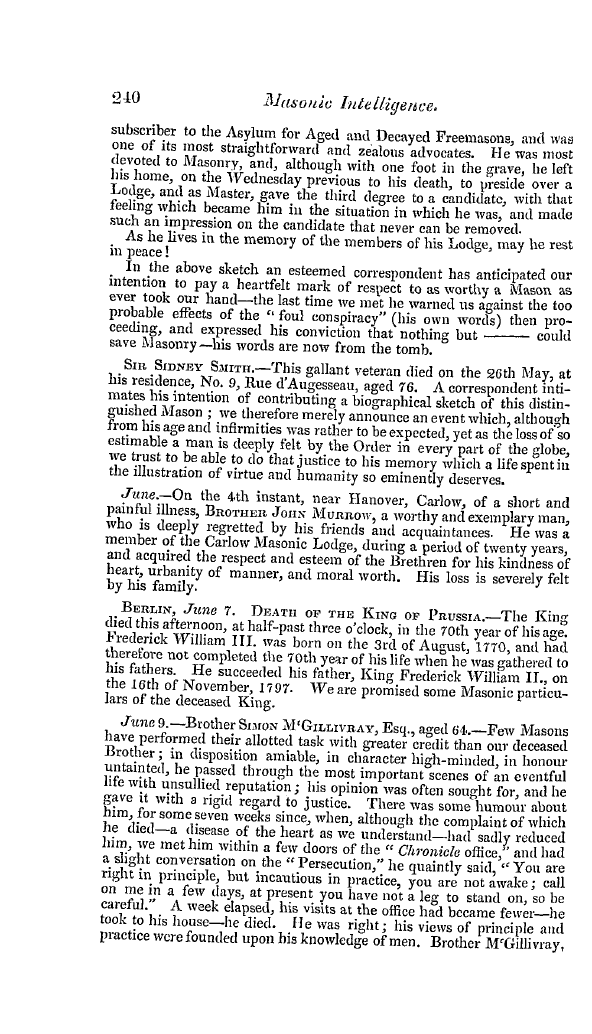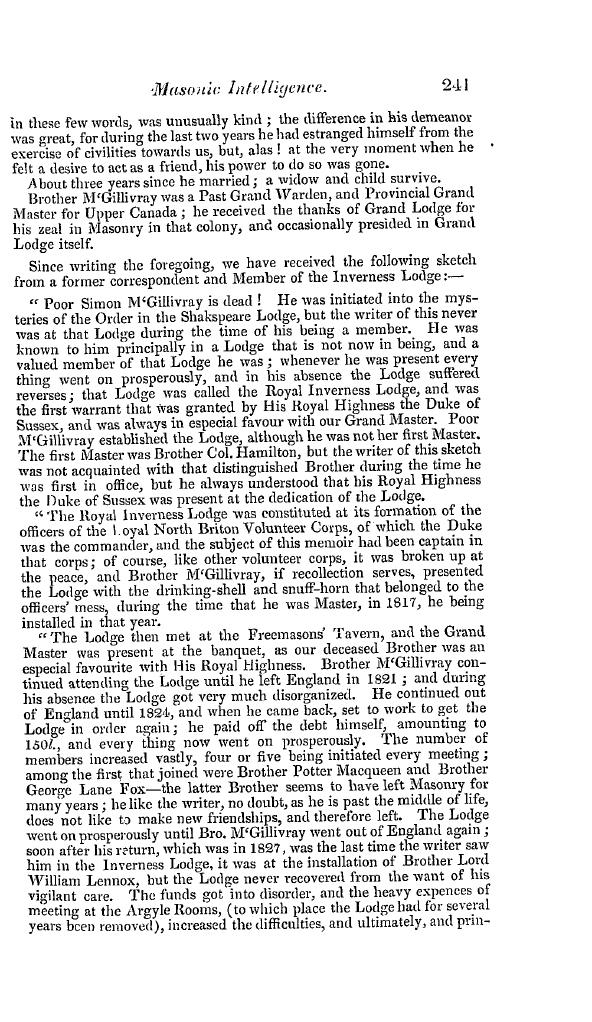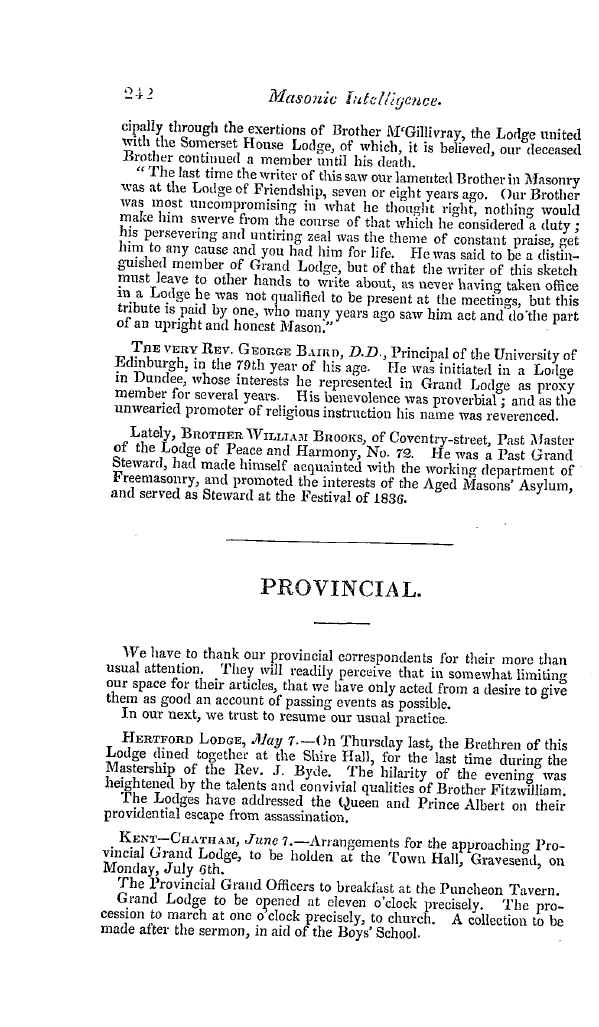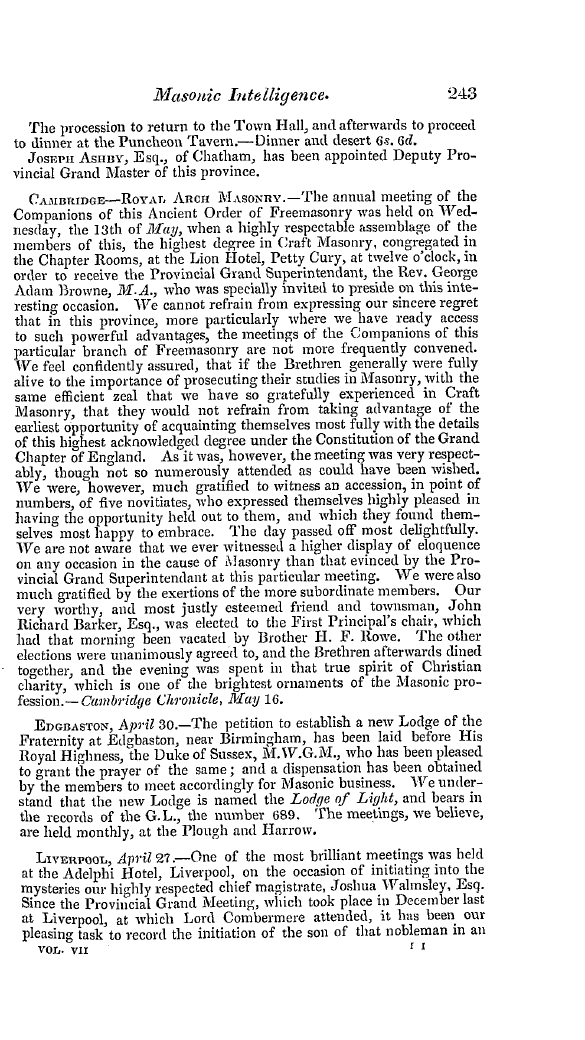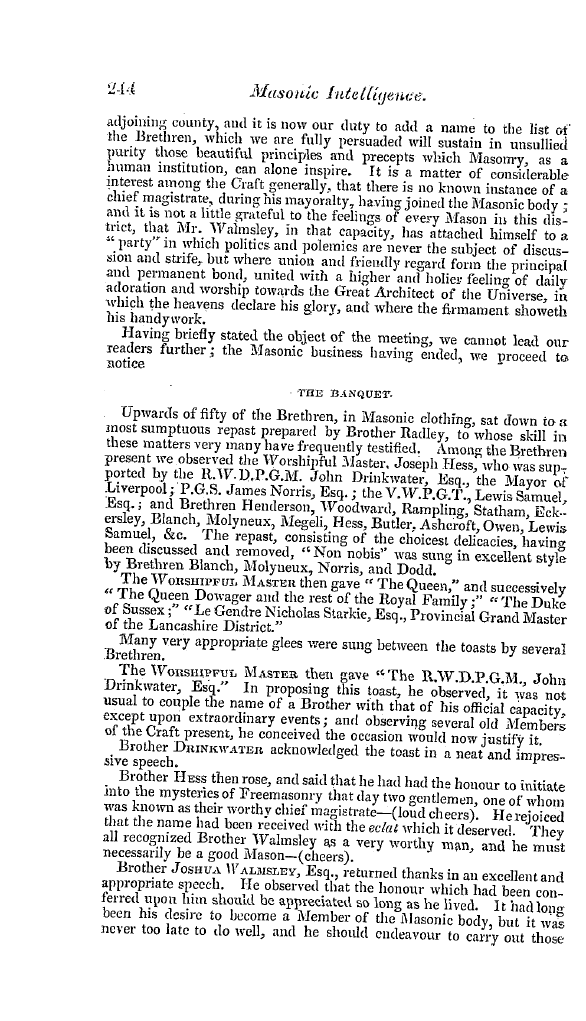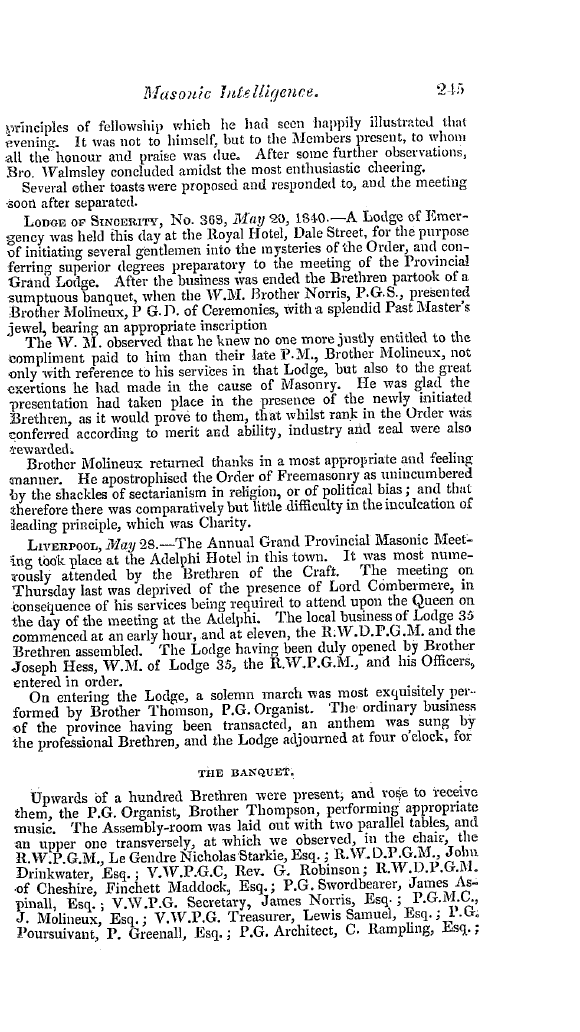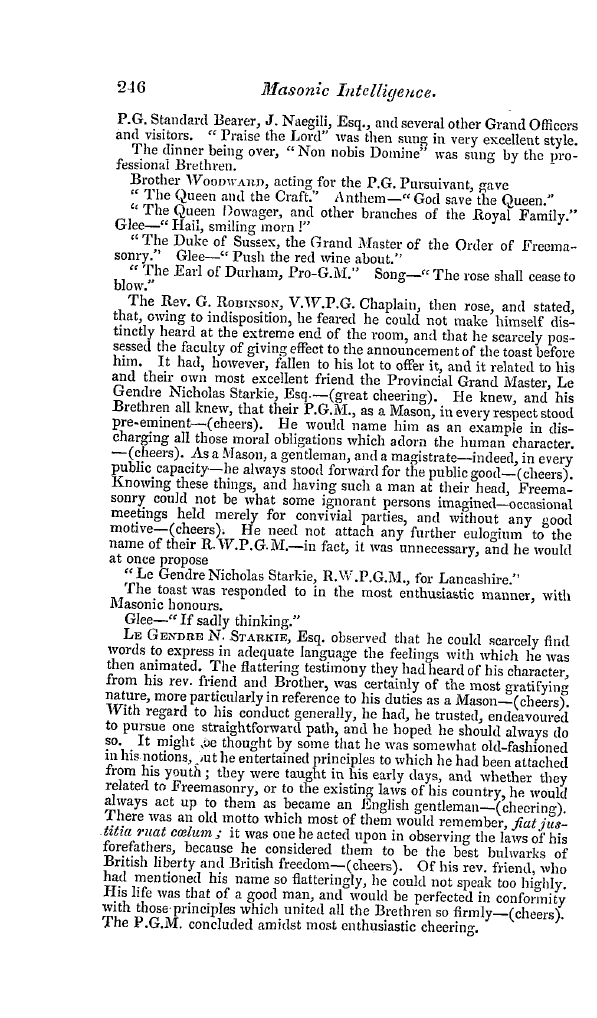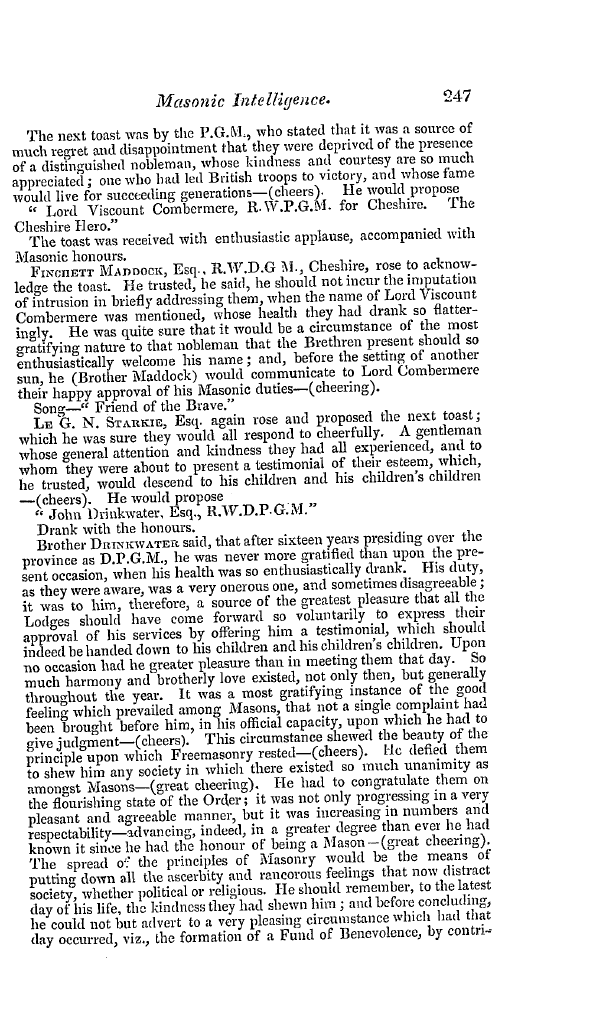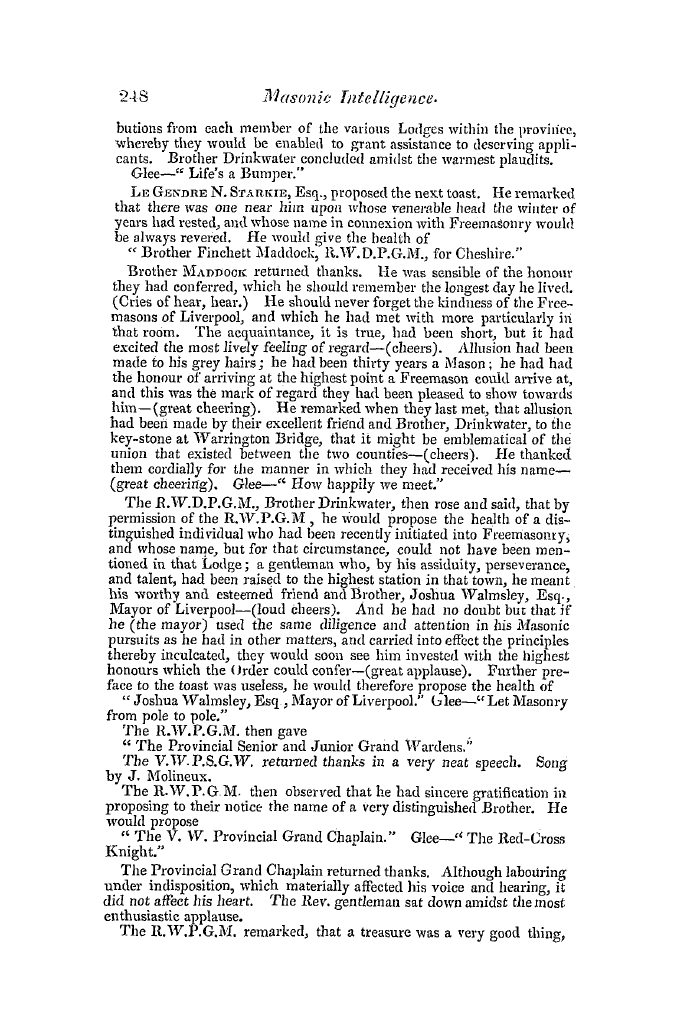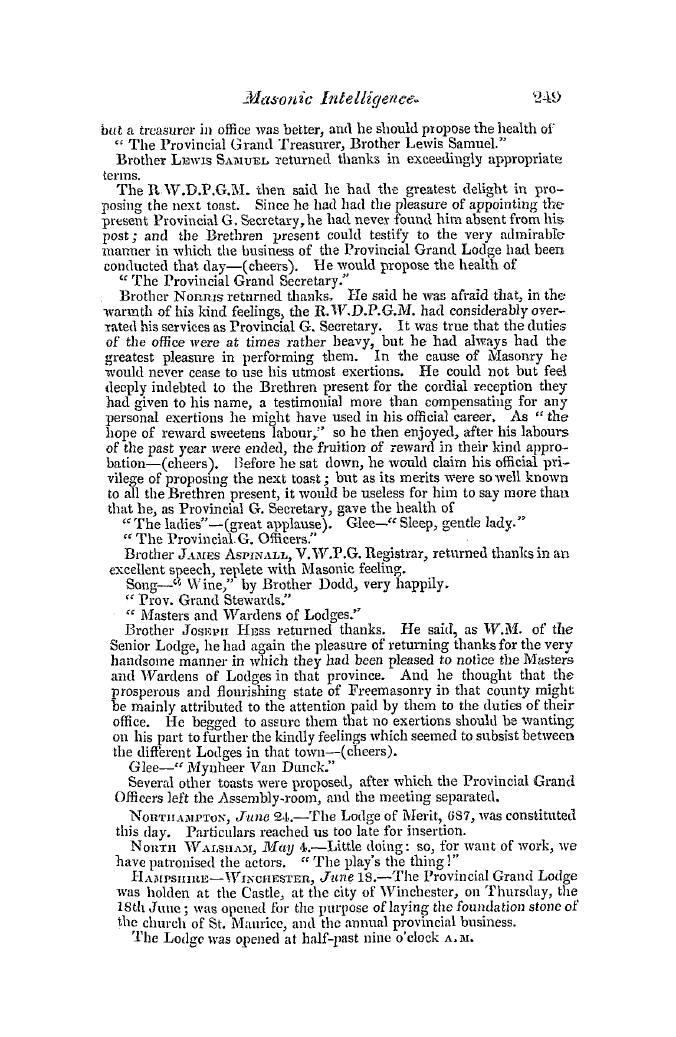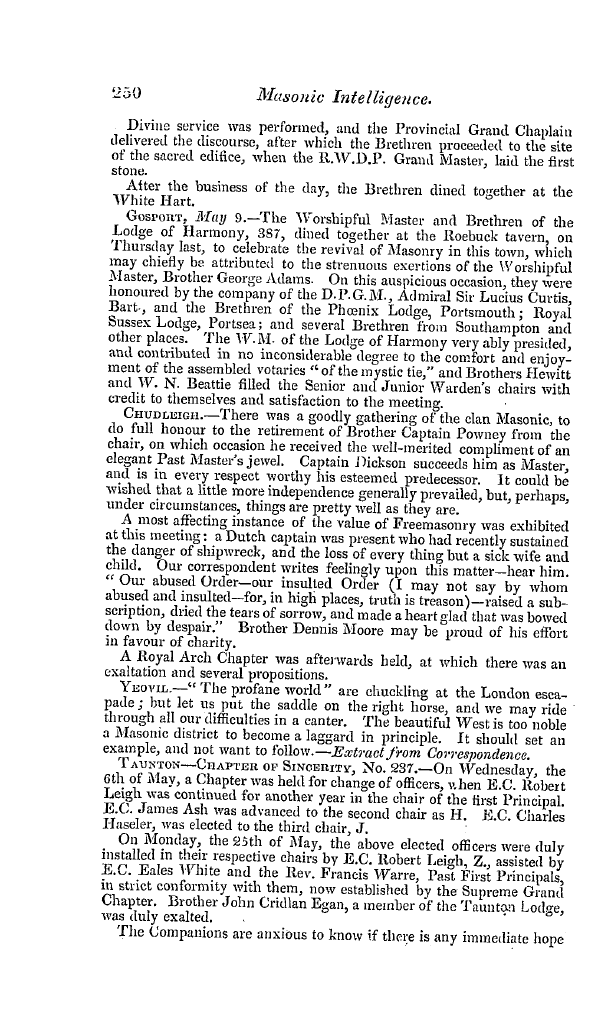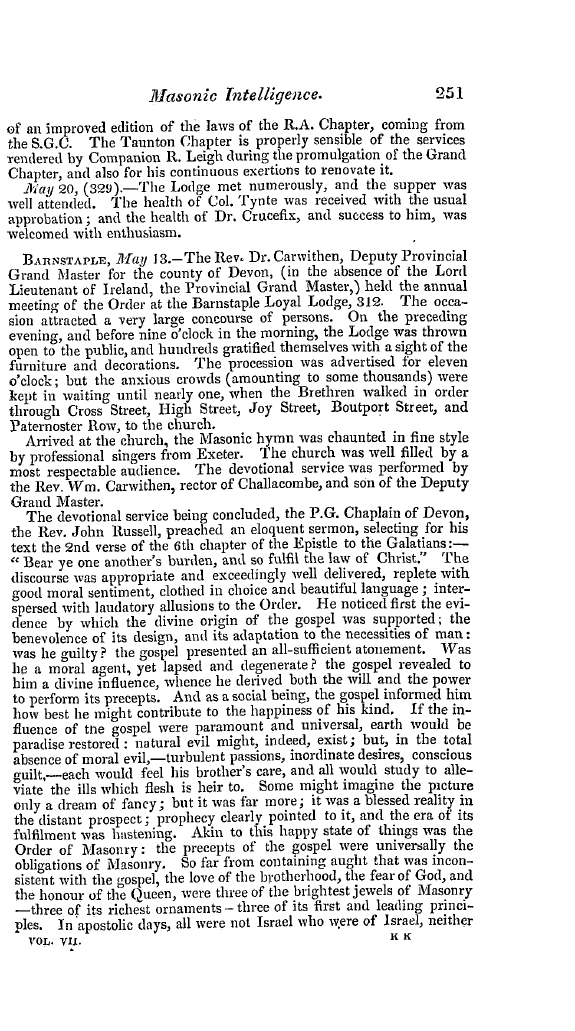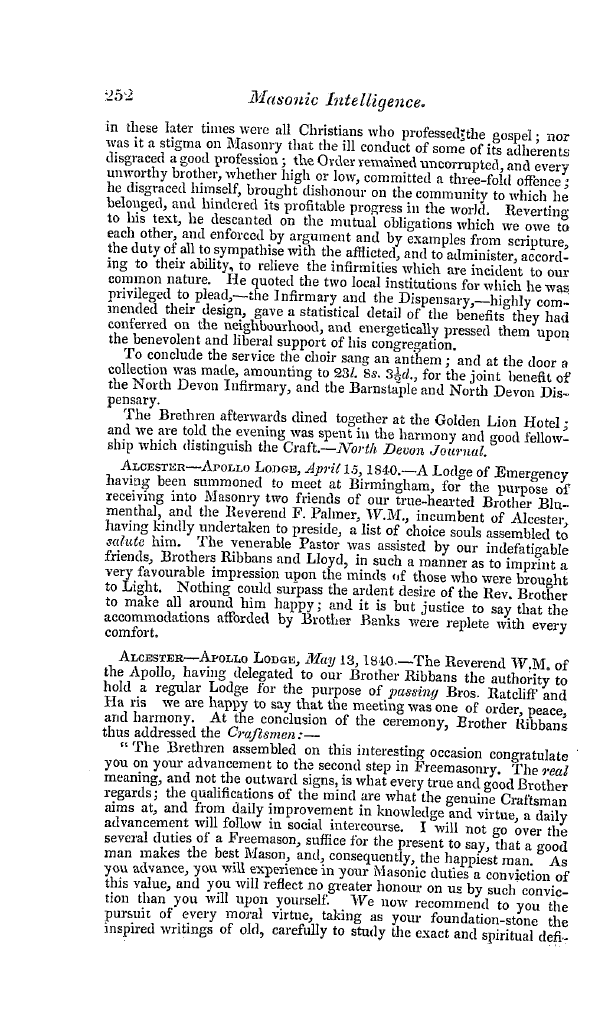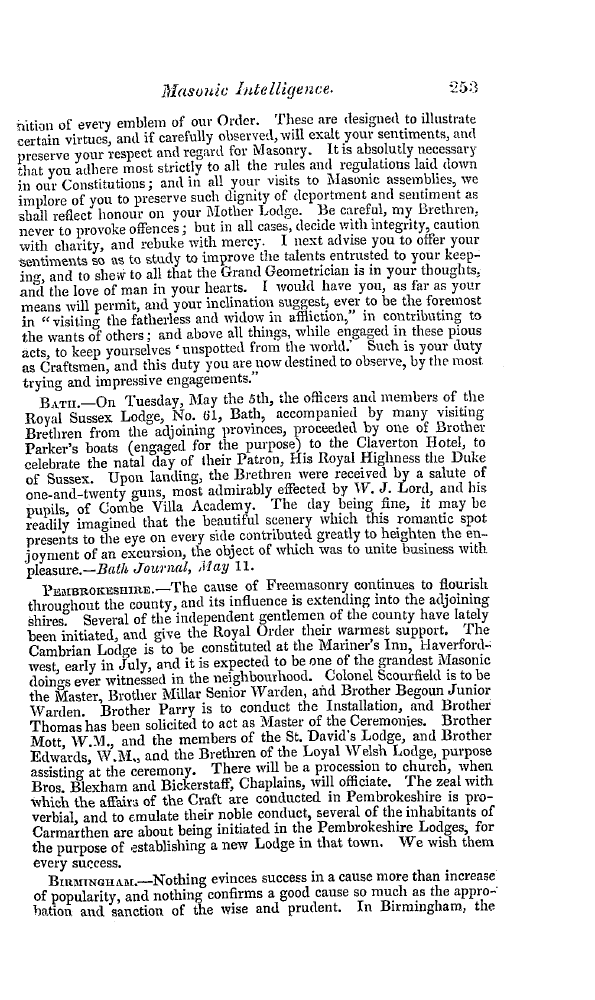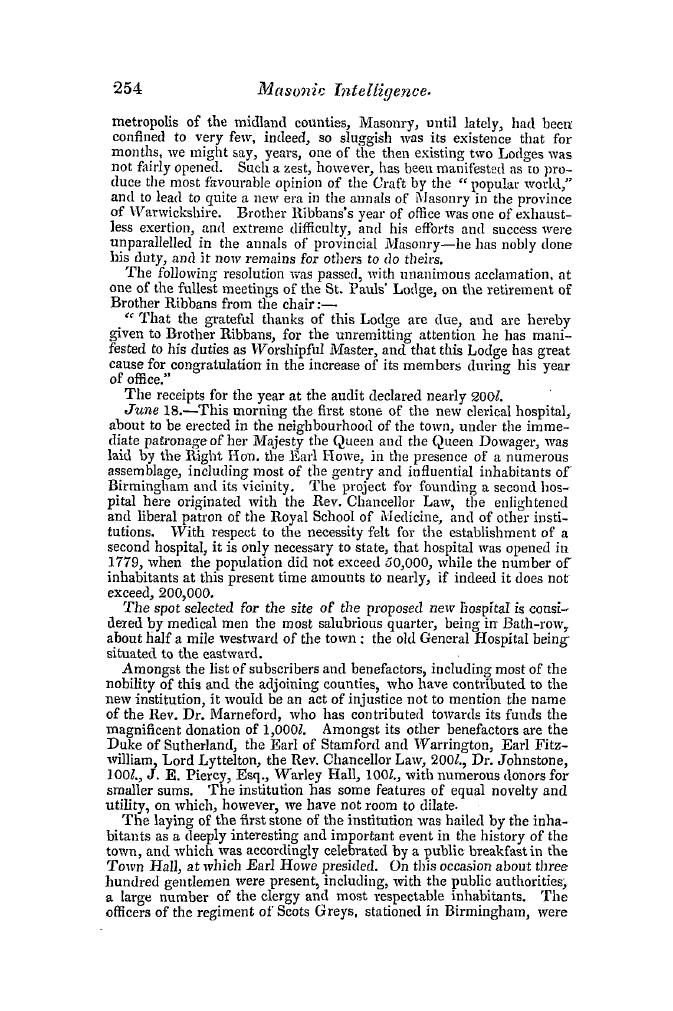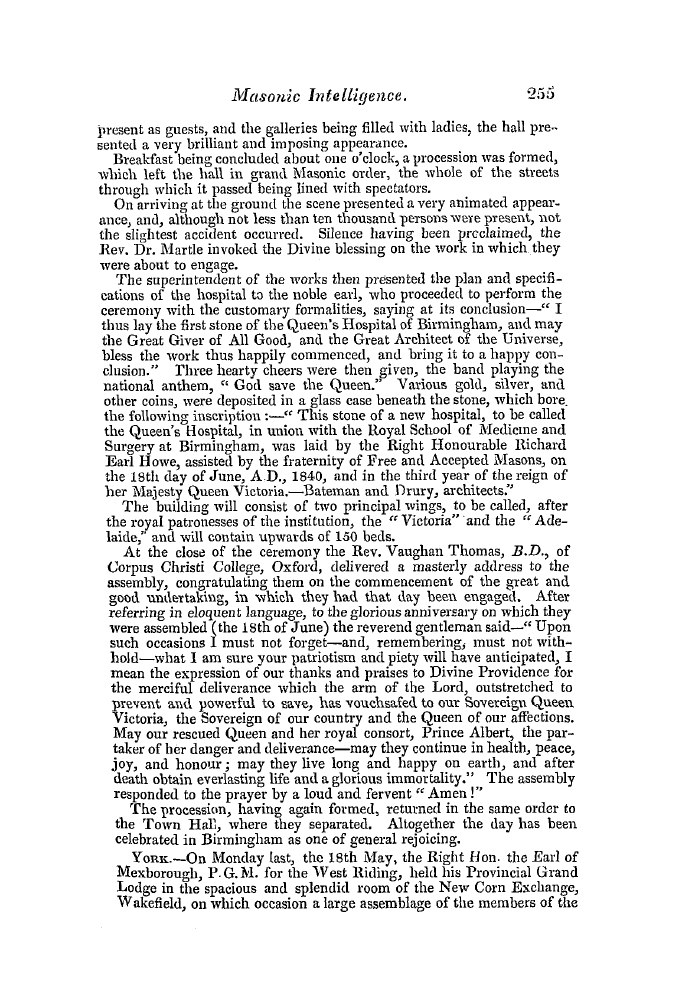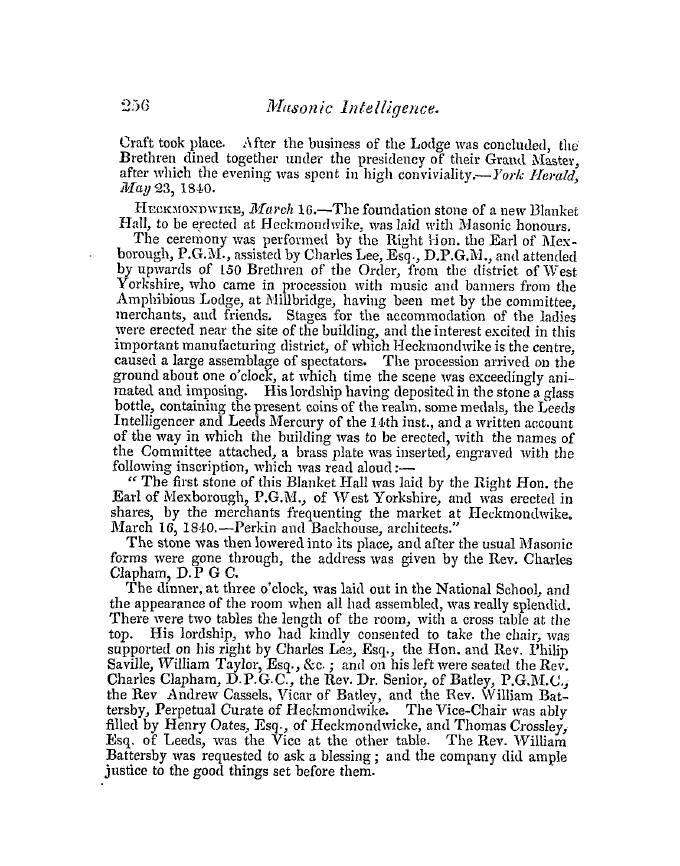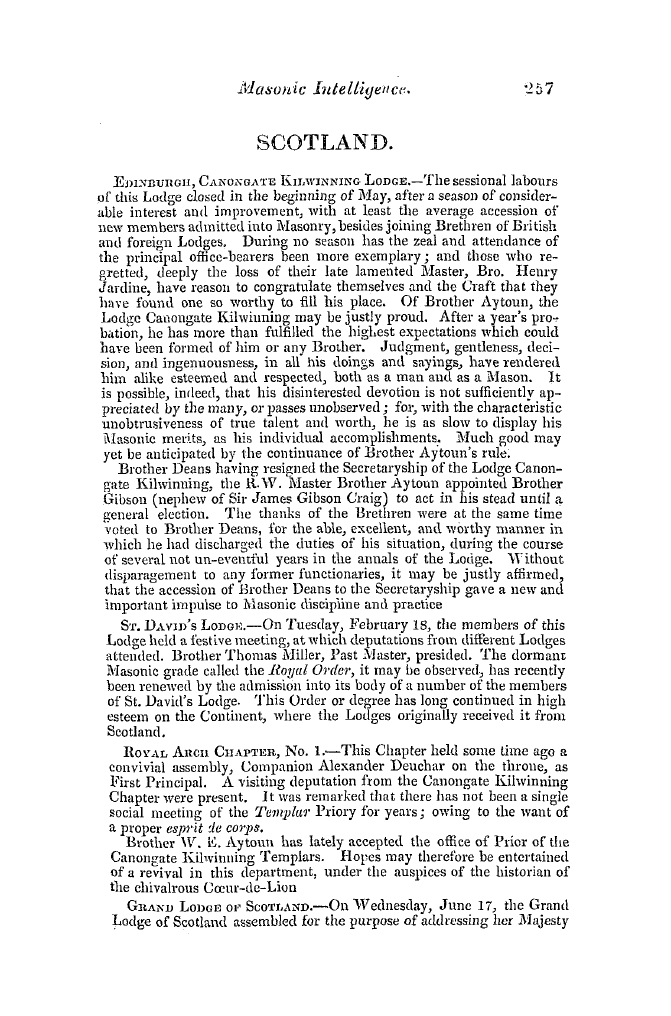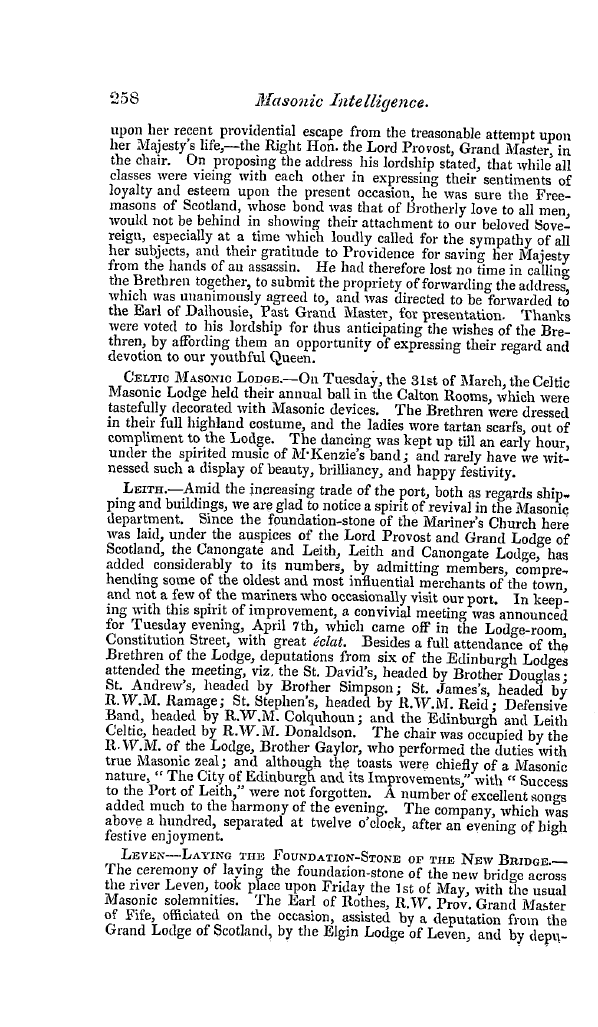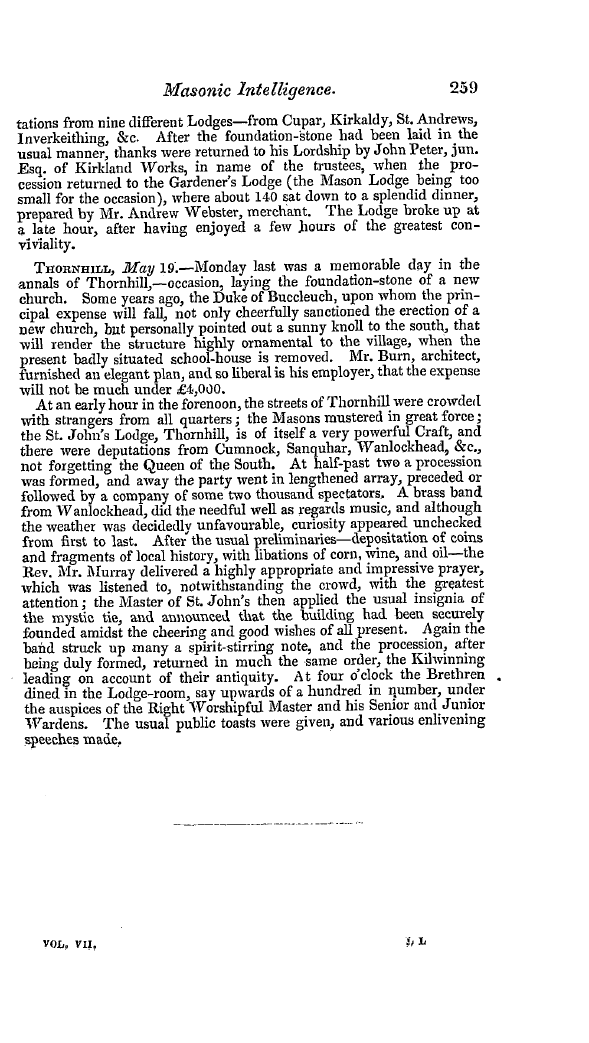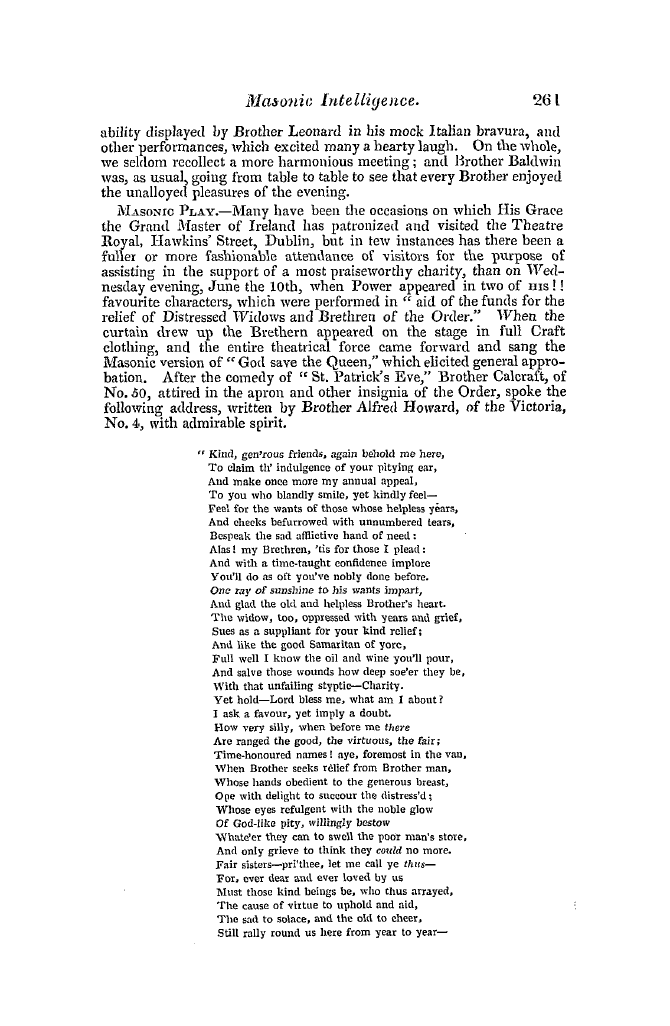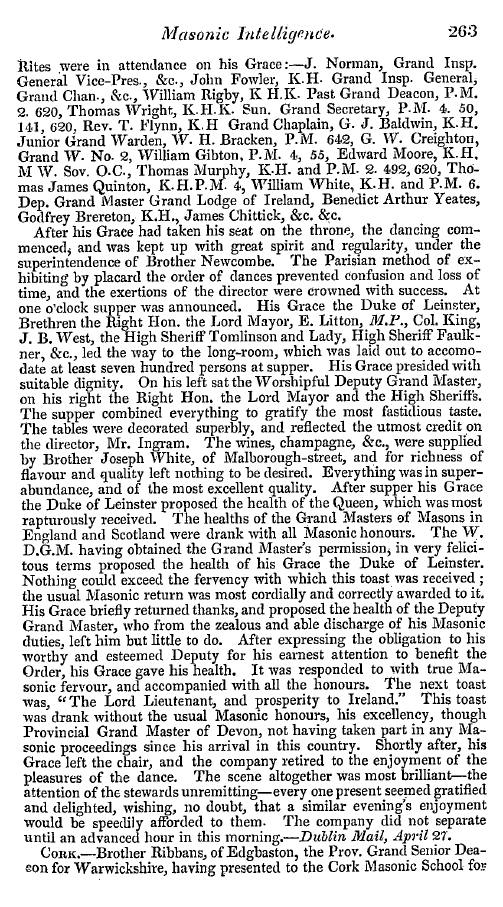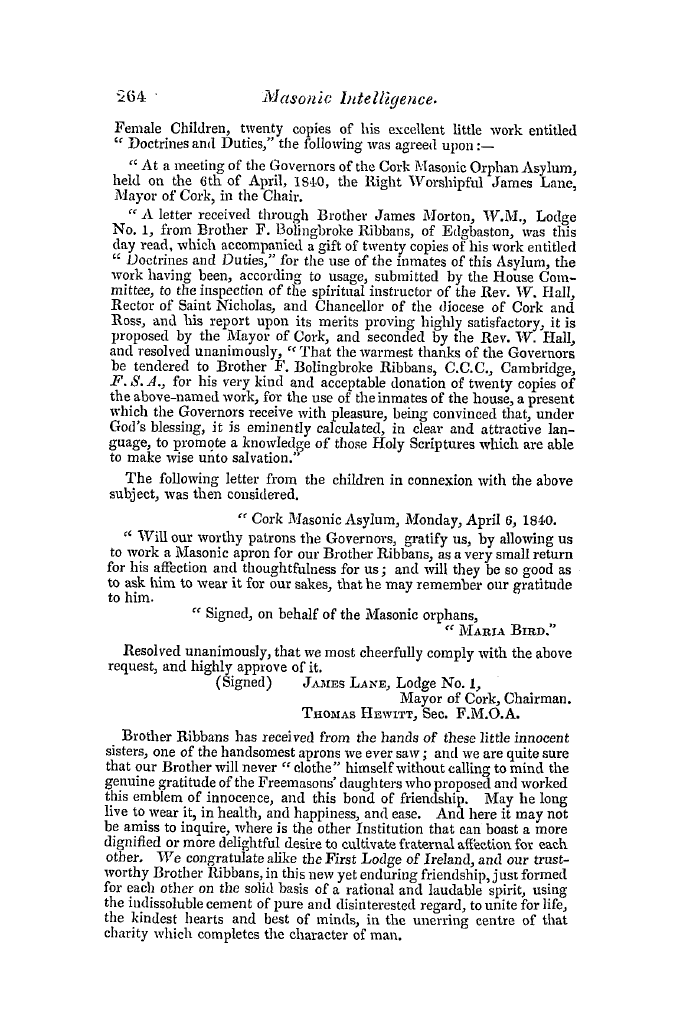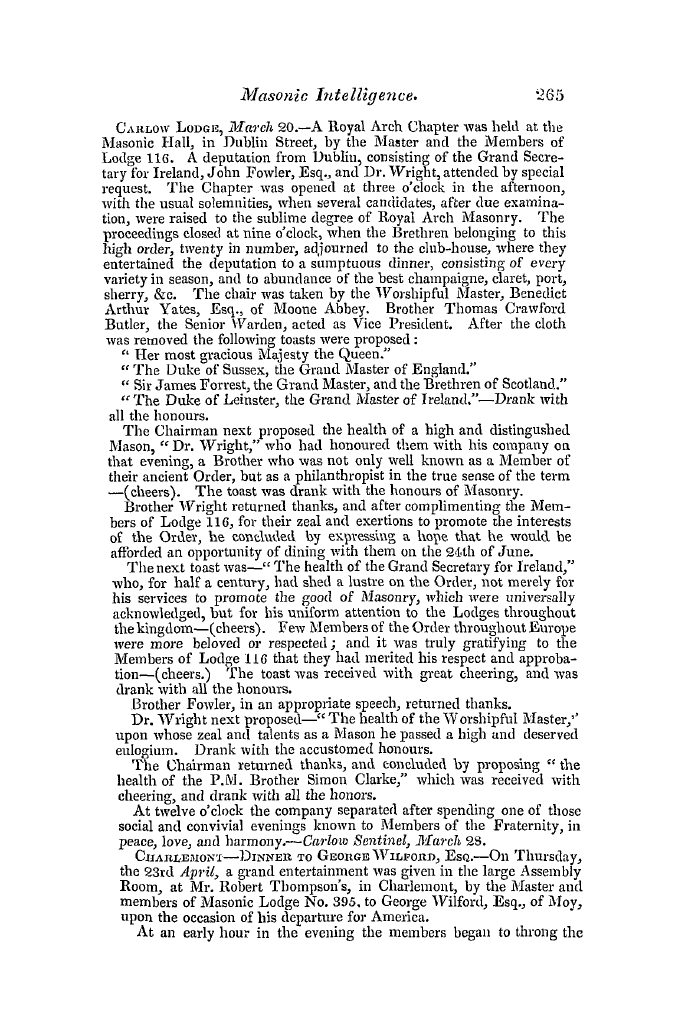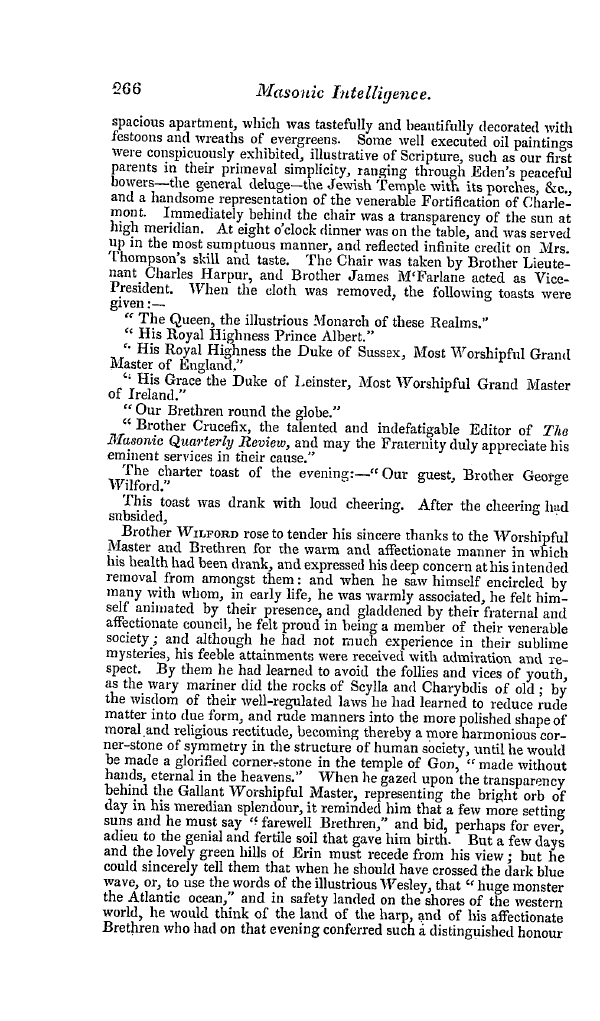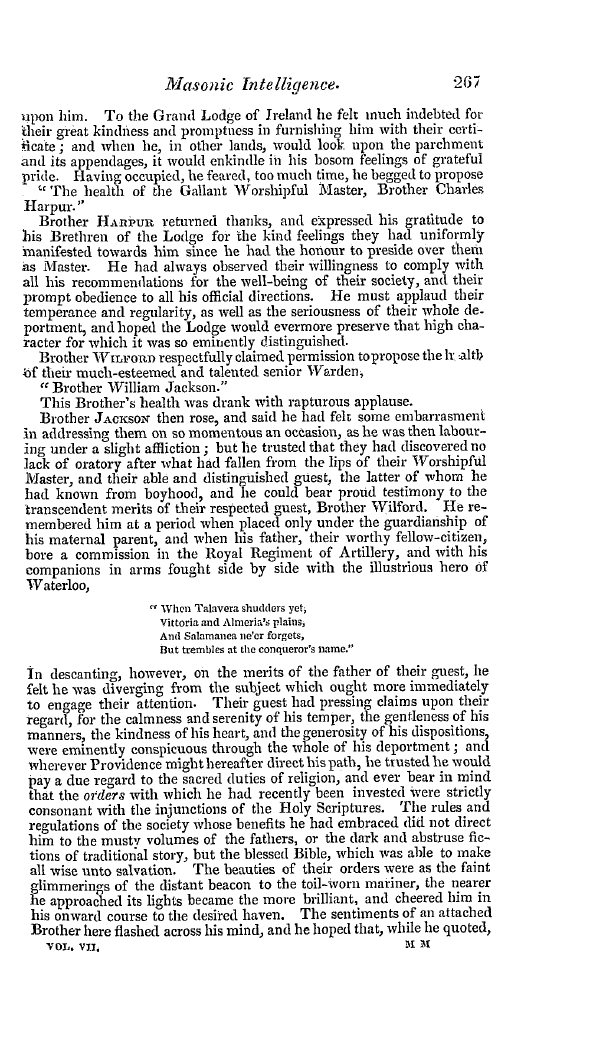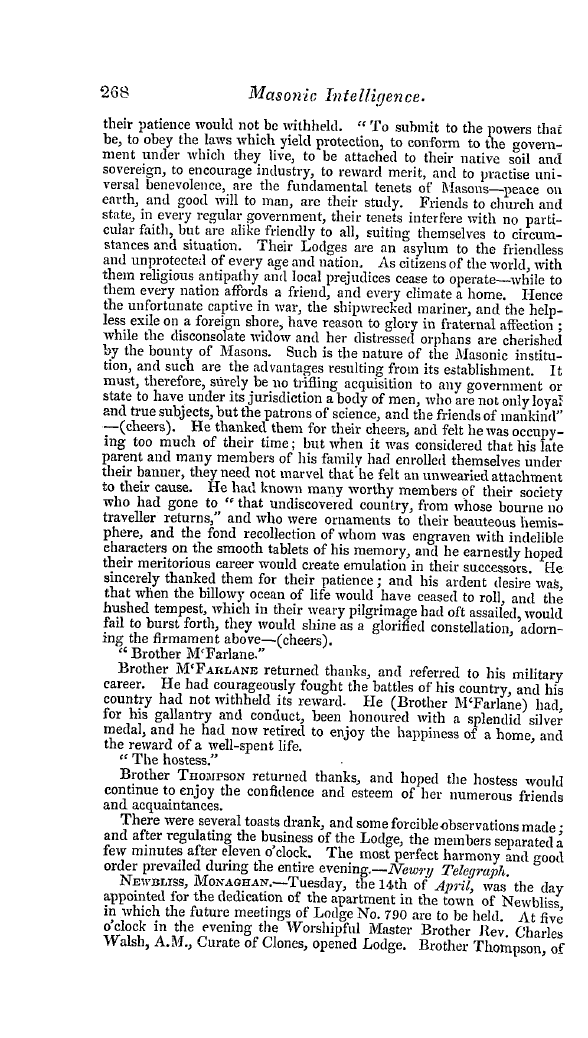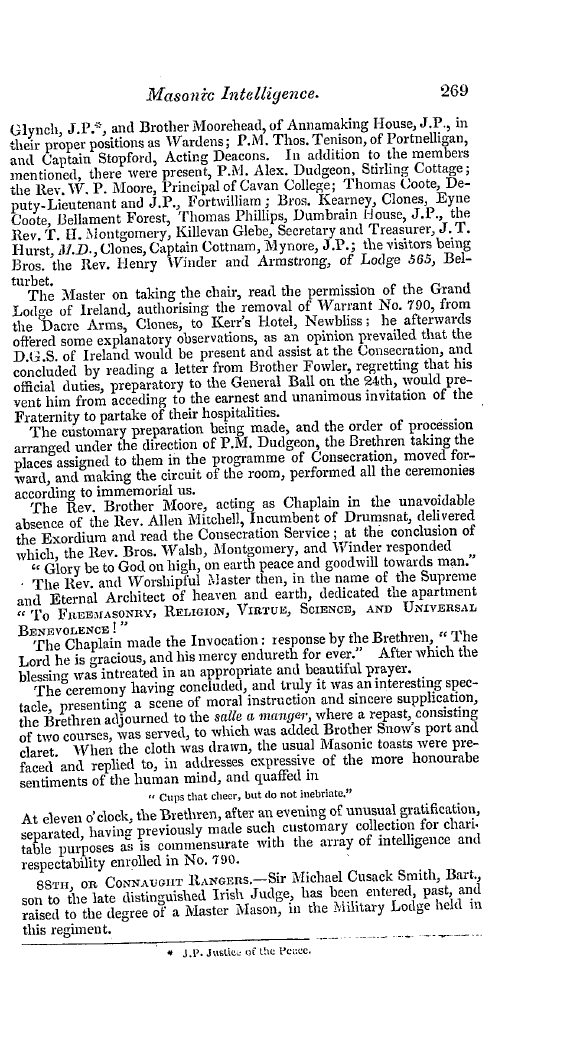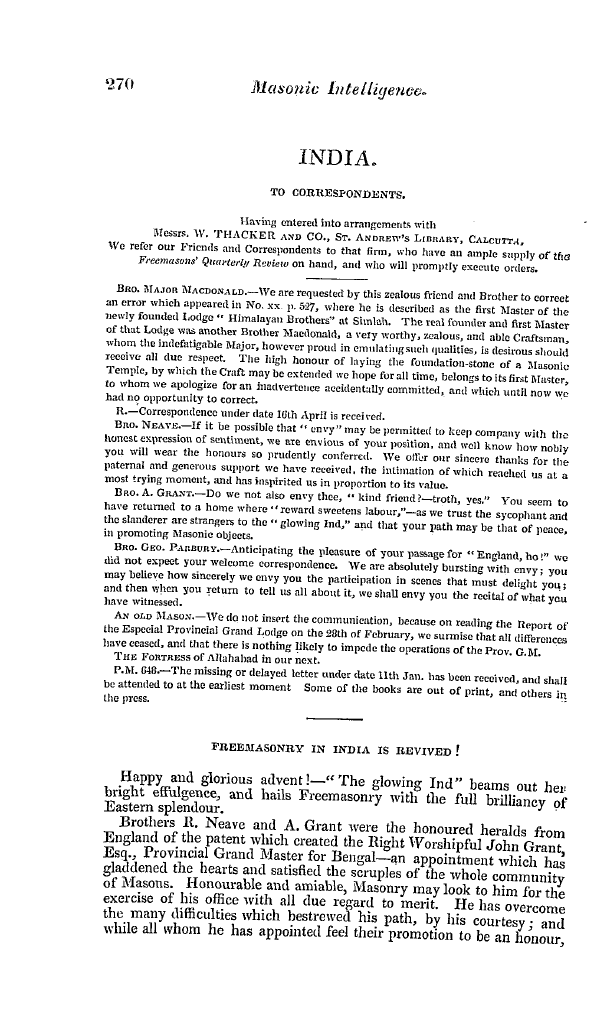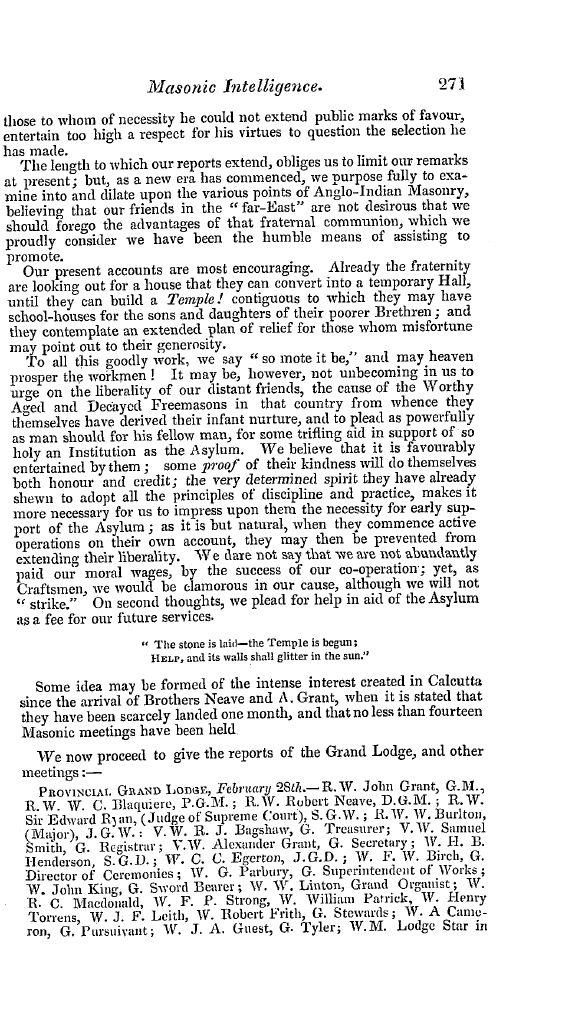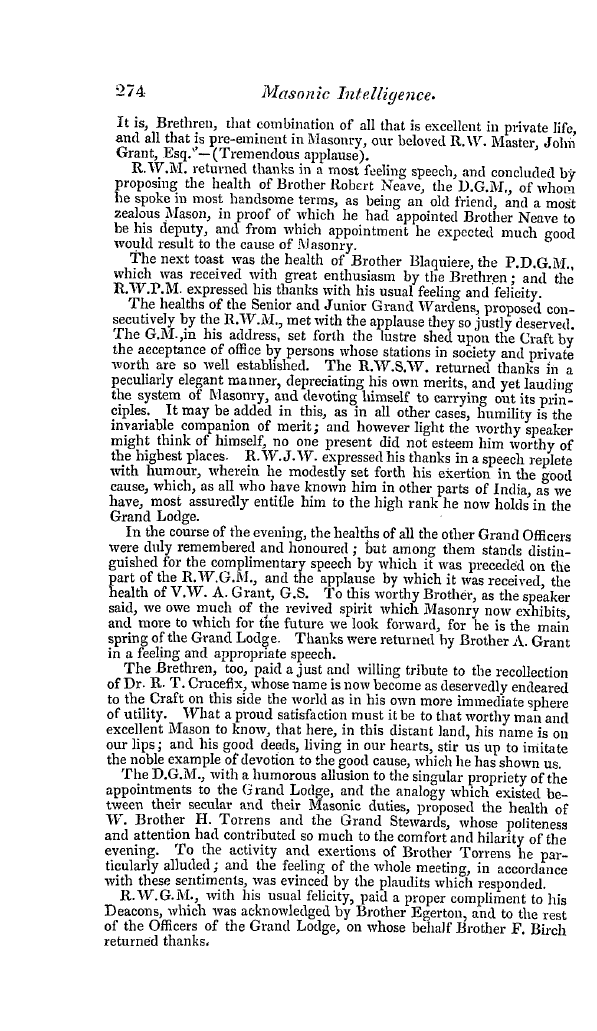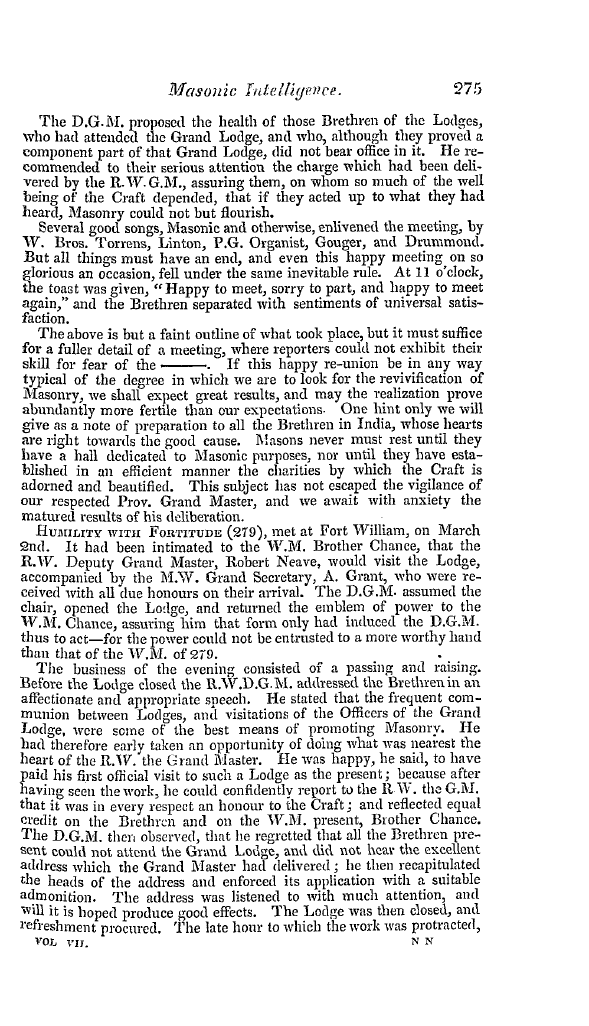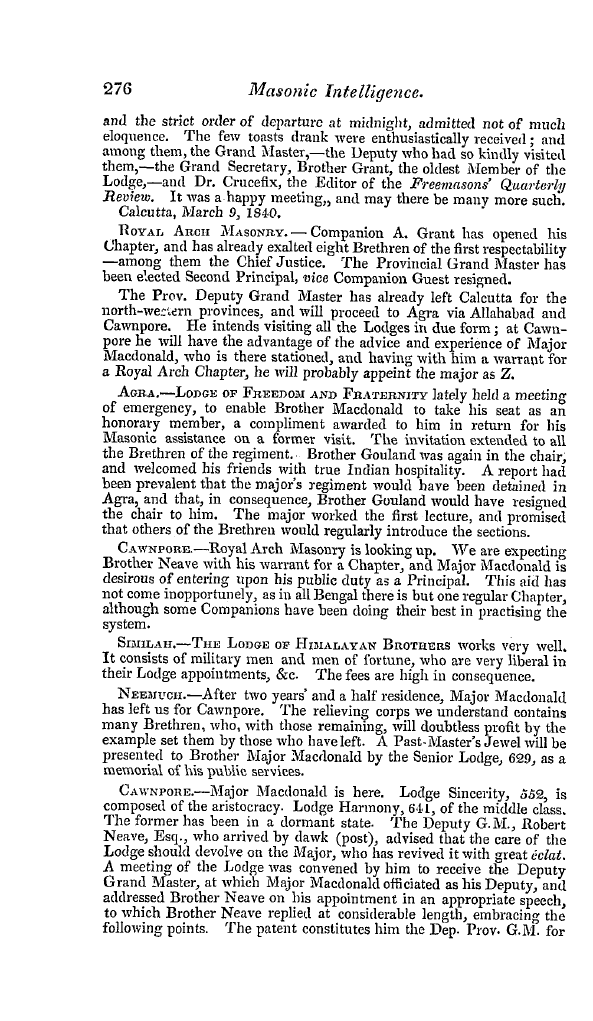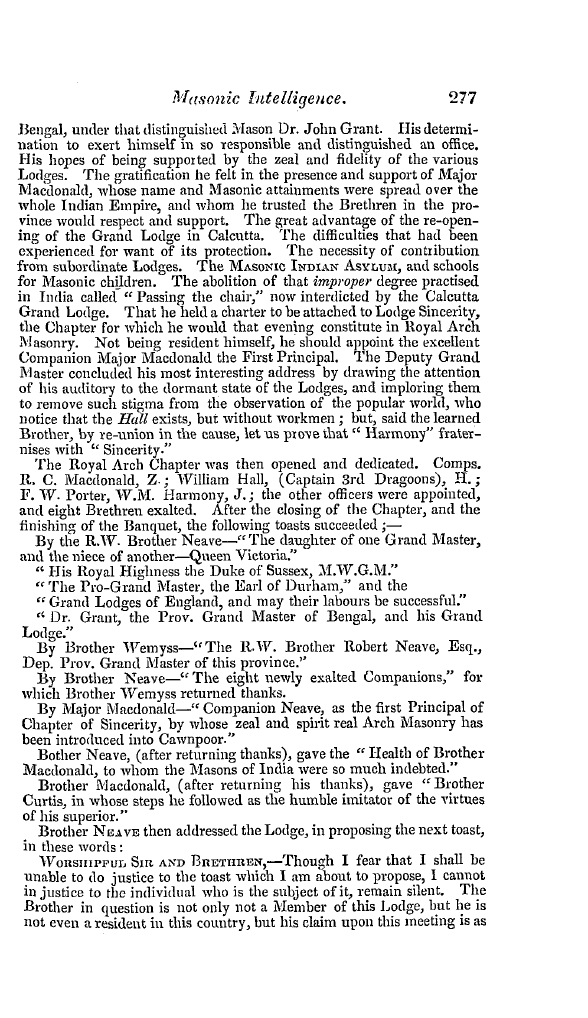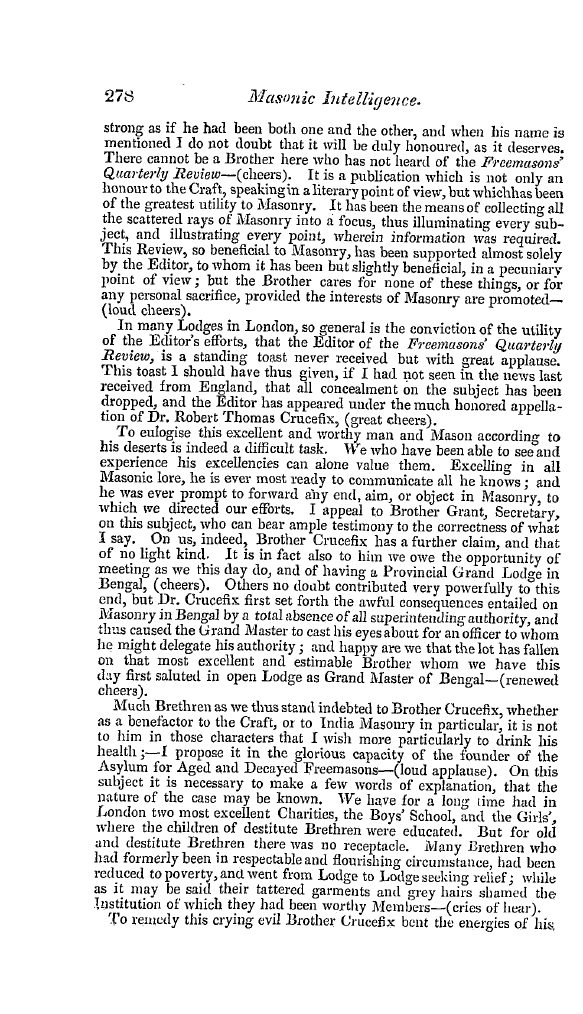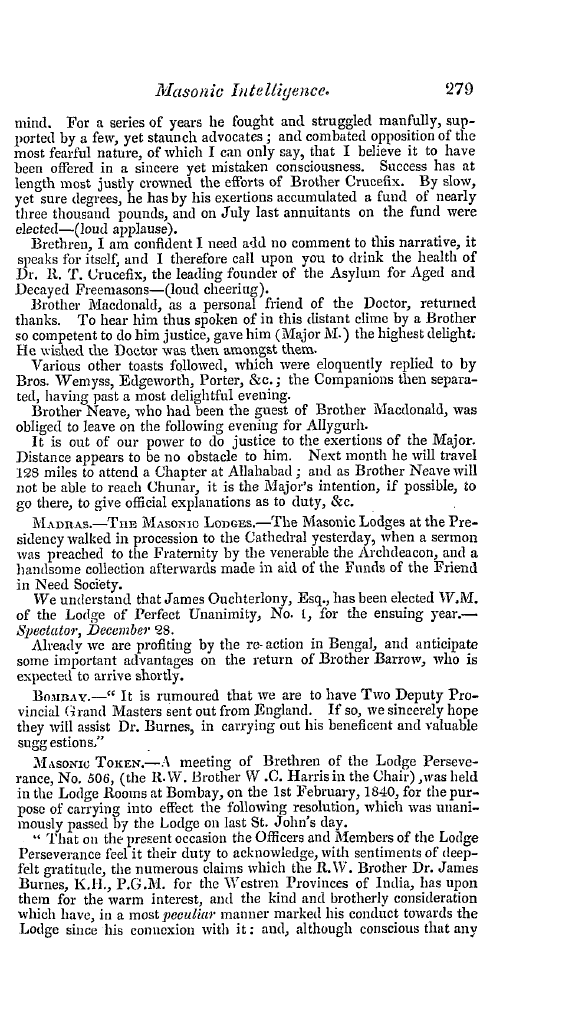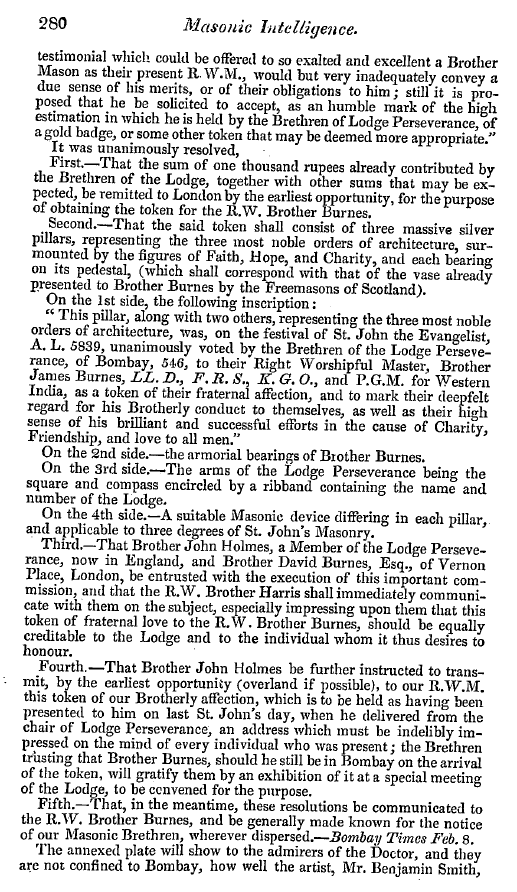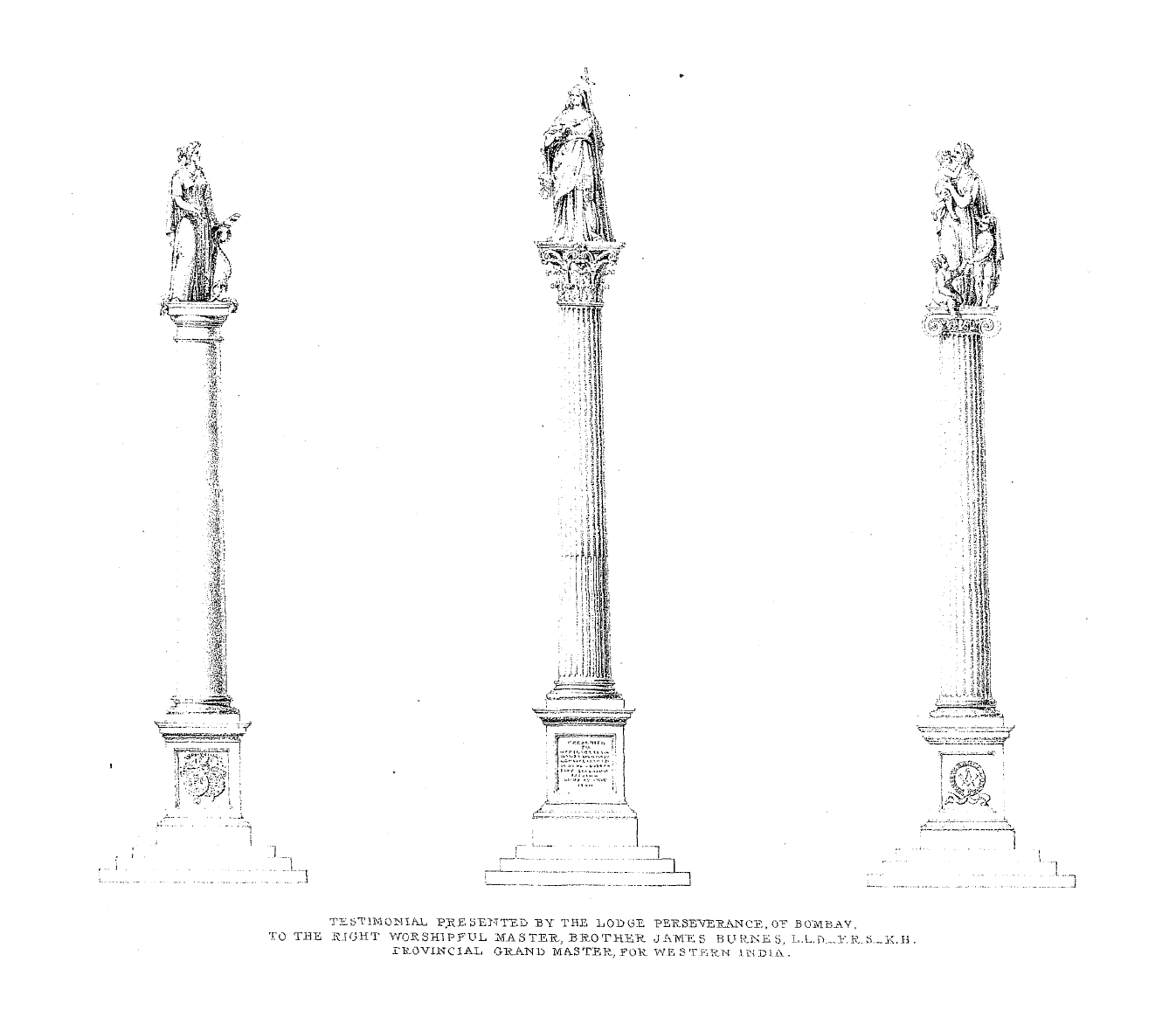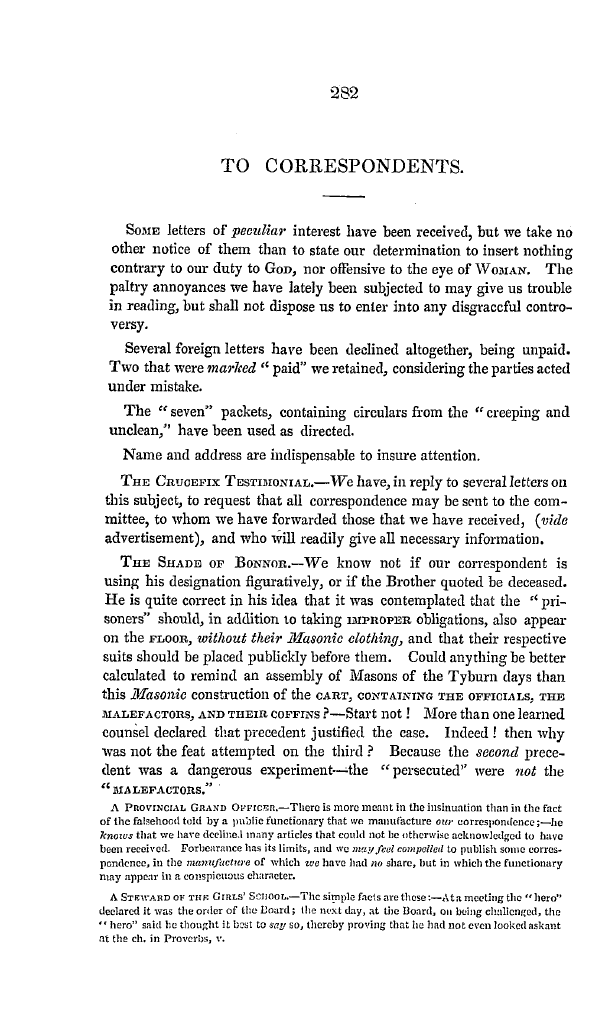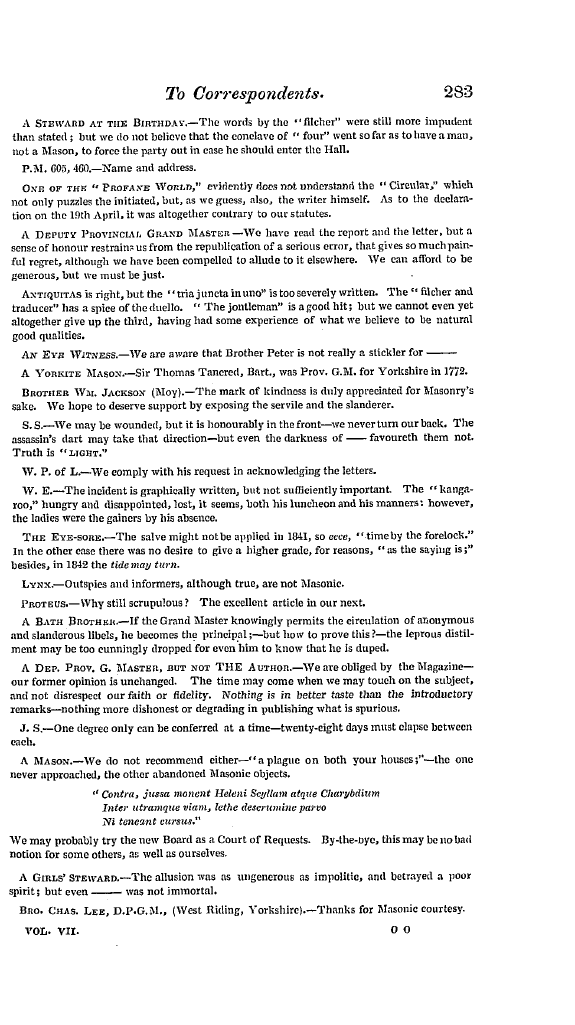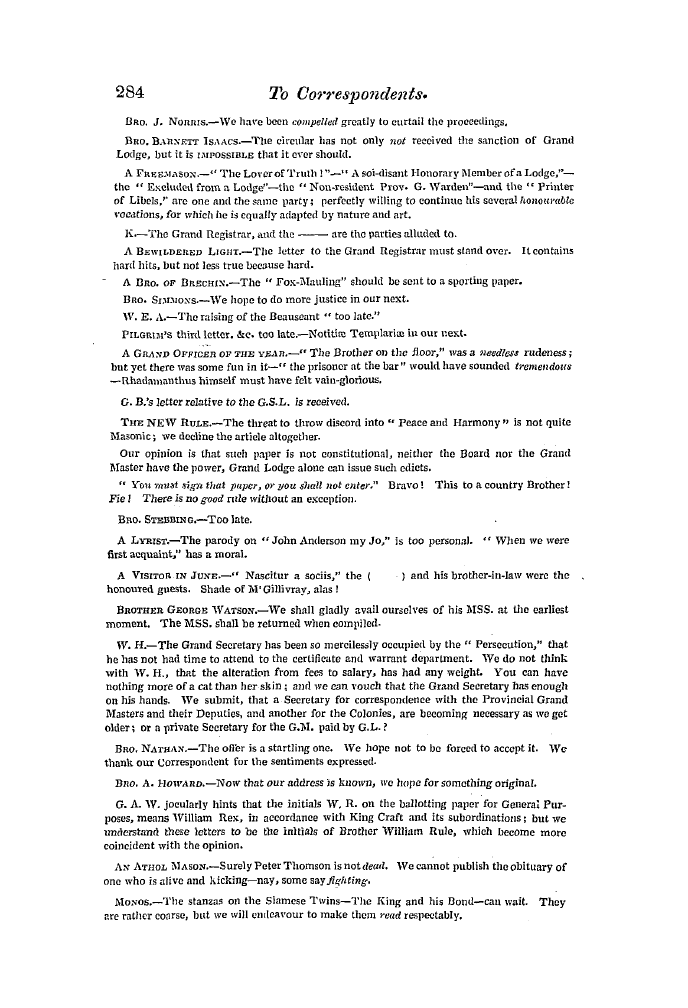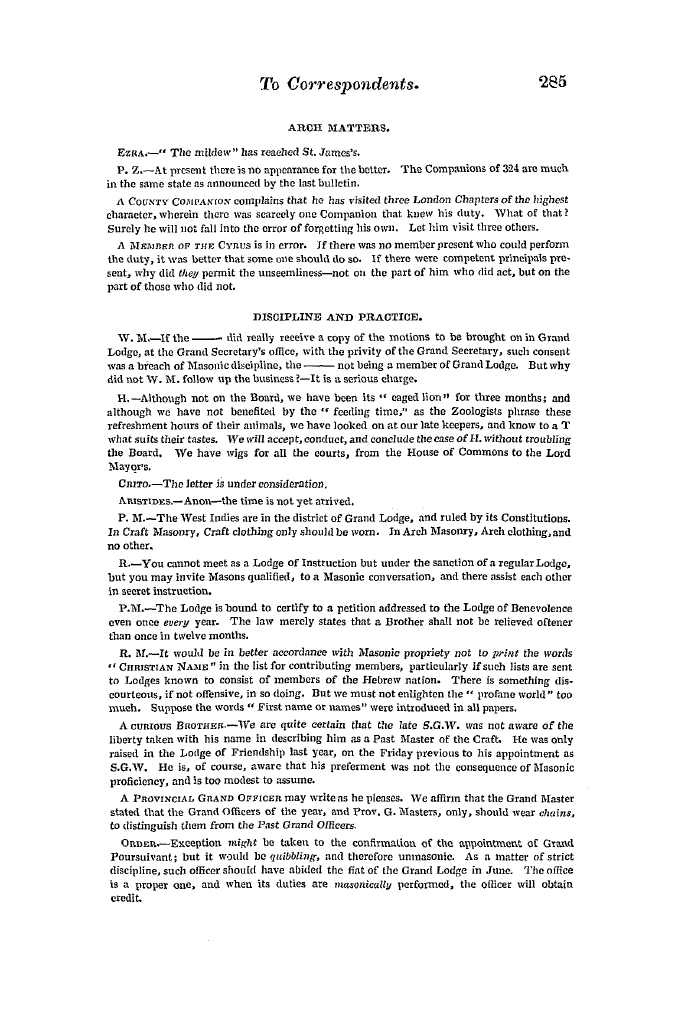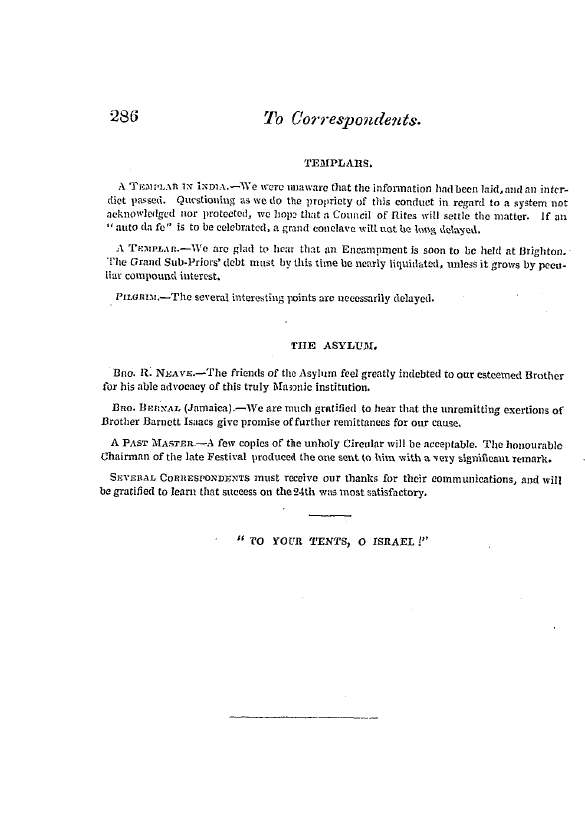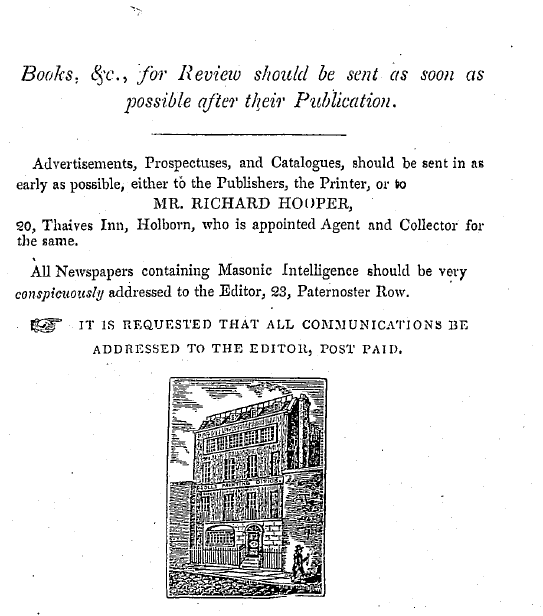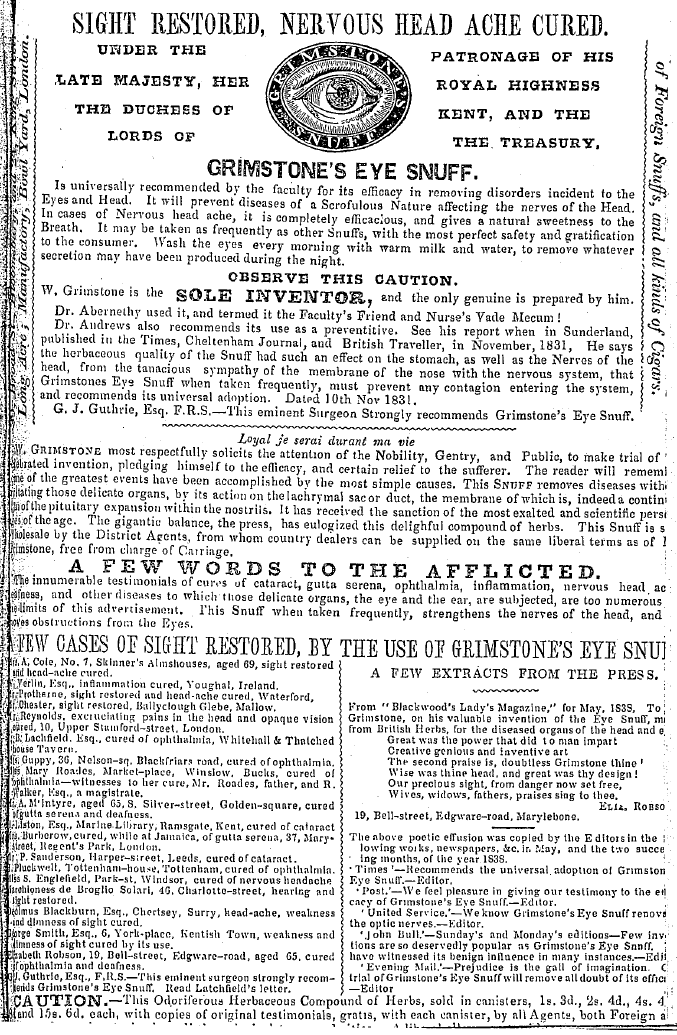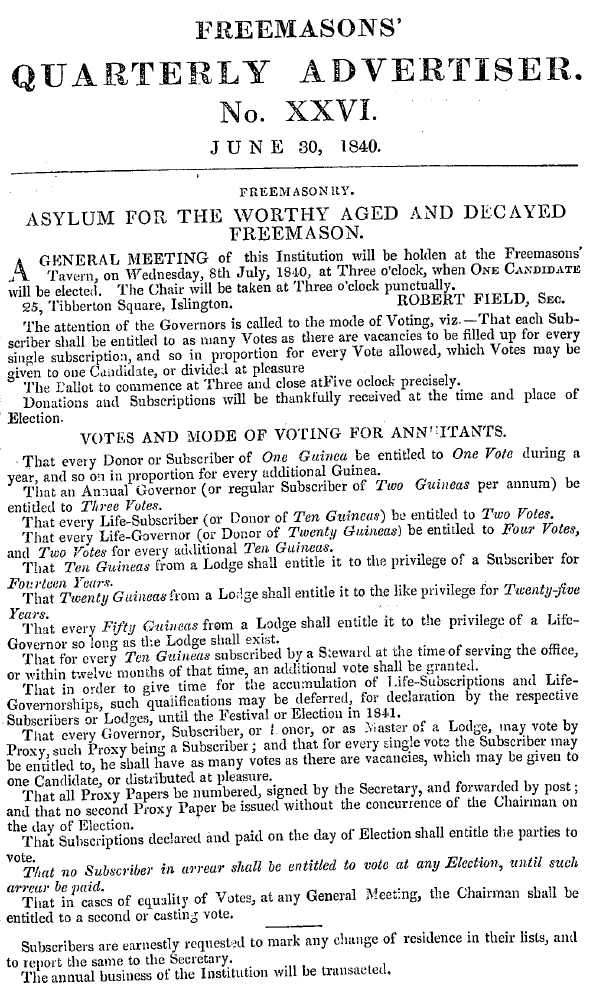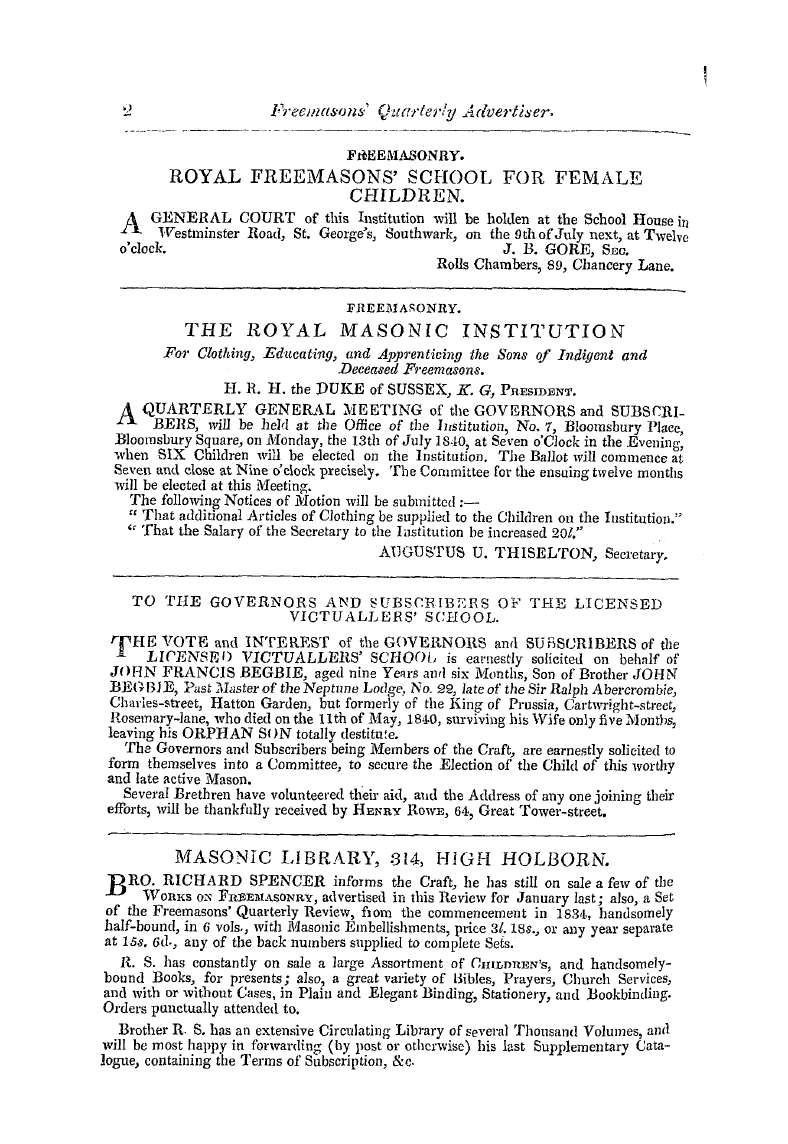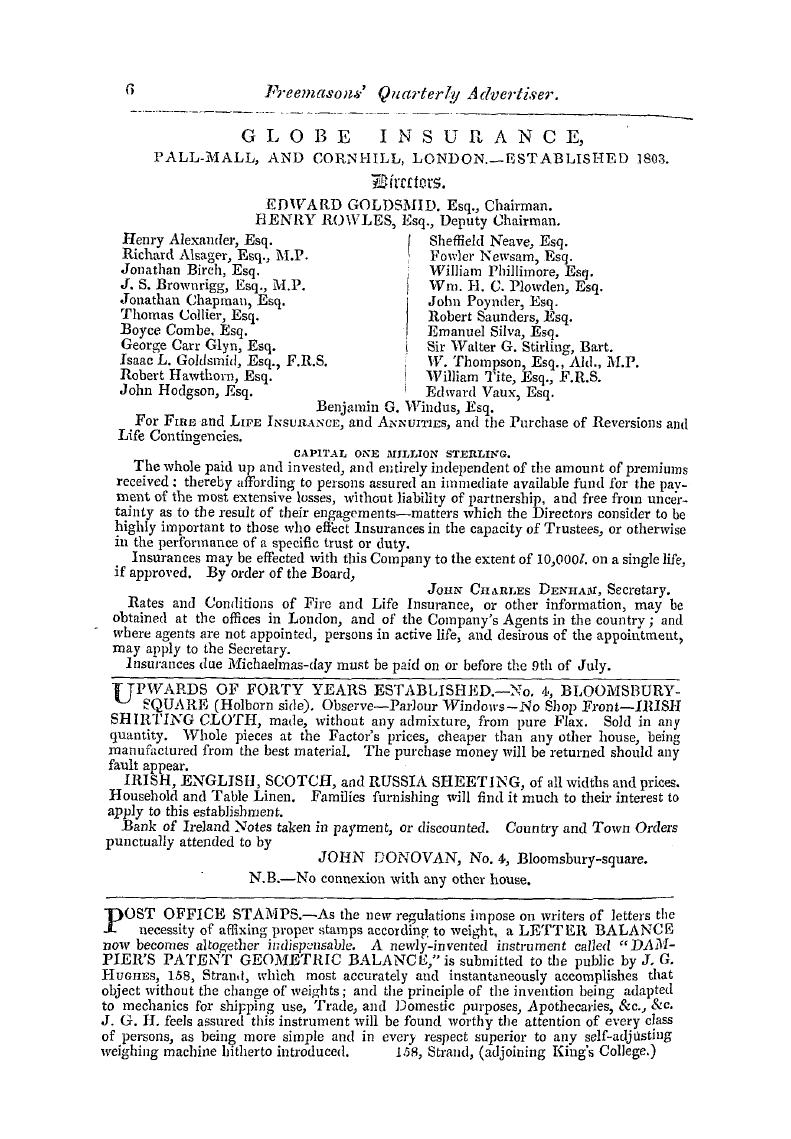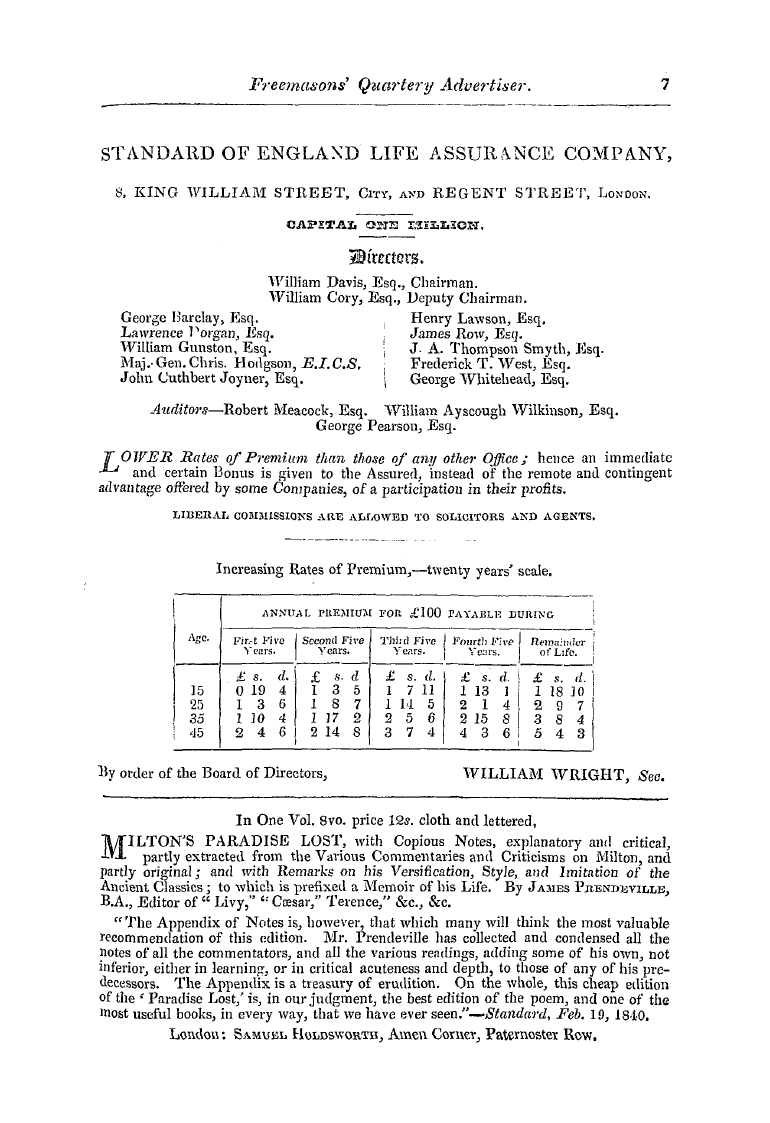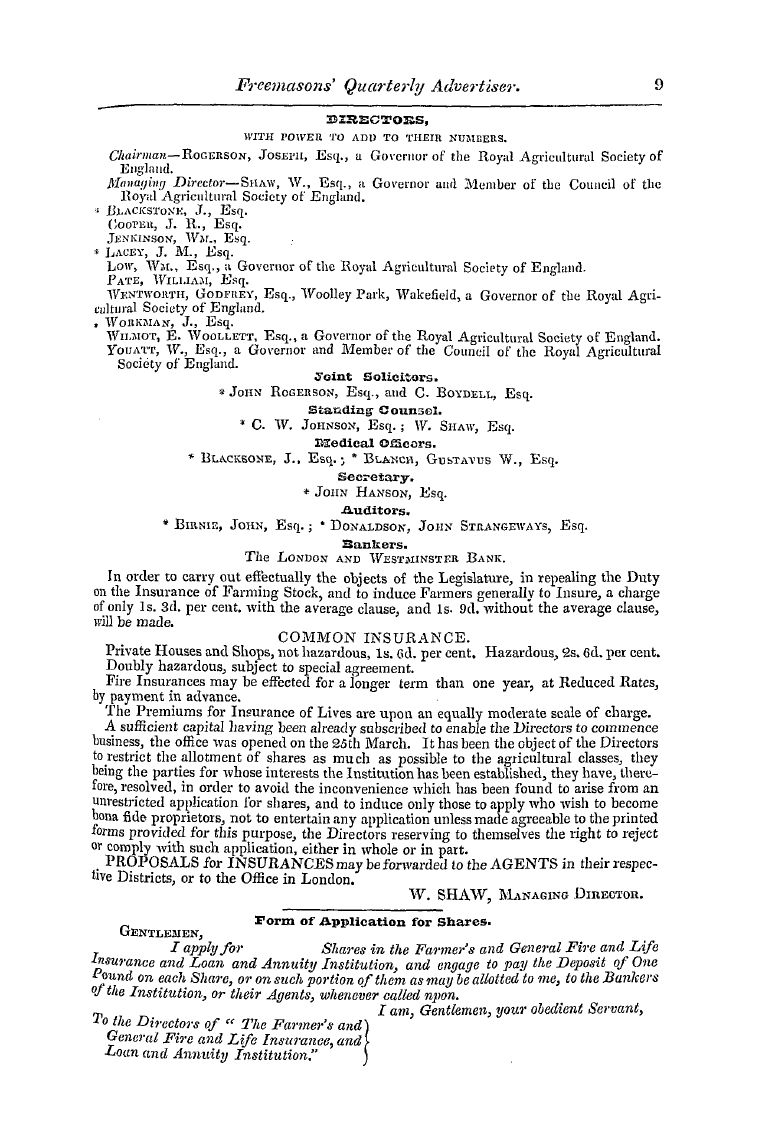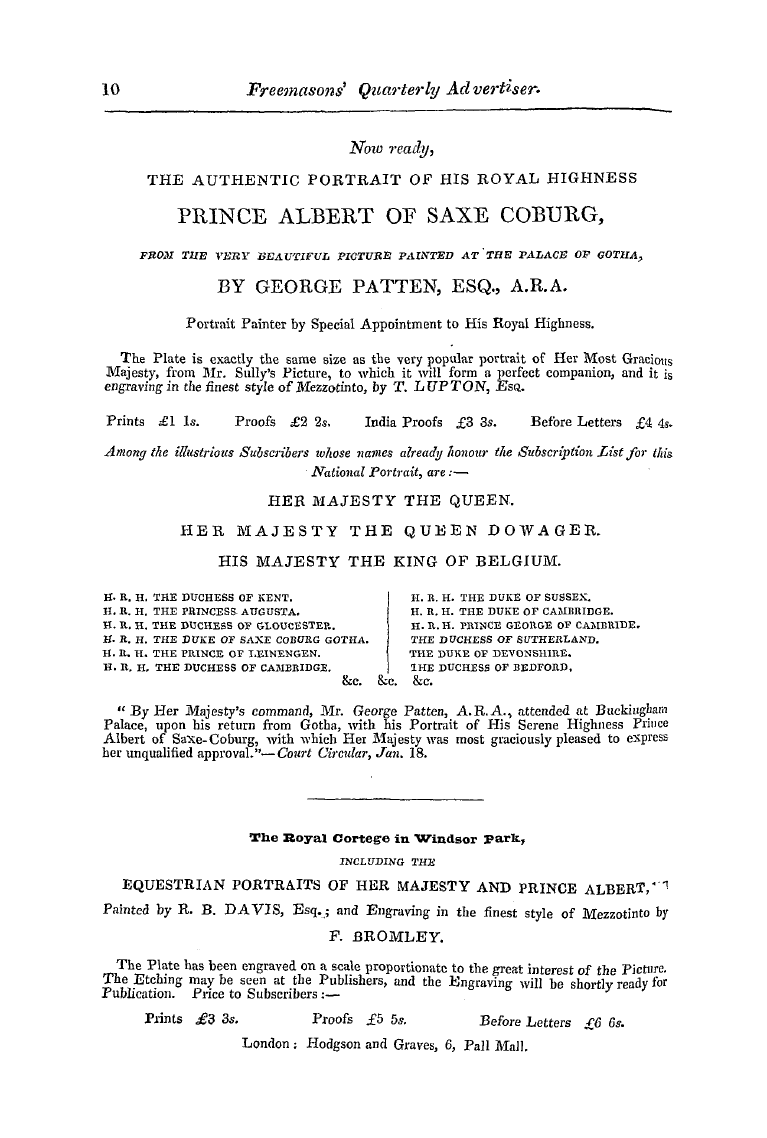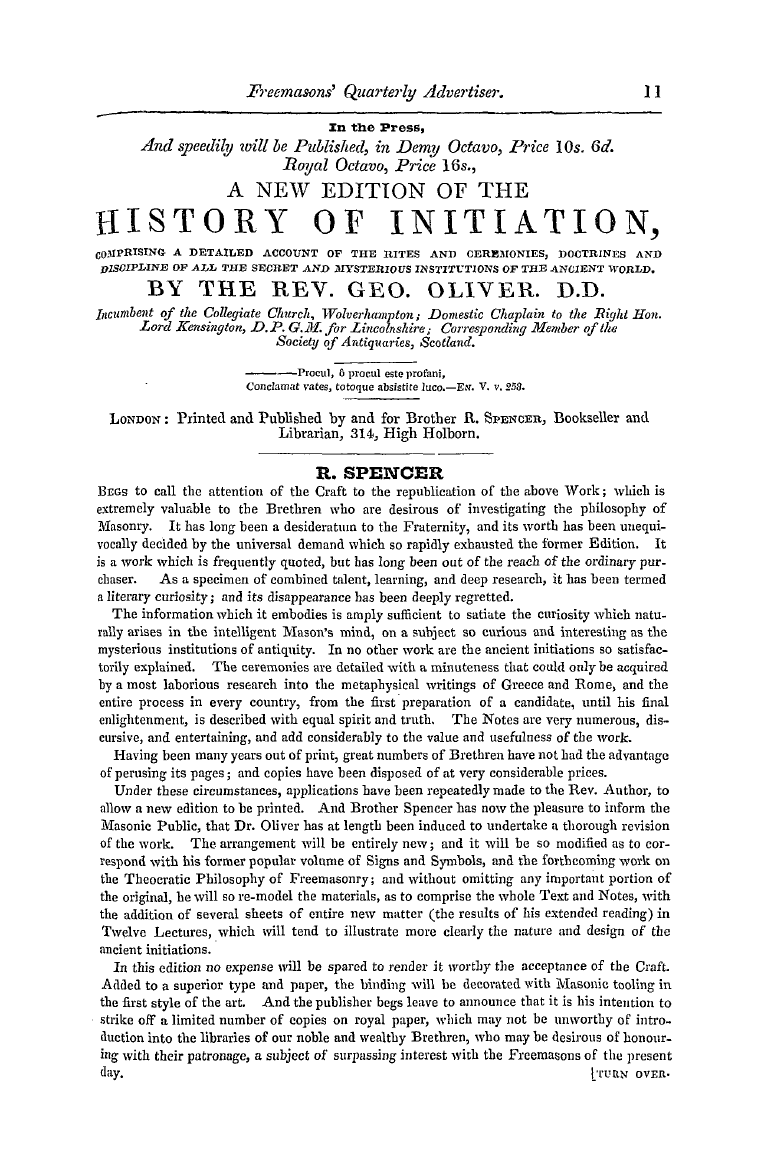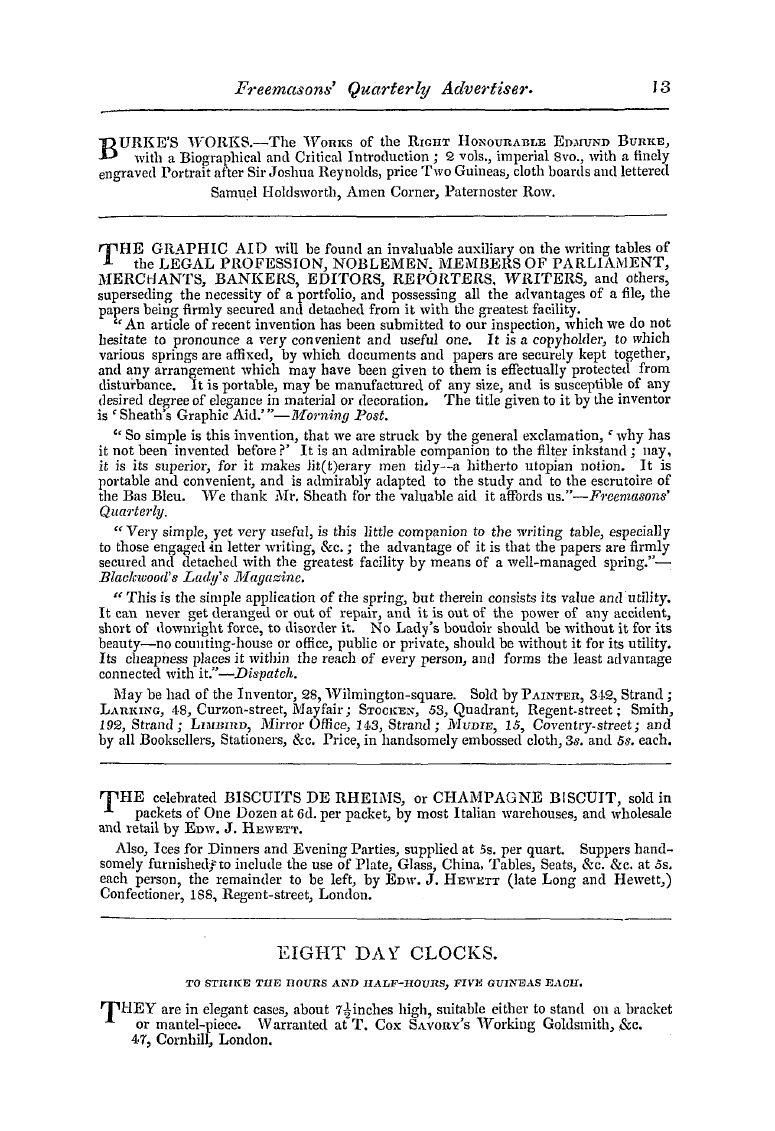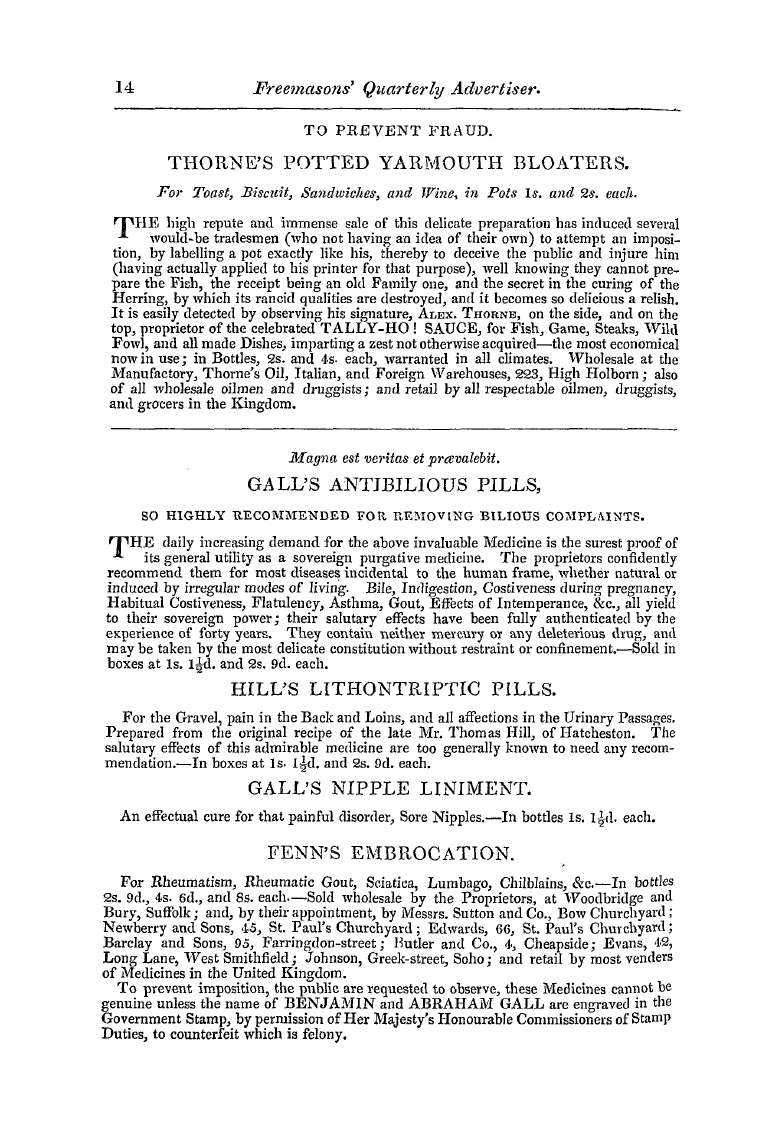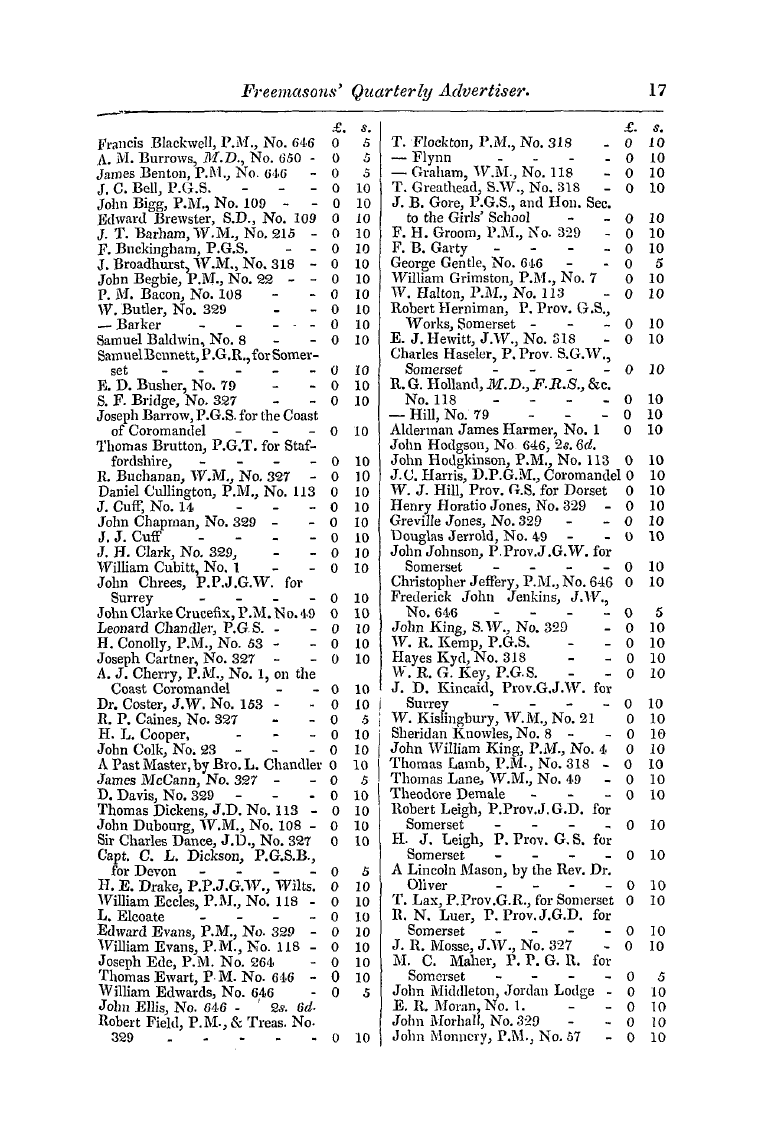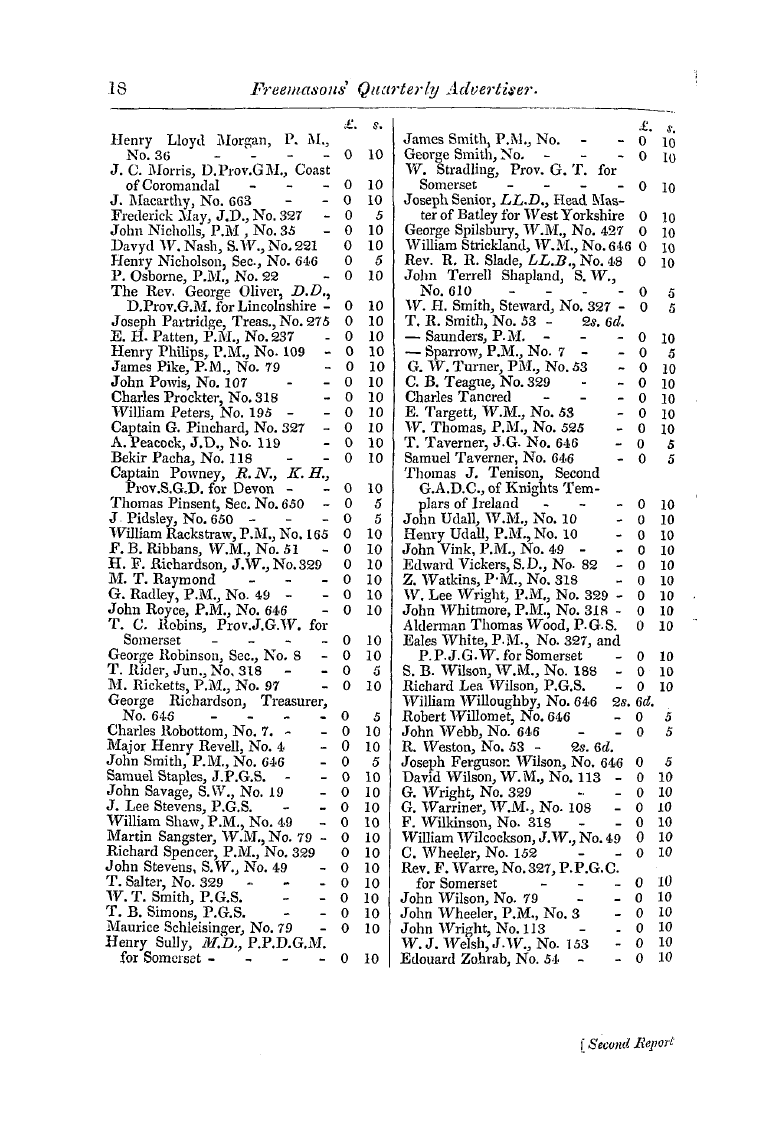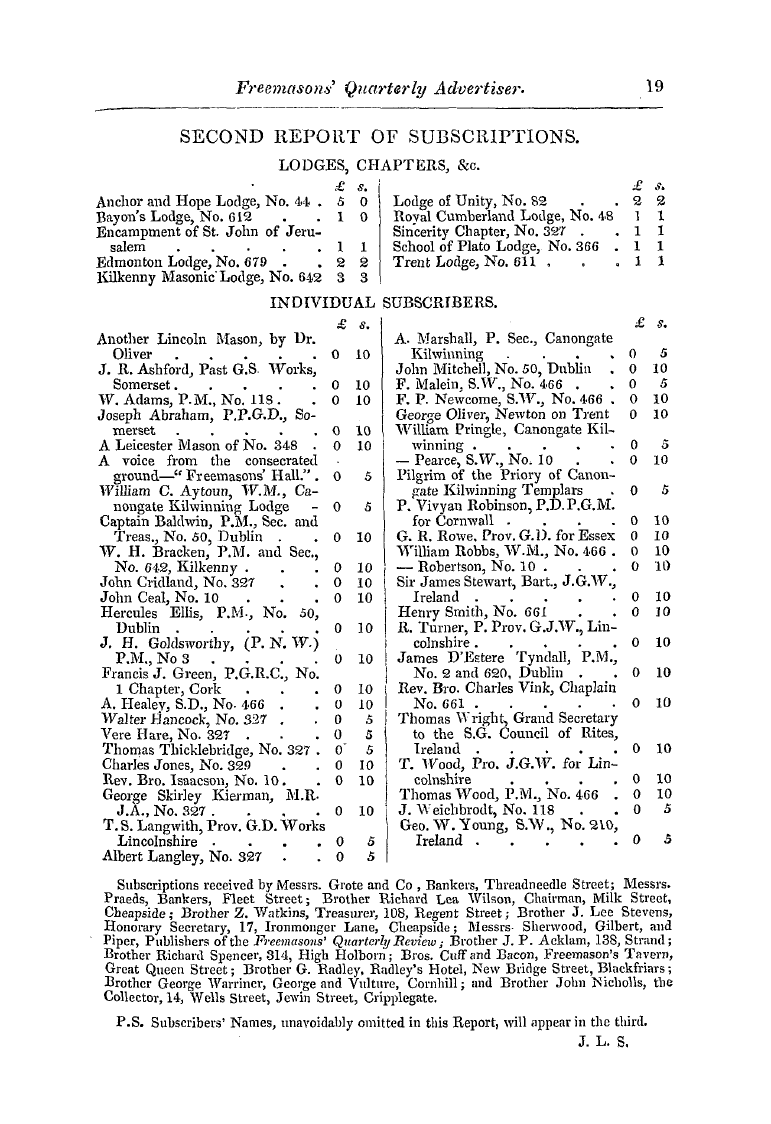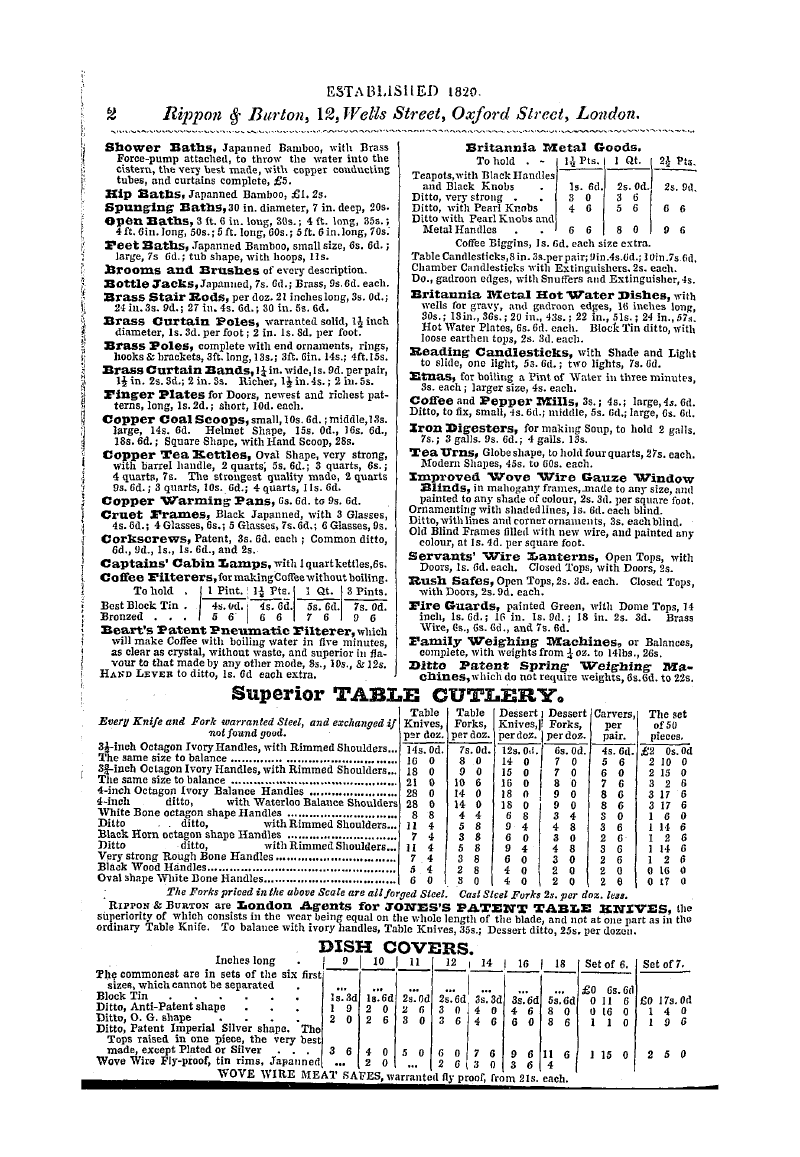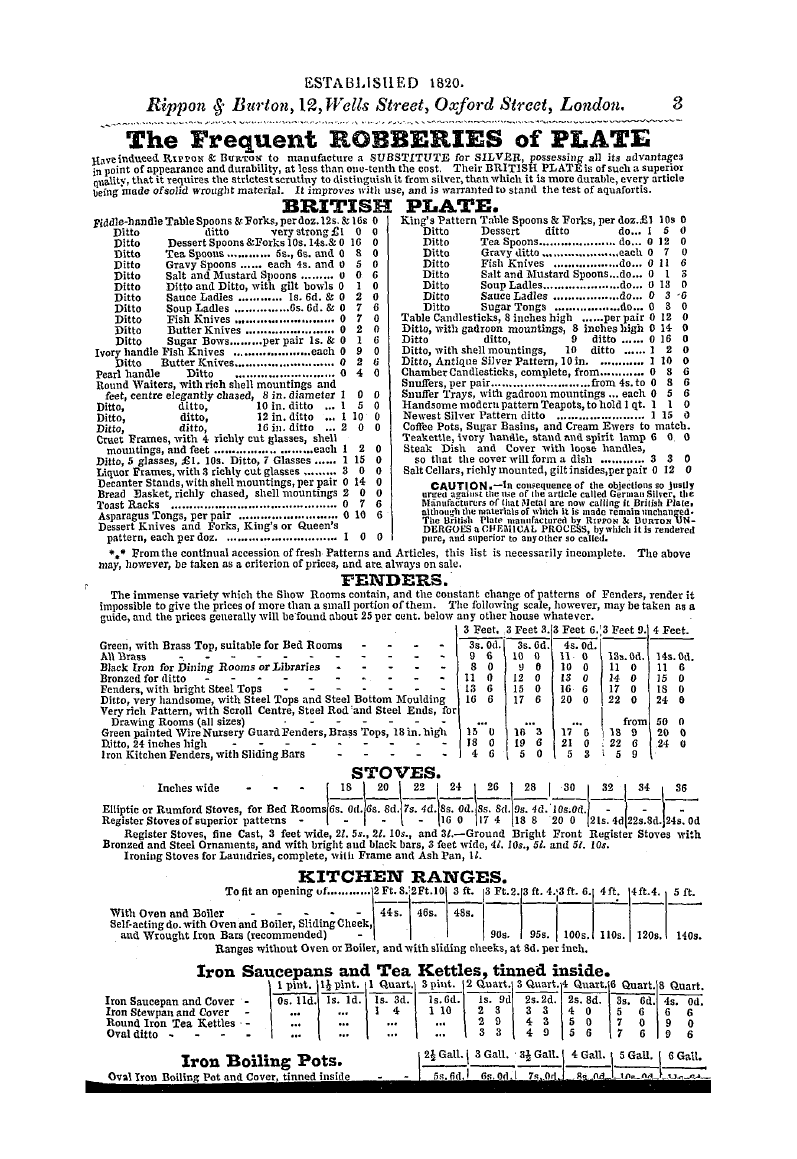Note: This text has been automatically extracted via Optical Character Recognition (OCR) software.
On Freemasonry. Evidences, Doctrines, And Traditions.
The science of architecture is progressive ; and though in point of execution , exhibited in the sculptures of the friezes , metopes , and other details of their sublime edifices , our ancient Brethren of Egypt , Greece , and Rome attained an eminence which it is difficult to surpass ; yet the style was much improved by the Freemasons of the middle ages , as
is evidenced in the religious fanes with which Christendom is graced . And the improvement was effected through the medium of closely tyled Lodges . " The body of Freemasons , " says Hope , " composed of so many lesser societies dispersed and united all over Europe , was alone initiated in all the secrets of the pressure and counter pressure of the
most complicated arches , so essential to the achievement of constructions after the pointed fashion ; and so intricate , that even a Wren confessed his inability to understand all their mysteries ; and kept these secrets from the knowledge of the world at large . " In their zeal for the production of superb edificesthe
, Freemasons did not reject any aid which might be brought into requisition with effect . Thus they formed their style on the just princip les of Greek and Roman architecture ; and added judicious improvements from the Moorish , the
Saracenic , the Persian , the Egyptian , and the Indian systems ; and from these elements they succeeded in constructing a new and attractive style , which was denominated Gothic . In a work which I published some years ago , I have taken a comparative view of the science displayed in the construction of religious edifices by Christian ancl heathen
artists ; and the argument has given predominance to the former . Indeed , our cathedral and collegiate churches generally exhibit a pleasing specimen of that wonderful art and contrivance by which Christian architects have manifested their great practical knowledge of geometry , in a style of building apparentlfantasticamusing the
imaginay , tion of the spectator by its singular decorations , while the constituent parts are disposed to such advantage , as to form one beautiful , dignified , and harmonious whole . If we trace the variety of this singular application of geometrical properties throughout the complicated operations of those majestic edificesthe union of WisdomStrengthand Beauty
, , , will be found complete . An ample base is first marked out , to secure the permanent stability of the fabric ; and instead of a line of dead wall , massive and unsig htly , all the parts of its elevation are subdivided into light branches and abutments , so contrived as to counteract the effect of its per-
Note: This text has been automatically extracted via Optical Character Recognition (OCR) software.
On Freemasonry. Evidences, Doctrines, And Traditions.
The science of architecture is progressive ; and though in point of execution , exhibited in the sculptures of the friezes , metopes , and other details of their sublime edifices , our ancient Brethren of Egypt , Greece , and Rome attained an eminence which it is difficult to surpass ; yet the style was much improved by the Freemasons of the middle ages , as
is evidenced in the religious fanes with which Christendom is graced . And the improvement was effected through the medium of closely tyled Lodges . " The body of Freemasons , " says Hope , " composed of so many lesser societies dispersed and united all over Europe , was alone initiated in all the secrets of the pressure and counter pressure of the
most complicated arches , so essential to the achievement of constructions after the pointed fashion ; and so intricate , that even a Wren confessed his inability to understand all their mysteries ; and kept these secrets from the knowledge of the world at large . " In their zeal for the production of superb edificesthe
, Freemasons did not reject any aid which might be brought into requisition with effect . Thus they formed their style on the just princip les of Greek and Roman architecture ; and added judicious improvements from the Moorish , the
Saracenic , the Persian , the Egyptian , and the Indian systems ; and from these elements they succeeded in constructing a new and attractive style , which was denominated Gothic . In a work which I published some years ago , I have taken a comparative view of the science displayed in the construction of religious edifices by Christian ancl heathen
artists ; and the argument has given predominance to the former . Indeed , our cathedral and collegiate churches generally exhibit a pleasing specimen of that wonderful art and contrivance by which Christian architects have manifested their great practical knowledge of geometry , in a style of building apparentlfantasticamusing the
imaginay , tion of the spectator by its singular decorations , while the constituent parts are disposed to such advantage , as to form one beautiful , dignified , and harmonious whole . If we trace the variety of this singular application of geometrical properties throughout the complicated operations of those majestic edificesthe union of WisdomStrengthand Beauty
, , , will be found complete . An ample base is first marked out , to secure the permanent stability of the fabric ; and instead of a line of dead wall , massive and unsig htly , all the parts of its elevation are subdivided into light branches and abutments , so contrived as to counteract the effect of its per-































































